

How Much Does a Boat Cost in 2024? (With Ownership Costs)
Residents all across the US are buying more boats than ever before. From kayaks and canoes to the most luxurious and opulent yachts, manufacturers are struggling to keep up. But with so many potential buyers being first-timers, the question will inevitably come up, “roughly how much does a boat cost?”
How Much Does a Boat Cost?
What determines boat price, renting vs. buying a boat, cost of owning a boat, total cost of boat ownership.
An average 20’ boat used can often be found for between $10,000 and $20,000. The same boat bought new would likely be $40,000 to $60,000. One of the biggest factors that will impact the price is the style of the boat, with the length of the boat figuring heavily as well.
Buying used boats will always save you money getting the boat into your hands initially, but they will almost always cost more in maintenance and repairs during the term of ownership.
All boats, though, will require maintenance and additional costs associated with ownership. Below is a quick rundown of common boat types and what they can be found for new and used where applicable.
| Boat Type | Common uses | Size | Used Price | New Price | Popular Model |
| Bowrider boats | Watersports, cruising, fishing | Under 20’ | $10,000-$25,000 | $15,000-$30,000 | |
| Pontoon Boats | Leisure, fishing | 18’-25’ | $8,000-$12,000 | $19,000-$65,000 | |
| Fishing Boats | Fishing | 16’-25’ | $5,000-$10,000 | $30,000+ | |
| Cabin Cruisers | Cruising, leisure | 25’-45’ | $100,000 | $250,000+ | |
| Speedboats | Watersports | 20’-30’ | $20,000 | $30,000+ | |
| Cuddy Cabins | Cruising | 18’-28’ | $20,000-$30,000 | $50,000 | |
| Sailboats | Cruising, leisure | 30’-35’ | $20,000 | $80,000+ | |
| Yachts | Leisure, cruising | 30’-100’+ | $150,000 | $250,000+ |
There are several factors that will affect the cost of a boat. Firstly you will need to determine what type of boat you are buying after which it will be a choice between buying used or new. Each will have its own benefits and drawbacks, both short and long term.
The boat price range will also depend on the time of year during which you buy. The same boat, priced at off-season and during full-swing boating season, may have a price that differs by 5%-15%. This can mean a difference of thousands, depending on what type of boat is being shopped.
Other factors that influence the pricing for boats will be the age, the features, the condition, and whether it is being bought from a dealer or a private party. All other things being equal, a boat will generally be cheaper when bought from a private party than from any sort of dealer or marina.
Used vs. New Boats
Many first-time boat buyers find themselves wondering if they should buy a new boat or a used boat. There are several benefits as well as drawbacks for both. Depending on your time and resources, there may be a clear-cut best choice for you, or you may still have to do some thinking.
While the used boat market will definitely save you money initially, which can be incredibly powerful when shopping, you may ultimately find that the boat maintenance cost that you experience is more than initially expected.
This will fluctuate in accordance with the level of care that the previous owner or owners maintained. If you are more budget-conscious, however, a used boat may be best since you can save later by doing your own repairs.
If you have more money than time or patience, the new boat cost may not be that offputting, since it may ultimately mean less repair cost and shop time during the term of ownership. Bear in mind, however, that buying a new boat will not relieve you of routine maintenance like oil changes.
Size and Style
Just like with other vehicles, boats come in different sizes and styles , which affects the boat price. If you are looking for a fishing boat, expect to spend more than a canoe. If you really like the 24’ model over the 22’ model, understand that your sticker price will likely be higher for a base model.
Before you make any final decisions about the size and style of boat you are going to start shopping for, make sure you think hard about how it will be used in the future.
If you plan to take a lot of guests out, make sure you have the capacity for that. If you will only ever take out a maximum of 3 or 4 people, there’s no need to spend a robust sum on something that has 8 seats, when a medium-sized boat will suffice.
Always remember not to buy beyond your experience level. If you are a new boat owner, ideal boats are most likely going to be 15’ to 18’ in length and have a modest engine.
If you get a boat that you aren’t ready to operate in the hopes that you’ll “grow into it” you can be putting yourself in a dangerous situation. Bigger boats also mean increased boat mooring costs.
One of the things that will have the biggest impact on the price of a boat is the feature set that it is equipped with. Boats can have a surprising amount of features, upgrades, and tech gadgets that can add significantly to the cost.
Some of the features that affect the average boat price include cutting-edge chartplotters, built-in media systems, specialty (often LED) lighting, battery chargers and maintainers, swim or diving platforms, hydraulic steering , autopilot functionality, and GPS position holding.
Higher-end boats may even feature additional comfort or even luxury features that greatly increase the boat cost.
This can include things like joystick steering controls, vacuum head systems, custom flooring, countertops, or finishes, satellite weather systems, and even climate-controlled cockpits and cabins.
In many areas, particularly those that incorporate leisure watersports or sport fishing, rental boats may be available. This can be very convenient for those who do not own a boat and can allow you to get out on the water with only the most minimal investment in boat costs.
Some of the upsides to renting a boat include never having to worry about the costs of owning a boat or the time investment of maintenance that the boat will require. This is the perfect option for those who may only get out on the water a couple of times per year, and it removes the burden of off-season storage.
There are some downsides to renting, however. With rentals, don’t have to pay for the cost of boat ownership, but you may not be guaranteed to get the boat that you want, even with reservations. You also generally rent very basic boats that are limited in range and ability. Some rental locations also do not allow nighttime navigation, which can be restrictive.
Boating costs $1,000 to $6,000 in expenses yearly, on average. The costs of owning a boat don’t end with the price of the boat and the first tank of gas. There are significant costs associated with owning a boat, some are costs like taxes and registration that you would have on any vehicle, and some are going to be unique to boating.
If you don’t plan ahead for a lot of the boat ownership costs it can end up costing you more in the long run. Some of the additional things that many beginners don’t think about include:
- Boat fuel cost
- Marina costs
- Boat launch fees
- Seasonal maintenance
- Boat repair costs
- Seasonal storage
- Transportation, in the case of some larger boats
Boater education is incredibly important for the safety and enjoyment of your boating experience. Taking a formal boater education course ensures that you have the foundational knowledge needed to safely and effectively operate your boat. It can also save you a bit on your boat insurance.
Too many first-time boat owners assume that if they buy the boat and are exempt or not required to have a license, that they can just go out and boat.
Many states do not require boater education, but there are also many that do, and if you test and get certified by a NASBLA body, you can use the certificate anywhere.
Requirement : Essential for safe operation Frequency : One time Cost : <$100-$500
Just like your other vehicles, you’ll need to register or license your boat . The fees and process will vary greatly by state, but the fees range from around $20 up to over $200. They will often be determined by the type of vessel and its length, as well as the length of time that the boat is registered for.
Once registered, you will receive some type of registration proof to keep with your vessel. You will also be assigned a registration number that you will need to affix to the bow of your boat with reflective stickers.
Requirement : Required for all powered boats Frequency : Varies by location, from yearly up to lifetime Cost : $20 to $200
Just like everything else in life you will need to pay taxes on your boat. The severity of this tax obligation will depend heavily on where you live. The feds won’t take a cut, but you will need to pay the state as well as any local taxes owed.
The sales tax will only be paid once, and that will happen at the point of sale. The other types of tax that may apply are a use tax, if you somehow avoided paying sales tax, this will be paid to the jurisdiction where the boat is most often used. The personal property tax is the one that will hit you every year, just like any other vehicle.
Requirement : Mandatory for all boats Frequency : Yearly Cost : Varies by location
Maintenance Cost
All boats will need maintenance , which should be expected as part of the cost of owning a boat, regardless of the size or type. However, maintenance costs are one of the costs that can be largely avoided by renting.
If you own your own boat, you will need to plan for maintenance items to be taken care of before and after each outing, some maintenance that will only need to be done a few times per year if you are really active boaters, and some maintenance that is only going to be needed on a seasonal basis.
You will need fresh water flushes, oil changes, steering system inspections and maintenance, deck and seat cleaning and maintenance, hull inspections, propeller inspection and replacement, potential anchor replacement, and more.
Good operation and preventative measures can minimize abnormal maintenance costs.
Requirement : Required on all boats Frequency : Routine and seasonal Cost : $1,000-$6,000
Fuel cost is something that can creep up on you if you don’t stay aware of your boat’s fuel situation. Operating a boat uses fuel, just like any other vehicle. The fuel cost for your boat will be measured in a similar fashion to your car or truck.
Some small, single-person boats can keep an angler on the water all day on just 1-2 gallons of gas or less. Small rental fishing boats may have a 5-gallon tank which is more than enough for them, while the same amount of gas in a boat meant for towing waterskiers or tubes will burn that gas much faster.
Estimate your fuel cost ahead of time by making sure that you are familiar with the consumption rate of your boat. You can also save gas by keeping the revs lower and learning how to properly adjust your trim. Fuel costs may be included in your monthly marina cost as well if you lease space with one.
Requirement : Required in all powered boats Frequency : As needed Cost : Current gasoline market value, plus oil depending on the engine
Boat Trailer and Tow Vehicle
When you own a boat, unless it’s a relatively large boat that cannot be transported personally, you will need a vehicle to tow it and a trailer to put it on. These are essential for nearly all boat owners, though many will not buy a boat if they have to way to move it.
Your trailer must be capable of carrying the weight of the boat and any other cargo on the boat at the time of loading. Trailers must also be frequently inspected to ensure safety and functionality, and in most states, your trailer must be registered just as any vehicle, which can be its own annual expense.
Requirement : Required for all powered boats Frequency : Once Cost : Varies, some boats include, otherwise avg. $3,000
Requirement : Requirement Frequency : Once Cost : N/A
Boat Insurance
When you own a boat you need to protect it, and that means taking out an insurance policy on it. This ensures that if something were to happen to the craft that it would be covered. It is generally illegal to operate a boat without current insurance on it.
Getting insurance on a boat can be a relatively cheap task, particularly if you’ve taken the time to finish a boater safety course and obtain your safety certificate. Most insurance policies for boats will only cost between $20 and $50 per month for average vessels.
Insurance is also vital protection in the event that someone else is injured on your boat. Without insurance, you could face personal liability in the event that something were to happen while passengers were aboard.
Requirement : Required Frequency : Monthly/Quarterly/Yearly Cost : $20-$50 per month
Winter Storage
In most areas, the boating season is only so long and when the weather starts to get cooler it’s often seen as the time to get the boat ready for storage. In many cases with smaller boats, they can be easily over-wintered in the owner’s garage if proper precautions are taken.
Boat owners can also rent an off-season storage space in a facility that will keep them secure and tended. Boats have batteries that must be maintained with charging, and unattended boats are the perfect place for pests and vermin to start to gather.
Having someone manage that for you can take a lot of stress and clutter out of your garage or storage unit. Indoor storage is often more than $50 per square foot of space needed, while outdoor storage can run about half of that.
Requirement : Required in all but equatorial regions Frequency : Yearly Cost : $525-$200 per square foot
Mooring and Marina Fees
This is essential for those who live in areas where you will be boating often and will not want to trailer your boat from storage to the launch each time. If there is a marina nearby, you can often rent or lease a boat slip to park your boat in during the season.
They frequently charge by the size of the boat and the amenities requested, like charging or freshwater supply. Not only do they allow you to keep your boat ready to go out at a moment’s notice, but they often are well-secured and safer than other storage locations.
Requirement : Optional Frequency : Monthly/Yearly Cost : $50-$1,000 per month
Equipment and Accessories
When planning to buy a boat, safety gear should always be considered part of the overall purchase cost.
Paddles, life jackets, signal flares, a horn, and many other things are important to have onboard before you hit the water in your boat for the first time.
In fact, there are some items that are required for you to have at all times.
Required safety equipment:
- Fire extinguishers
- Life jackets and wearable personal floatation devices
- Throwable flotation devices
- Visual signaling devices
- Sound signaling devices
Additional accessories, like lighting, watersports equipment, and stereos are a fun addition to your boating experience, although they aren’t required. If your equipment budget is limited for now, you can always purchase the necessities and add exciting upgrades as you are able to.
Requirement : Some safety equipment is required Frequency : As needed Cost : $500
As you can see, there is a lot more to boat ownership than just buying a boat. The first-time boat buyer, buying a new boat with a trailer for a modest $15,000, and towing it with their existing vehicle, can still expect to spend more than an additional $5,400 the first year alone, expecting minimal maintenance on a new boat.
Buying a used boat may save you on the initial purchase price, but depending on how the last owner treated her you may be in for a lot of shop time.
If you are not a first-time boat owner and you’re looking to try and estimate your yearly ownership costs on a bigger, more expensive boat, there are a few ways you can ballpark that estimate. The most popular is a yearly cost of ten percent of the purchase price, before adding in seasonal storage, which can easily double that number.
Boat price: $15,000 Education: $100 Licenses: $100 Taxes: $30 Maintenance: $1,500 Fuel: $200 Trailer: $0 Towing vehicle: $0 Insurance: $300 Winter storage: $2,500 Mooring: $240 Equipment: $500
How much does a boat cost per month?
If your annual boat maintenance costs you $2,400, for example, that would make your monthly burden about $500.
How much does a boat cost to rent?
You can frequently rent a simple fishing boat for around $400 per 8 hour day, while a pontoon boat may run twice as much, plus fuel.
How much does it cost to dock a boat?
If you rent a boat slip from a marina, you can expect to pay between $100 and $1,000 per month, depending on your boat.
How much does it cost to maintain a boat?
Your maintenance costs will vary depending on boat use, but it will be a significant portion of the yearly cost of ownership.
How much does it cost to own a boat?
The average cost of boat ownership for most fishing or pleasure crafts will be between $1,000 and $6,000 per year.
How much does it cost to own a yacht?
Plan on a yearly cost of around 10% of the value of the boat, so a $10 million dollar yacht will cost about one million per year.
How much does a used boat cost?
Some used boats can be on your trailer heading home with you for a couple of hundred bucks, some others a couple of thousand.
How much does a big boat cost?
Some of the biggest private boats, like large yachts, can cost more than $1,000,000 for every foot of total boat length.
How much does a small boat cost?
Small boats, like jon boats or small bass boats, may only cost a few hundred if bought used on the private market.
How much does a new boat cost?
This will depend greatly on what type of boat you want and what it’s going to be for, the basic boats start around $1,000.
How much does a riverboat cost?
Depending on what you’re looking for in your riverboat you may be able to pay as little as $12,000, though they do go for $40,000 or more in some cases.
How much does a speed boat cost?
A speedboat can frequently be found used for around $30,000 without a cabin. Larger or more powerful boats may have a cockpit.
How much does a motorboat cost?
A run-of-the-mill motorboat will cost you, on average, between $10,000 and $20,000 with more extravagant models going for much more.
How much does a cabin cruiser cost?
The average mid-range cabin cruisers will cost about $250,000 and budget models at about half that amount.
How much does a fishing boat cost?
Fishing boats can commonly be found for around $10,000, increasing significantly with features and options.
How much does a ski boat cost?
The average ski boat will set you back about $150,000, for a common and relatively basic model with average features.
How much does a sailboat cost?
Sailboats range quite a bit in their price, being found on the used market for $20,000 while new ones can cost $80,000 or more.
How much does a yacht cost?
Some basic yachts can be found for $250,000, though most new luxury yachts will cost up to $1 million per foot in length.
How much does a bass boat cost?
Bass boats can range in cost greatly, from budget models starting around $10,000 to high-end tournament fishing boats for $70,000.
How much does a bay boat cost?
If you are looking for a bay boat, you can reasonably expect to pay at least $10,000 for a relatively capable craft.
How much does a bowrider cost?
Some of the more basic bowrider boats will cost $15,000 new, with longer boats or more feature-dense crafts reaching $50,000 or more.
How much does a center console boat cost?
Used center console boats are available on the private market for around $10,000, while premium models and features can cost tens of thousands more.
How much does a convertible boat cost?
New convertible boats can be obtained for as little as $14,000-$15,000, while some models and options packages will push the price well over $50,000.
How much does a power cruiser cost?
The market for power cruisers isn’t cheapest by any means, and a new power cruiser will often be around $100,000 for a relatively basic vessel.
How much does a cuddy cabin cost?
Even the most basic cuddy cabin bought new will cost around $50,000, with options and features boosting the price from there.
How much does a deck boat cost?
Buying a new deck boat will cost you at least $20,000 for basic models, with more powerful or extravagant models pushing $60,000 and more.
How much does a flat boat cost?
Most flats boats can be found for around $25,000-$30,000 from major names, with some being under $10,000.
How much does a high-performance powerboat cost?
New performance powerboats have an average price of around $80,000, however, the average used boat prices are far lower and hover around $30,000.
How much does a house boat cost?
The average cost of a houseboat is usually around $50,000, but you should double-check the marina policies to ensure houseboats don’t incur larger docking costs.
How much does an inflatable boat cost?
For more robust inflatable boats, the average cost is going to be about $1,000, with a range of a few hundred dollars to either side, usually.
How much does a jon boat cost?
If you like cheap boats, a jon boat is perfect and you can usually buy one used for around $500, with brand new boats going for around $1,000 or more.
How much does a pontoon boat cost?
If you are looking for brand new boats, the average boat cost for a pontoon boat will be between $18,000 and $50,000 in most cases.
How much does a catamaran cost?
If you’re looking for a catamaran the average cost of a boat that has been used is around $35,000, and upwards of a million for more serious crafts bought new.
How much does a runabout boat cost?
Runabout boats are incredibly popular and they can start at around $12,000 for a basic starter and up to $80,000 for more opulent crafts.
How much does a trawler boat cost?
Lots of people considering buying a new boat are looking into trawler-type boats and even used they can cost around $13,000.
How much does a walkaround boat cost?
If you are in the market for a walkaround boat, you can plan to spend about $8,000 for a used one on the open market.

Robert Owens is the Chief of Content of Quicknav. Robert has been boating for over ten years and loves to share his experience on the water. His first boat was a dirt-cheap moderately beat up 2003 Bayliner 175, where he learned a tremendous amount about trailering, launching, docking, operating, and maintaining. He currently owns a Cruiser Yacht and is eyeing a sailboat.
Similar Posts
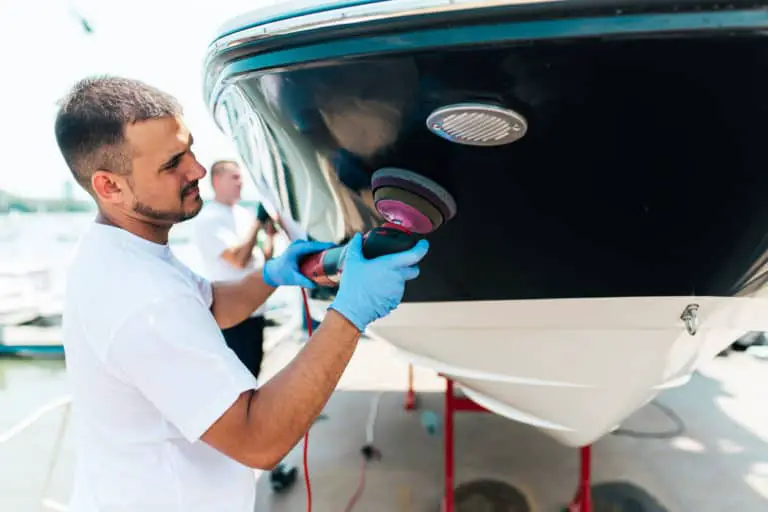
Boat Maintenance: The Definitive Guide (2024)
Many new boat owners are a little intimidated by the thought of the boat maintenance that they need to do….
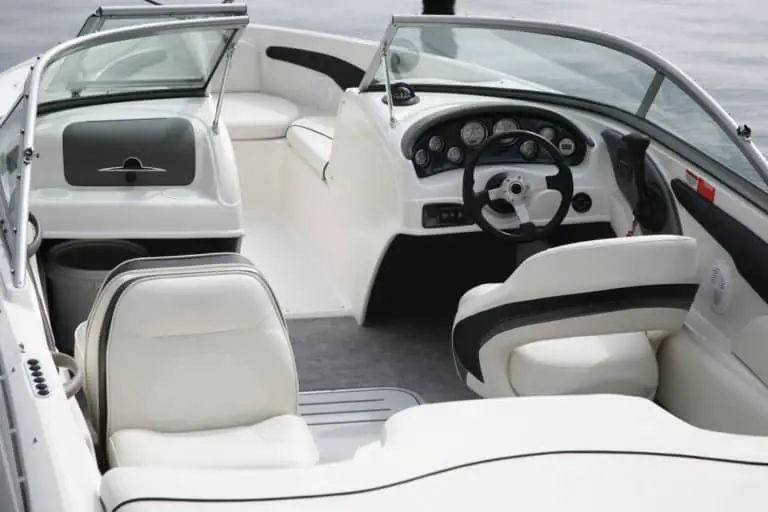
How to Clean Boat Seats? (a Practical Guide)
So you’ve bought your first boat and while you think you can master most of it with ease, you keep…

How to Get a Marine Radio Operator Permit in 2024?
Obtaining your marine radio operator permit from the FCC is only a necessity under certain circumstances (1), but they allow…
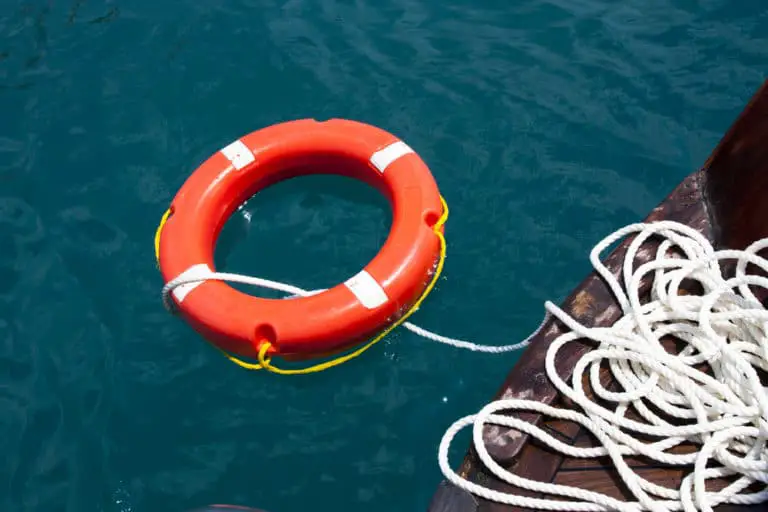
8 Best Online Boating Safety Courses (2024)
Boating can be one of the most enjoyable pastimes, but it can also be deadly. Being familiar with all aspects…
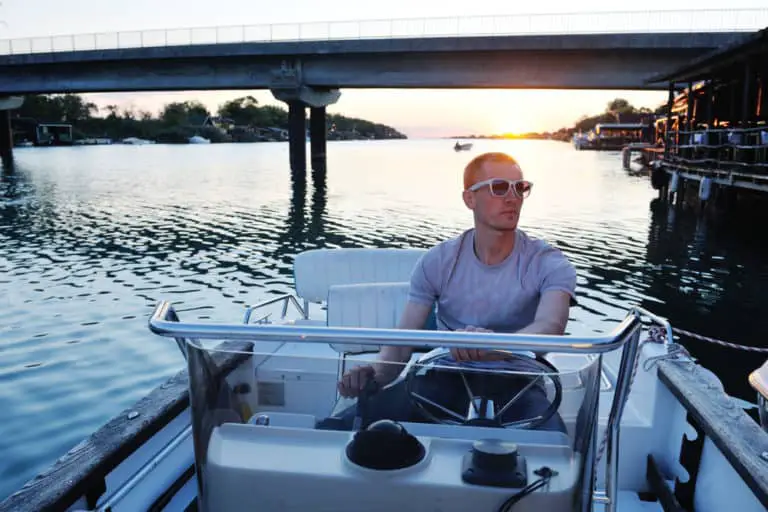
12 Practical Tips to Learn Boating Fast (2024)
For someone who wants to learn boating, it can be a bit intimidating looking from the outside in. You might…
![motorboat cost 15 Tips for Boating at Night [for Safety & Navigation]](https://quicknav.com/wp-content/uploads/2021/09/Depositphotos_272396036_s-2019-768x510.jpg)
15 Tips for Boating at Night [for Safety & Navigation]
As a new boat owner, one of the activities you may be most excited about is your opportunity to experience…
- Boating Safety
- Company News
Experiences
- Destinations
- Boating Regulations
- How Much Does It Cost to Buy & Own a Boat? A Comprehensive Owner’s Guide
Related Posts

Six Reasons to Rent Instead of Buying a Boat

How to Choose the Right Boat - Getmyboat Guide

Finding the Right Fishing Boat for You
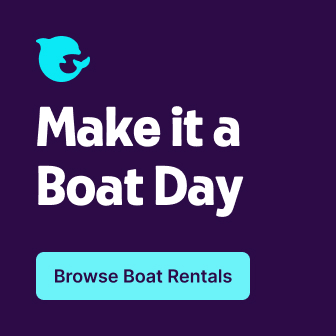
There's a whole lot more to consider than just the purchase price. Here's everything you need to know as you consider the costs of boat ownership.
Owning a boat can provide you with exciting adventures and lasting memories. If you love spending your holidays on the water fishing, cruising, or touring with your family, owning a boat should be on your bucket list. Unlike a rental boat, boat ownership allows you to enjoy a journey whenever you like, with no time limits.
Setting aside the thrill of owning a boat for a moment, can you afford one?
When buying a boat, it’s not only the sales price that counts. You must also consider the average cost of boat ownership, such as fuel, maintenance, insurance coverage, and storage. It would help if you researched all the options before diving into such an investment.
This guide will give you all the information you need to own a boat. Let’s start with some of the things to keep in mind before purchasing a boat.
Table of Contents
Purchase price vs. ongoing costs, are boats a good investment, can i afford a boat, used vs. new boat prices, different boat types & sizes, the best value boats for your money, marinas and storage, equipment & accessories, licenses and education, maintenance costs, the bottom line.
The first thing that comes to mind when considering owning a boat is, obviously, the purchase price — how much are you going to have to pay upfront to buy the boat of your dreams? By making online price comparisons and asking around, you probably already have a rough idea of how much your dream boat costs.
The purchase price of a boat depends on many factors, most significantly the size of the boat, and the type of boat — which can vary drastically depending on whether you want something for the occasional weekend family day on the water, multi-day boat trips, something suitable for large parties, a small and simple cruiser for fishing, or any number of other boat types .

The purchase price can also vary greatly depending on the boat's age and condition. Buying a new boat can range from $500 to $500 million though looking at used boats can offer considerable savings and might enable you to set aside more cash for the inevitable ongoing costs you'll face in the future.
And of course, these prices are highly variable depending on the specific boat features and construction, but the biggest price jumps come when comparing entirely different styles of boat. For some rough ballpark examples, a brand-new cabin-free motorized fishing boat can easily cost up to $35,000, whereas a yacht will run you closer to $250,000 for a used one to $500,000 for a brand-new one.
But, is that purchase price all you need to consider?
Unfortunately, no, it's not. Owning a boat doesn’t end with paying the purchase price . You also have to consider the ongoing expenses, which can cost even more than the initial boat price in the long term. A simple thing such as trailering a boat can add significantly to your ownership cost, depending on how often you do it.
Some additional expenses that come with owning a boat include:
- Maintenance costs
- Storage costs
- Fuel expenses
- Insurance coverage
- Equipment and accessories
- Taxes, title, and registration
- Boat trailing expenses
A boat is a major life purchase, and even if you're not planning to use it for any commercial purposes, it could be considered an investment — and a significant one. But, is it a good investment?
To be frank, no, not really. Many financial experts don’t consider a boat a sound investment because of the ongoing costs of maintaining it. Also, since it is a depreciating asset , many do not view it as a wise purchase because you’ll spend more to own it in the long run. The specifics and calculus of depreciation are complex, and it's worth diving into some of the thorough reports that you can find online — you can try using a boat depreciation calculator , or studying the depreciation of specific boat types .
But wait! Owning a boat is about a lot more than just the financial side of it. If boating is your life's joy and a major part of your lifestyle, overall happiness, and how you like to spend your time, that's a very significant emotional element to weigh against the more cold and unforgiving financial numbers. And consider the other values a boat can bring to your life:
- Personal fun: Some people can’t get enough of water adventures. You need a boat if you love being surrounded by blue skies and water. When personal enjoyment with family and friends gives you that adrenaline rush, no dollar amount can exceed such experiences.
- Commercial value: Owning a boat can provide you with a side income. When you’re not using it for a family adventure, consider renting out your boat for an attractive cost to another family. If you take advantage of the rental feature , you can also offer water tours, fishing, or sporting activities and earn some extra money.
- Resale value: While you will unquestionably take a big hit in depreciation to some degree, you can reduce it somewhat by taking excellent care of your boat and keeping it well maintained. And while you should never expect to be able to recoup all of what you spent on your boat purchase, your boat is still an asset with some resale value, unlike a consumable good.
It's natural to dream, but think carefully: are you really in a good financial position to turn your dream of owning a boat into reality? When you think about the purchase price of a boat and all the expenses of owning one, can you still afford it?
Of course, you need a solid budget before making this huge investment. Aside from the purchase price, list the monthly expenses for repairs, maintenance, insurance, storage, equipment, and accessories. Budget for a certain percentage, such as 20% of the value, to cover these expenses.
Also, think about the face value of your boat. More expensive boats tend to cost more on storage, maintenance, and gas than cheaper ones. If you buy a luxury boat, you’re also buying the life that comes with owning one.
To figure out whether you can afford a boat or not, you have to think about the following factors:
- Your credit score: If you’re securing financing for a boat, you must consider your credit score to know how much you qualify for. If you have a high credit score, you’ll qualify for higher financing and pay a very low-interest rate. A score of 690 or higher will likely get you the best deal.
- Consider your DTI: Your debt-to-income ratio will play another role in determining whether you can afford a boat. To calculate your DTI, add your monthly debt payments and divide them by your gross income. If you get anything less than 43%, you stand a good chance of being approved for a loan to buy your dream boat.
- Your budget: How much you plan on the purchase price for a boat and the ongoing costs is important in determining if you can afford it. Don’t go above your budget just because you can afford it. Sticking to your budget will save you from the looming stress of owning a boat.
Generally, affording a boat means buying and maintaining one well without affecting your living expenses. Consider the initial purchase price, financing implications, and the expenses of keeping the boat on the water. If you find it hard to afford one after reviewing these factors, give yourself more time.
The Upfront Cost
The first thing that comes to mind when you think of buying a boat is the upfront cost. Other things, such as maintenance and fuel, tend to come later. So, what is the upfront cost of owning a boat? And why are boats so expensive?
A less expensive $150 floating boat will do for modest near-the-shore adventures. For a luxury cruise sure to turn heads, budget for thousands of dollars in upfront costs.
The upfront cost of a boat will depend on numerous factors, such as the brand, type, size, and extra features. For example, if you plan to purchase a luxury boat with all the amenities that money can buy, you’ll probably have to pay for an arm and a leg to get it.

You can control the price depending on your primary purpose of using the boat. For instance, you won’t want to spend money on all the technology and luxury amenities to enjoy a simple cruise on a holiday weekend. You can save on various accessories, such as lights and entertainment, if you only spend a short time on the water.
Some of the factors to keep in mind when deciding the upfront cost of purchasing a boat include:
- Brand: Boats are available in different brands, affecting their prices. The cost of a small boat, 6-10 feet, can cost anywhere from $500 to $800. If you’re looking for brand-name superyachts, prepare to spend millions of dollars from the start.
- Style: If you care much about the style of your boat, recognize that the most stylish ones will cost more. Higher-end boats will cost more than less elegant ones.
- Size: If you want a bigger boat for your family and friends, prepare to pay more than you would for a simple one that accommodates three to five people. Any boat over 12 feet will need a bigger engine, which means a higher purchase price.
There’s a huge price difference between used and new boats. Buying a new boat can be more expensive than buying a used one of the same type. Of course, the condition of the used boat will also factor into the price difference versus a new one. A second-hand boat that has only been running for two years will be more expensive than one that has been around for more than five years.
New boats come with luxury features and the latest technologies. They are generally immaculate because they’ve not experienced any wear and tear. The engine is still at maximum working capacity, and other amenities have not been touched. All the shine, beauty, and glamor are much more expensive.
Aside from the higher price, new boats tend to depreciate faster. In the first year of using your new boat, it will depreciate at about 10% and then reduce to around 8% to 6% per year in the subsequent years.
Even though buying a used boat comes with some added risks, used boats are much less expensive than new ones. You can find a good deal on a used boat on classifieds websites like Craigslist, BoatTrader.com, and Facebook Marketplace. Frequently, you can buy a good used boat for less than 50% of the cost of a new one.
Compared to new boats, used boats depreciate at a much slower pace. A used boat has already experienced much depreciation and tends to retain its value more than a new one.
The risk of buying a second-hand boat can include higher maintenance costs. Unless it is well-maintained, you risk buying a boat with pre-existing issues, from appearance and functionality to safety. Buying a new one guarantees peace of mind that you won’t get if you opt for a used one.
Another significant factor determining how much upfront you’ll pay for a boat is its type and size. Boats come in different sizes and types; some might be wildly out of your budget range, and others quite affordable.
Typically, boats are classed by length:
- Class A : 16 feet or under
- Class 1: 16–26 feet
- Class 2: 26–40 feet
- Class 3: 40–65 feet
Many factors will determine the boat size most suited for you, including previous boating experience, storage space, activity, docking space, and budget.
Once you decide on the size, the type of boat you choose is another factor that drives the purchase price. The most common types of boats include:
- Pontoon boats: Many owners start with a pontoon boat to enjoy water adventures. These boats are perfect for fishing or just traveling in the water. They’re not good for water sports because they are very slow. Pontoon boats cost between $10,000-$80,000.
- Sailboats: A sailboat is another common type used for recreational activities such as cruising and racing. These boats are very economical, as you can use the sails and not fuel. You can get a quality sailboat for as low as $5,000.
- Yachts: A yacht is usually associated with luxury and prestige. Yachts have high-end facilities and entertainment features, allowing people to live comfortably inside for lengths at a time. All this luxury does come at a price. A small-sized yacht can cost a whopping $500,000.
- Fishing boats: Buying a fishing boat will ensure you enjoy unlimited fishing adventures. They tend to have a small seating area with an open deck space for storing caught fish. A new aluminum fishing boat can start at $25,000, while a fiberglass boat can range from $32,000-$35,000.
- Speedboats: Speedboats, also known as motorboats, are equipped with engines. Because of its powerful engine, a speedboat tends to go very fast but consumes a lot of fuel. You can get a new speedboat for $30,000-$75,000.
- Cabin cruisers: Cabin cruisers are also packed with all the best features money can buy. They work like mobile mini vacation homes, perfect for family adventures. A new cabin cruiser starts at about $100K and ranges to $500K.
To determine the best value for your money, return to the question, “Can you afford a boat?” Having looked at various boat prices, you can see that some boats are quite affordable, but others are expensive. But no matter how cheap or expensive a boat is, you must still consider the intended use.

For example, you can’t buy a fishing boat for racing. So, even if a fishing boat is cheaper than a speedboat, you’ll still go for the latter because it will fulfill the intended purpose. You won’t get value for your money if you’re buying a boat you won’t use.
So, the best value for your money is one that fulfills its intended purpose. For instance, it won’t matter if you pay a hefty price for a cabin cruiser or a yacht as long as you spend a wonderful vacation with your loved ones onboard. So, when choosing the right boat , consider how it will serve you before considering its monetary value.
The Ongoing Costs
Whether buying a new or a used boat, you must look beyond the upfront costs. Keeping the boat active and ensuring it serves you well come at a cost. Knowing all the expenditures of owning a boat will help you devise a better plan so that these expenses won’t catch you off guard.
So, before buying your dream boat, consider the following ongoing expenses.
Where will you keep your boat when it’s not on the water? If you plan to store it at a marina, you’ll have monthly fees for the storage. Marina costs vary, including indoor or outdoor storage, the storage period, and other services such as cleaning and security.
Storing your boat can range from a few hundred dollars to more than a thousand dollars monthly. For instance, storing your boat at a privately-owned storage facility might cost less than mooring it at a municipal or private marina. Additional fees with boat storage include utility fees, maintenance fees, car parking fees, and live aboard fees.
How much you spend on fuel will depend on a few things: your type of boat, how often you use it, and the specific type of fuel you need. A sailboat will obviously be much more economical regarding fuel, since it can run primarily on wind power. On the other hand, a speedboat will tend to have additional costs because it consumes more fuel to power the engine.
You might also spend more on boat fuel if you carry a huge load or encounter unfavorable sea conditions. And remember that fuel prices often fluctuate with the current economic situation, so plan your boating trips accordingly.
Apart from the fuel, you’ll also have to pay for other operational expenses such as oil, pumps, lights, batteries, and specialized equipment. One thing you can do to reduce fuel costs is to use a fuel consumption gauge. Also, consider buying newer model boats designed for better fuel efficiency.
To take your boat out on the water, you’ll likely equip it with different accessories. Some accessories are for your own use, while others are essential for running the boat.
The good news is that some of these accessories are one-time expenses. However, you must factor them in because they contribute significantly to overall boat costs.
Some accessories and equipment to consider for your boat include:
- Lifejackets
- Fishing tackle
- Watersports equipment
- First aid kits
- Personal locator beacons
- Marina radio
- EPIRB (Emergency Position-Indicating Radio Beacon)
- Extra fishing rod holders
- Fire extinguishers
- Electronics
- Visual distress signal
- Sound-producing device
- Boat cushions
- Tackle storage
Of course, the accessories you need depend on the boat type, your purpose for using the boat, and how long you will spend on the water. Your needs also depend on the season, so you might only need some things at a time. Budget for the equipment as you need it, and treat your boat to an accessory upgrade occasionally.
A boat operator license and a boater’s safety education course are mandatory in many states. When boaters are educated on operating a boat and safety measures, they’ll be less likely to get into an accident on the water.
The weather conditions can change at any time, and it might be difficult to control the boat if you don't have the training you gain from taking safety courses. These courses remind boaters about safety rules, operational laws, and general boating knowledge.
Every state has specific boater education requirements that you should review. Don’t just take the course because it’s a requirement; consider the benefits. You can select online or in-person classes for free or for a small instructional fee.
After training, you’ll also need to pay title fees and registration. Your boat registration is the identification number on its bow. Getting your boat registration and title varies from state to state, so look into your state's requirements. Registration and title costs range between $20 to more than $200, depending on the vessel's type, size, and purpose.
Whether you buy a used or new boat, you have to maintain it well to keep it in good condition and retain its resale value. Boat maintenance includes cleaning, waxing, engine tune-ups, and painting. You might also have to deal with repairs, such as electrical and plumbing issues.
Yearly boat maintenance can cost about 5% to 10% of the boat's total value. The cost might be less or more depending on factors such as frequency of use, boat age, and weather conditions. You can also handle some maintenance issues yourself to save money.
Remember that a new boat will cost less to repair than a used one. However, as the boat ages, it will depreciate and require more maintenance. Also, if you use your boat in freshwater, you’ll save more on maintenance and cleaning than if you use it in salt water.
You need to insure your boat against unexpected occurrences, such as an accident or damage. The right coverage will give you peace of mind whenever you are out on the water or have your boat in a storage facility.
The costs of insuring your boat also depend on several factors, such as the type, size, and frequency of use. Other factors influencing the cost include add-ons such as towing, salvage, docking, and storm coverage.
Boat insurance coverage varies from state to state and with the insurance company you choose to work with. Conduct extensive research and read reviews before choosing an insurer for your boat. Once you identify one, let them give you a quote so that you can estimate your annual premiums and if they fit into your budget.
So, What's the Total Cost?
Buying a boat will be expensive or cheap, depending on what you want and how prepared you are. It’s important to research the purchase of various boat types and the ongoing costs before you make the bold step.
You might pay twice the actual boat price if you calculate annual fuel costs, maintenance, storage, repair, accessories, and more. For example, if you bought a yacht for $250,000, the ongoing costs might add up to $500,000 annually.
Remember, this figure includes one-time costs such as registration, training, and equipment. The amount might not be the same for subsequent years since you won’t have to register your boat again or take certain educational courses.
The total investment also depends on your lifestyle. Apart from mandatory costs, other expenses accompany spending time on the water. These include food, drinks and ice, a tour guide, and other things to make your boat adventure enjoyable. Consider all the factors of owning a boat and fit them to your situation, then calculate your total cost.
Given the fun and memories that owning a boat brings to the family, buying a boat can be a good ‘ROE’ - Return on Emotions. However, if you don’t prepare for all the expenses of owning a boat, you might not enjoy it in the long run. You must research and understand all the costs and aspects of a boating lifestyle.
Remember, you’re not just buying a boat; you're buying the luxury of owning one. You can only enjoy your boat when you’re not stressing about the finances of owning it.
Boat Buying FAQs
How do I determine the cost of a boat?
Boat prices vary by brand, size, and type. You also look beyond the purchase price for ongoing maintenance, fuel, storage, and insurance costs.
Why do boats consume so much fuel?
Boats run on water instead of land, consuming more fuel than cars. Many forces drag it behind, such as wind resistance, waves, and aerodynamics, which contribute to more fuel consumption.
How long does a new boat last?
A new boat can last between 5-50 years. Factors affecting a boat’s lifespan include material (wood, aluminum, or fiberglass), frequency of use, and maintenance.
What is the most expensive type of boat?
A yacht and a cabin cruiser are the most expensive boats, ranging from $500,000 to millions.
Browse Trip Categories
- About Getmyboat
- Media Inquiries
- Terms of Use
- Privacy Policy
- Cookies Policy
- Accessibility Statement
- Member Interface Agreement
- How It Works
- Mobile Apps
- Boat Rentals
- Jet Ski Rental
- Fishing Charters
- Houseboat Rental
- Pontoon Rental
- Yacht Rental
- Sailboat Rental
- Bachelorette Party Boat Rental
- Party Boat Rentals
- Experiences Guide
Popular Destinations
- Lake Travis
- Lake Lanier
- Newport Beach
- Lake Norman
24/7 live support
- Help & FAQs
- +1 818 927 2148
- [email protected]
Real reviews from happy Getmyboaters.

Average Cost For A Speed Boat: (15 Examples)
Buying a boat is always an exciting venture. Add in the sleek, attention-grabbing luxury of a speedboat, and the prospect becomes even more appealing.
The main hurdle for the average adventurer is the cost, which can average around $20,000-$60,000 or more depending on size and age.
Just what is the average cost for a speed boat? In this roundup, we’ll provide you with enough examples to allow you to craft your budget.
Table of Contents
What Defines A Speed Boat?
The immediate and obvious answer would be speed, but the criteria are slightly more complex than that. The term refers to a small boat (typically less than 60 feet long) that’s driven by a powerful engine.
Also, if you are interested in average prices of pontoon boats, check out our article Average Cost For A Pontoon Boat: (15 Examples)
Inboard Vs. Outboard
While there are several different classifications (see the table below), speedboats come in two basic types: outboard and inboard.
As the name suggests, outboard motors are situated outside the boat, usually behind the stern, while inboard engines are placed within the hull.
In general, smaller speedboats (sometimes referred to as “motorboats”) will feature an outboard design, while the larger units with cabins are inboard models.
For example, cruisers (see the table below for more details) are usually equipped with inboard motors, and are classified as speed boats only because they’re not quite large enough to be considered yachts.
Because of their configuration, outboard engines are easier to service. They’re also more convenient, in that they can be lifted entirely out of the water. By contrast, inboard engines are more difficult to access, but they provide a quieter ride.
For a more detailed description of the difference between inboard and outboard motors, take a look at this YouTube tutorial.
Speed Boat Classifications
Before we start talking about prices, you should understand the difference between the various types of powerboats available. Here’s the lowdown on some of the most common ones.
Also, if you are interested in Pontoon Boat costs, check out our article titled Average Cost For A Pontoon Boat: (15 Examples)
| Bowrider | 16-30 ft | Either | Tubing, fishing |
| Bay Boat | 18-24 ft | Outboard | Fishing |
| Bass Boat | 14-20 ft | Outboard | Fishing |
| Center Console | 15-45 ft | Mostly outboard | Pleasure cruising |
| Cruiser | 20-45 ft | Mostly inboard | Multi-day excursions |
| Deck Boat | 25-35 ft | Mostly outboard | Swimming, water sports |
| High-Performance Boat | 25-60 ft | Mostly outboard | Racing |
Important Considerations
Here are a few of the questions you should ask yourself before deciding what type of speed boat to buy:
- Will you be using your boat primarily on lakes or on the ocean?
- How many passengers will you be carrying?
- Do you want to be able to stay on the boat overnight?
- Are you hoping to use your boat for fishing, water sports, or just general exploration?
- Are you an experienced boater or a first-timer?
- Will you ever be operating your boat alone, or do you plan to have company each time you take it out?
- How much can you afford to spend?
The Average Cost For A Speed Boat
To help you get a grasp on the current market, let’s take a look at some of the most popular current speed boat models.
As a rule of thumb, you can expect to spend less on a speed boat that’s designed primarily for fishing or water sports. These typically start at around $20,000, but used models can be found for slightly less.
High-performance speed boats, on the other hand, are much more expensive. As you can see from the table below, these impressive models can run upwards of a million dollars—sometimes several million, if you’re willing to go that far. We’ve included these to illustrate the vast range of options available, but fortunately, you don’t have to be a millionaire in order to own a regular speed boat.
| Bayliner 170 | 2017 | $18,000 | 17 ft 6 in | Outboard |
| G3 Boats Bay 18 | 2019 | $23,500 | 18 ft | Outboard |
| Ranger Z175 | 2017 | $26,000 | 17 ft 6 in | Outboard |
| Bayliner VR5 | 2017 | $27,000 | 20 ft 4 in | Inboard |
| G3 Boats Bay 20 | 2019 | $27,500 | 20 ft | Outboard |
| Chaparral Boats 210 Suncoast | 2018 | $39,000 | 20 ft, 10 in | Outboard |
| G3 Boats Bay 22 DLX | 2019 | $43,000 | 22 ft | Outboard |
| Chapparal Boats 223 Vortex VR | 2018 | $45,000 | 22 ft, 3 in | Inboard |
| Chaparral Boats 227 SSX | 2018 | $51,000 | 23 ft | Outboard |
| Sea Ray SLX 250 | 2018 | $90,000 | 25 ft 6 in | Inboard |
| MasterCraft X-Star | 2020 | $200,000 | 23 ft | Inboard |
| Sea Ray Sundancer 320 | 2018 | $210,000 | 34 ft 11 in | Both options available |
| MTI-V42 | 2016 | $585,000 | 42 ft | Outboard |
| Mercedes-AMG Marauder | 2018 | 1,200,000 | 50 ft | Outboard |
| Midnight Express Pied-a-Mer | 2017 | $1,600,000 | 60 ft | Both options available |
Satellite Costs
Of course, once the ink is dry on your sales agreement, you’ll still have to account for a few sundry expenses. These may include—but are not limited to—the following:
- Boat trailer —You’ll need a way to transport your new craft to your chosen body of water
- Fuel costs —Boat engines run off gasoline, just as car engines do, so this needs to be factored into your annual expenses
- Insurance —While this is only required in a handful of states, it’s always a good idea to have backup in case of an accident
- Mooring costs —This might not be an issue for smaller crafts, but if you’re planning on leaving your boat in the water for the entire season, you should research local pricing in advance
- Storage fees —Unless you live in a warm climate, you’ll need to think about where to store your boat during the cooler months
Your total annual costs will vary, depending on the size of your boat and how you choose to store and transport it.
The price of moorings depends on size and location, usually falling within the $4,000 to $12,000 range for a single year.
Because of this broad price range, you might want to research the marinas in your area to get an idea of how much you can expect to spend.
If you choose to invest in a boat trailer instead, you won’t have to worry about docking fees.
They also have a narrower cost range—you can expect to spend between $2,500 and $5,000 on a boat trailer.
This is typically a less expensive option, as it’s a one-time purchase. However, bear in mind that you’ll be responsible for towing the boat whenever you want to take it out, which can be a hassle, especially with larger crafts.
Finally, remember that speed boats burn through fuel much more quickly than cars do—about 25 gallons per hour, on average.
Assuming that gas costs $2 per gallon (a conservative estimate), this means that a four-hour outing would cost about $200. If you take your boat out about once a week for 20 weeks out of the year, you’ll spend at least $4,000 on fuel alone.
Size Matters
As you can see, smaller speed boats are generally less expensive than their larger counterparts. Storage and fuel costs will be lower, too, which translates into greater exponential savings for as long as you own the boat.
Obviously, this isn’t a hard and fast rule (models from high-end manufacturers and cutting-edge performance boats will cost more, no matter what their size), but if you’re looking for a bargain, you might want to think small.
In Conclusion
Owning a boat is a costly business, but you don’t have to be wealthy in order to make it happen.
The key to any successful purchase is knowledge. If you research the different types of speed boats and make an informed decision about which one would best suit your lifestyle, your investment is bound to pay off in the long run.
Good luck in your search, and may you encounter smooth waters ahead!
Project “ New Speed Boat ” Boating
Check out our article on: Average Cost For A Pontoon Boat: (15 Examples)
Project Boating Editorial Staff
Keep in mind that we may receive commissions when you click our links and make purchases. However, this does not impact our reviews and comparisons. We try our best to keep things fair and balanced, in order to help you make the best choice for you.
As an Amazon Associate, I earn from qualifying purchases.

Unlock the Joy: Discover How Much Does a Boat Cost in 2024? Your Guide to Boat Ownership Costs

Thinking about owning a boat? When it comes to boating, one of the first questions that comes to mind is how much does a boat cost? From my time as a boat owner, I can tell you it varies. Type, size, age, power, features, location – all of these affect the price tag.
But here’s the thing – buying a boat isn’t just about the initial price. Operating and maintaining the boat come into play too. But don’t let this deter you. These are just parts of your boating journey.
In this article, we’ll explore all these costs. You’ll get the inside scoop from my experiences. By the end, you’ll have a full picture of boat costs.
Ready? Let’s dive in.
Table of Contents
How much does a boat cost.
Got your sights set on a boat? Your first question is probably, How much does it cost? Well, the answer isn’t always straightforward. The cost of a boat is a dance between different factors – type, size, age, features, overall condition, location and even the season of the year.
In this article, we’ll cast a wide net over the key cost factors. From the humble fishing boat to the luxury yacht, boats come in a range of styles and, consequently, price ranges. Choosing between new and used also steers the cost in different directions, not to mention the influence of location and your intended use of the boat.
But remember, the sticker price is only a part of the total cost. The voyage doesn’t end there. As with any vessel, there’s maintenance, insurance, storage and those fuel stops to consider. It’s a package deal, and I’am going to unwrap it all for you.
Before we start, remember: owning a boat is one option. Renting or joining boat-sharing clubs might fit your needs just as well. So, let’s dive in and get a clear view of what owning a boat really costs.
Factors That Affect The Boat Purchase Price: A Beginner’s Guide
Before investing in a boat, it is important to understand the factors that affect the boat purchase price. The price tag of the boat depends on several factors. Knowing these variables can help you make an informed decision and ensure you get the most value for your investment. Here are the main factors to consider:
One of the most important factors that will determine its price is the type of boat you choose. There are different boat types available on the market, each with its own unique features and specifications. Let’s not go into details here, as in the next section we ‘ll cover the cost of the most common types of boats available on the market. If you already know the type and size of boat you want feel free to jump to the cost of different type of boats section now.
Let’s dive into how the size of your boat can affect both your wallet and your experiences on the water. The rule of thumb? Size matters! Be it a snug kayak or a luxury yacht, each boat size has its own price tag and charm.
Eyeing up a small boat? Costs can vary. We’re talking under $500 for a basic kayak or canoe. Or maybe you’re after a fishing boat. You’ll be fishing out between $10,000 to $20,000 for one of those.
Think bigger. Picture a versatile pontoon boat . Spanning from 16-30 feet, your bank balance will take a hit of anywhere between $15,000 to $50,000. The price depends on size and features.
Dreaming of a speedboat or a sailboat? Get ready to up your budget. Speedboats, which run from 18-35 feet, start at $20,000 and can skyrocket past $100,000. Sailboats offer a broad price range too – think around $10k for a small, used one to a few million for a 60-footer.
Maybe a catamaran is more your style. These spacious, stable boats can cost anywhere from $25k to several million. Sizes range from 10-60 feet.
Here’s the deal: size boosts price. Sure, small boats are budget-friendly and easy to handle, but if you want luxury and advanced features, be ready to pay up for a bigger boat.
Balance size, cost, and your boating needs to find the perfect fit. And don’t forget the add-ons like winterizing and storage fees. They can really add up! The right boat at the right price – that’s the goal.
Let’s chat about how age affects the cost of your dream boat. Age is key, folks. Think about it like this: newer boats are typically pricier, packed with advanced tech that simplifies handling and upkeep. Dreaming of a flashy speedboat? Get ready to splash some cash for the latest models.
But hey, don’t forget that newer boats also keep their value longer. Planning to sell after a few seasons on the water? You’ll snag a better deal if your boat’s a recent model.
Now, older boats can be a mixed bag. They’ve lived a life, which can mean a lower value and higher maintenance costs. It’s like with cars – the older they get, the more tender, loving care they need. It might be repairs or winterizing costs; age bumps up these expenses.
But hey, don’t write off all old boats. Some have been treated like royalty and despite their years, they’re as pricey as a new model, especially those revered “classics.” And on the flip side, you might stumble upon a neglected, newer boat that’s lost its value.
Bottom line? Age and cost aren’t straightforward. It varies from boat to boat. Considering the boat market? Do your homework, chat with experts, and figure out a fair price. Whether you’re dreaming big with a yacht or picturing lazy lake days in a small boat, understanding the role of age in pricing is crucial for your boating investment.
So, you’re thinking about buying a boat. The engine you pick is going to have a big impact on the price. Not just the sticker price, but also how much it costs to run over the long haul.
First thing to think about is whether you want an outboard or inboard motor. Outboard motors are generally cheaper and easier to look after, while inboard motors have more grunt and use fuel more efficiently. But remember, inboard motors need regular check-ups like winterizing, so keep that in mind when working out your budget.
Another thing to consider is horsepower (HP). The more HP your boat has, the quicker it’ll be, but it’ll also burn through more fuel. For instance, a little fishing boat with a 50 HP outboard motor might set you back around $8,000. But if you’re after a bigger speedboat with a 300 HP engine, you’re looking at well over $100,000.
The type of boat you want is going to help determine how much power you need. A pontoon boat doesn’t need as much HP as a speedy sports boat or fancy yacht. For a decent pontoon boat, you’ll probably spend between $15k-$30k.
And if you’re into sailboats instead of motor boats, you don’t need to worry too much about power. These boats mainly use the wind, which can save you a lot in operating costs compared to gas or diesel-powered boats.
We have a section for the different types of boats below. Feel free to jump to that section if you are after more details.
When you’re choosing your boat’s power, think about what you’ll be using the boat for, and how often. The price tag is just part of the story – you’ll also need to budget for things like fuel and maintenance.
Check our Boat Maintenance Made Easy Guide for more details.
When it comes to boats, it’s not just about how big or how powerful they are. The features they come with can also add to the price. These are things that make your boating experience even better.
Boat features come in all shapes and sizes. Some are essential, some are nice to have. And how much they cost depends on things like the type of boat, its size, age, and where it’s located.
Bigger boats usually have more features, which can push up the price. Take a luxury yacht, for example. They usually have all kinds of built-in extras, like a kitchenette for cooking and eating, fully stocked bars, and entertainment areas with video screens or sound systems.
Power and speed also play a part in the price. Bigger engines mean more fuel, which means higher costs over time. So it’s important to think about how much horsepower you need before you make your decision.
If you’re looking at a smaller boat like a pontoon or fishing boat, the features you’ll need are a bit different. Things like rod holders and built-in tackle storage are more important. And although these boats don’t have as many features as bigger boats like yachts, they can still be a lot of fun without costing an arm and a leg.
If you prefer sailing or kayaking in quiet waters, the basic features you need are more about safety – things like life jackets and paddles. Cabin cruisers are great for longer trips with family or friends. They have everything you need, including water heaters for hot showers!
When you’re working out what you can afford, think about what features you really want. From basic safety gear to fancy extras on high-end boats, there are loads of options out there. So make sure you know what you want before you part with your hard-earned cash.
Your boat’s location can really change its price. Live near a big body of water? Chances are boats cost more there compared to inland areas. This is because demand affects pricing, and it varies by region.
So consider where you’ll keep your boat. If you’re coastal, a sailboat might be cheaper than inland, thanks to more sailing opportunities. Coastal spots also have more marinas with various amenities. Marina fees do change by location and usually cost more where there’s lots of boat traffic.
Also, remember that some waters have rules about what boats you can use. Certain lakes don’t allow motorized boats or have horsepower limits.
Should you decide to store your boat at home and use local boat ramps for launching, remember to account for the costs associated with operating and maintaining the trailer. While these expenses are typically minimal, they are still important to factor into your overall budget.
Location also changes your boat’s upkeep cost. Living in hurricane-prone areas like Florida requires considering extra costs for insurance and potential boat relocation and storage as part of your hurricane preparation process . In colder regions, winterizing the boat adds additional expenses.
And if you’re planning to store your boat at a marina when you’re not using it, storage fees will also vary by location. So before buying, think about where you’ll use your boat most and what maintenance and storage will cost there.
If you’re not a frequent boater or don’t want to deal with upkeep, renting might be a better option. You can usually find rentals at local marinas.
Season of the Year
Seasons also play a role in boat prices. Like everything else, boat sales have their peaks and lows, and prices shift based on demand.
Boats usually cost more during the boating season, which changes by region. In colder areas like the Northeast US or Canada, people boat most during the summer. So boats might cost more during the season. But in warmer places like Florida or California where you can boat all year, prices might not change much with the season.
So timing your boat buy can make a difference. Lots of dealers and manufacturers have end-of-season sales to clear inventory before winter. This can be a good time to buy since prices might be lower than in peak season. And if you’re looking at used boats, remember that seasonal changes matter there too.
For instance, if you’re after a sailboat and live where sailing is summer-only, sellers might offer better deals once winter hits and demand drops. Remember that upkeep costs can also change with the seasons. Boats need winterizing to protect their engines and systems from freezing in cold months.
So if you’re buying a yacht or small yacht, remember to budget for winterizing costs. While many things change boat prices throughout the year, you can usually find discounts if you buy out of season. So plan your purchase carefully.
If you’re not in a hurry to buy and want the best deal, waiting for end-of-season sales can be a good move. But remember that whenever you buy or rent, owning any boat comes with costs like insurance, maintenance, and storage fees.
Used vs New?
If you’re on the hunt for a boat, one big question is: new or used? Both have their pros and cons. New boats sure aren’t cheap, but you get warranties and manufacturer guarantees. And if you want a custom yacht packed with the latest tech and features, you might need to go new.
Used boats, on the other hand, can be a real bargain. With a little patience and research, you can find well-maintained used boats at excellent prices. Plus, you’ll find more variety in style and size in the used market.
But before you choose new or used, ensure everything works right—both mechanical parts and safety gear like life jackets. For used boats, look for damage or wear on items like sails or rigging, which can cost a bundle to fix. Also, consider how much the boat’s been used, because even well-cared-for boats might need expensive repairs if they’ve seen lots of action.
As a general rule, if your budget can take it, go new. You’ll know exactly what condition your boat is in. If money’s tighter, be patient when shopping. Don’t grab the first deal you see—waiting for better offers could save you money.
Whichever boat you choose, whether new or used, remember to factor in ownership costs like maintenance, repairs, storage, insurance, and fuel.
The choice between new and used will come down to your preferences and budget. But whether you want a sailboat, motorboat, or even a super yacht, do your homework before deciding. Consider things like condition, usage history, and price. That way, you’ll find the perfect vessel for your needs and budget, without breaking the bank.
Depreciation and resale value
When buying a boat, keep in mind its depreciation and resale value. Depreciation is how much a boat’s value decreases over time. Resale value is how much you can sell it for. These factors greatly impact the total cost of owning a boat.
Lots of things affect depreciation, like the boat’s type, age, features, and location. High-end luxury boats like super yachts usually depreciate faster than smaller boats like pontoon boats or catamarans. They’re pricier to maintain and need specialized knowledge and equipment for repairs. Plus, older boats might be less appealing because of wear and tear or outdated features.
Resale value is trickier to predict because it depends on factors like market demand for certain boat types. How well a boat has been maintained or winterized will also influence its resale price. Upgrades, like new electronics or an updated engine, can also increase your boat’s value when you’re ready to sell. But not all upgrades add the same value—some might barely affect resale value, while others can give it a significant boost.
Remember, depreciation and resale values differ a lot between boat types. Large yachts might lose much of their original purchase price over time because of high maintenance costs. Small fishing boats might be cheaper upfront but will still depreciate over time, even just from normal wear and tear.
So understanding depreciation and resale values before buying can help you make an informed decision. Consider what boat type fits your needs and budget so you can maximize your investment.
Cost of Different Types of Boats
When it comes to buying a boat, there are many types of boats available and each has its own price range. The cost of a boat can range from a few thousand dollars to millions of dollars for luxury yachts.
Some of the most common types of boats available on the market are:
Pontoon Boat Cost
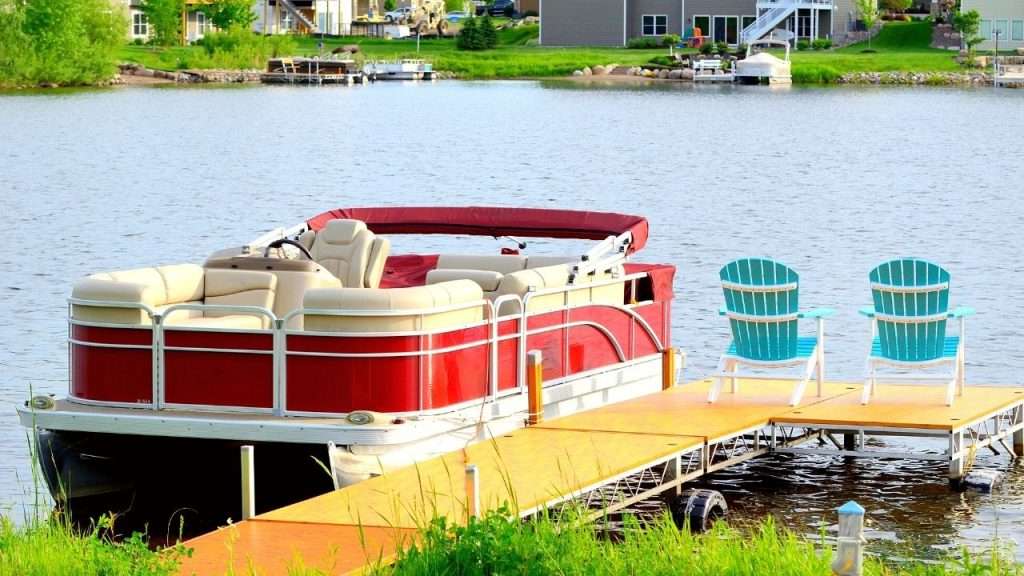
Pontoon boats, known for their spaciousness, stability, and ability to accommodate a large group of people, are the perfect choice for those seeking a leisurely ride on the water. With their generous pontoon width , these boats provide ample room for relaxation, socializing, and enjoying the scenic beauty around you.
When it comes to purchasing a pontoon boat, prices can vary depending on several factors such as size, type of motor and accessories included. A small new pontoon boat can cost around $20,000 while larger pontoons with more powerful engines and luxury amenities can cost upwards of $100,000.
Typically, a standard 22-foot pontoon boat with an average engine will cost around $35,000. One factor that affects the price of a pontoon boat is the type of motor it has.
Pontoon boats typically come with either an outboard or inboard engine. Outboard engines are mounted directly to the transom and tend to be less expensive than inboard engines which are located inside the hull.
Another factor that affects the price is whether you opt for a new or used pontoon boat. Used pontoons can be significantly cheaper than new ones but may require additional maintenance costs in order to keep them running properly.
In addition to the initial cost of purchase, there are additional costs associated with owning a pontoon boat such as storage fees and maintenance costs. Typical maintenance costs include changing oil and filters regularly, winterizing during colder months and cleaning the exterior after each use.
When it comes to safety features for your pontoon boat, investing in items such as life jackets and emergency kits should not be overlooked. Life jackets range from relatively inexpensive options starting at around $20 per person up to top-of-the-line models costing hundreds of dollars per jacket.
Overall, when considering purchasing a pontoon boat it’s important to weigh all factors including size, type of motor and accessories included before making your decision. While they may have upfront costs associated with their ownership such as winterization expenses or storage fees – owning one can provide endless hours of enjoyment on the water.
Fishing Boat Cost
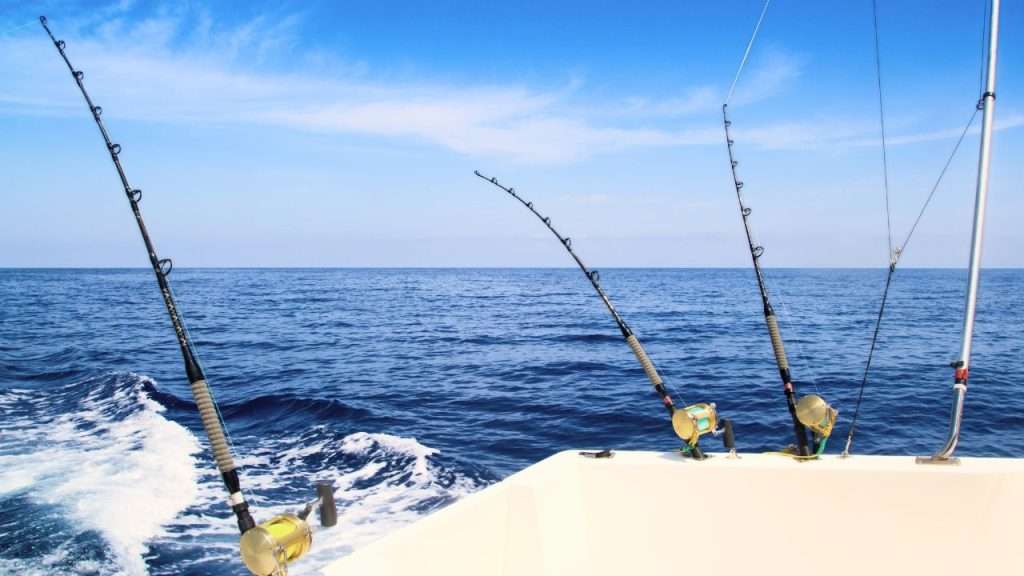
Looking for a fishing boat? One of the most popular types of boats, fishing boats come in a wide variety of sizes and prices. If you’re considering purchasing a fishing boat, here’s what you need to know about the cost.
First off, how much does a fishing boat cost? The answer is that it can vary widely depending on the size, materials, and features included.
A basic aluminum fishing boat can be purchased for under $10,000. However, if you want a larger fiberglass model with more advanced features like fishfinders and livewells, you could easily spend upwards of $50,000 or more.
When shopping for a fishing boat, it’s important to consider what kind of fishing you’ll be doing. Do you plan on taking your boat out on calm rivers and lakes to catch smallmouth bass?
Or are you hoping to venture out into deeper waters to catch larger fish like marlin or tuna? The type of fishing will determine what size and style of boat will work best for you.
If you’re looking for something smaller than a full-size fishing boat but still want to get out on the water, consider looking into kayaks or canoes designed for anglers. These smaller vessels can be purchased new starting around $500 or less.
You could also look at used models if price is an issue. For those who don’t want the hassle and expense of owning their own boat but still want access to one for occasional use – consider joining a boating club.
For an initiation fee ranging from $2k-$5k plus monthly maintenance fees ranging from around $300-$700 per month (depending on location/boat type), members have access to boats in dozens of locations around the country without having to worry about maintenance costs or storage fees. – when it comes down to it, there are plenty of options available when it comes to purchasing a fishing boat at a variety of price points.
Before making a decision, take some time to consider what you’ll be using the boat for, your budget, and any additional expenses that may come with boat ownership (such as storage or maintenance costs). With a little research and some careful consideration, you can find the perfect fishing boat that fits your needs without breaking the bank.
Aluminum Fishing Boat Cost
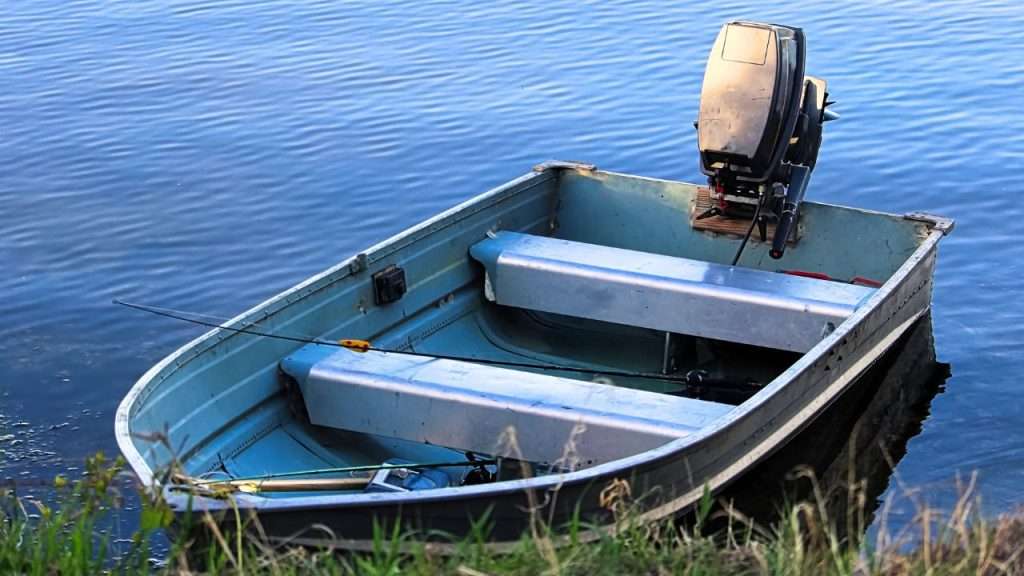
Fishing boats can range in size and style, and one of the most popular fishing boats out there is the aluminum fishing boat.
These boats are favored for their durability, lightweight nature, and low maintenance costs to keep it looking great . The cost of an aluminum fishing boat can vary depending on several factors.
Firstly, the size of the boat plays a significant role in determining the price. The bigger the boat, the more expensive it will be.
Aluminum fishing boats typically come in sizes ranging from 12 feet to 24 feet. A smaller aluminum fishing boat may cost around $2,000 to $5,000, while a larger one may run up to $30,000 or more.
Another factor that affects the price of an aluminum fishing boat is its features and accessories. A basic model with no frills or upgrades will be less expensive than a fully loaded model with all kinds of gadgets and add-ons.
Some common accessories for these boats include trolling motors, fish finders , navigation equipment, rod holders and live wells. Furthermore, brand name also plays a role in pricing an aluminum fishing boat.
Some brands offer higher quality materials or innovative designs which can drive up prices. However, more affordable options like Lowe Boats or Tracker Boats still offer reliable models at lower prices when compared to premium brands like Lund or Crestliner.
When considering whether purchasing an aluminum fishing boat is worth it for you it’s important to remember that owning this type of vessel entails other costs as well such as maintenance expenses including winterizing costs for colder climates adding another few hundred dollars to yearly expenses.
Overall if you’re looking into buying an inexpensive option for weekend angling adventures then aluminum fishing boats are definitely worth considering as they offer excellent value without breaking your bank account compared to other options such as super yachts or luxury sailboats which could cost millions!
Speedboat Cost
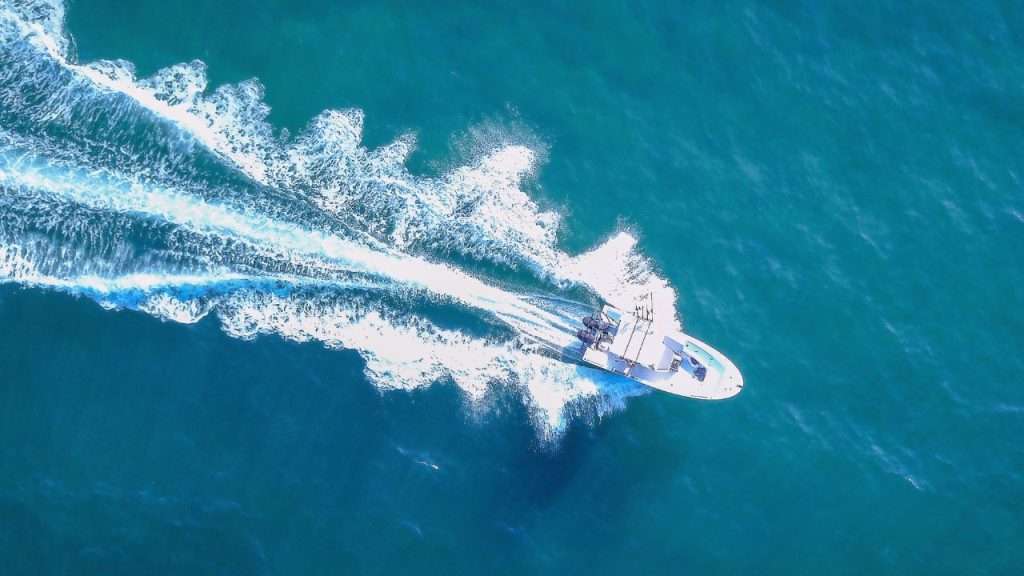
If you’re looking for a boat that is perfect for water skiing or just cruising at high speeds, a speedboat might be just what you need. But before you go out and purchase one, it’s important to understand how much does a speed boat cost.
The cost of a speedboat can vary widely depending on the size, model, and features. A basic entry-level model can cost as little as $10,000 while larger models with more features can cost upwards of $100,000.
The average cost of a new 20-foot speedboat is around $30,000. One thing to keep in mind when considering the cost of a speedboat is that they are not very fuel-efficient.
Depending on the size and engine power, the fuel consumption can be quite high. It’s important to budget accordingly for fuel costs when owning a speedboat.
If purchasing a new speedboat is too expensive for you, you may want to consider purchasing a used one instead. Used boats are often much cheaper than new ones and may have already been upgraded with additional features.
You may also want to consider renting a speedboat if you’re only going to use it occasionally or don’t want to commit to owning one long term. However, it’s important to note that rental costs can quickly add up if used frequently.
Overall, the cost of owning a speedboat should be considered carefully before making any decisions. While they provide an exciting boating experience and plenty of fun on the water, their ongoing expenses can add up quickly if not planned for properly.
Jon Boat Cost
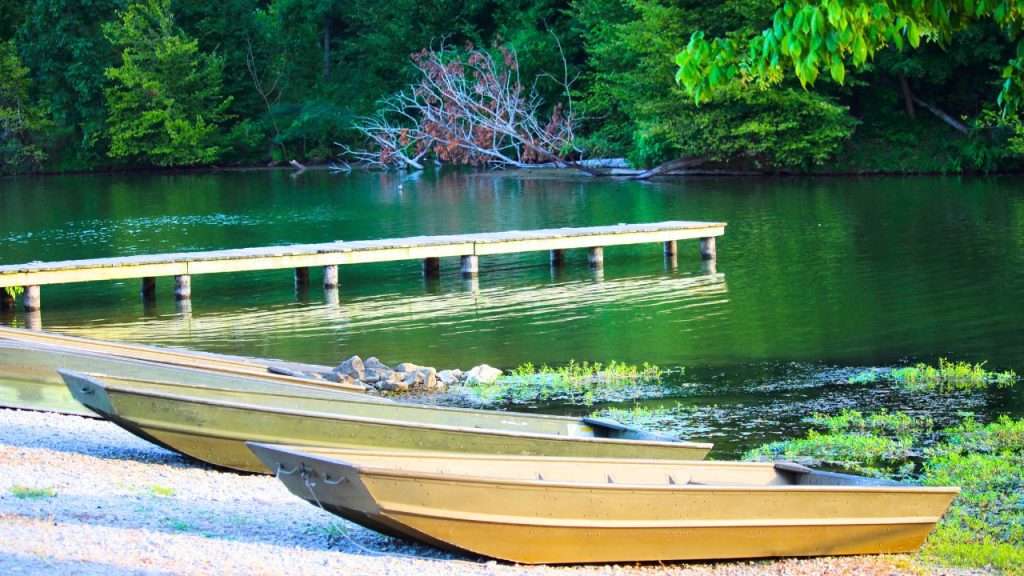
If you’re looking for a small, affordable boat that can get you where you need to go, a versatile Jon boat might be the perfect choice.
So how much does a Jon boat cost? A new Jon boat can range from around $1,500 to $5,000 depending on the size and features.
However, you can often find used ones for much less. One of the biggest advantages of a Jon boat is its simplicity.
They’re not designed for speed or luxury but rather for practicality and durability. They tend to be made with rugged materials such as aluminum or fiberglass that require little maintenance.
Another advantage is their versatility. You can use them for fishing, hunting, pleasure cruising or even as a workboat.
They’re also great for exploring narrow streams and shallow waterways that larger boats can’t navigate. However, there are drawbacks to consider when it comes to Jon boats as well.
Firstly, they tend to have limited space compared to larger boats like pontoon boats or sailboats. Secondly, they don’t come with many amenities which could make them less comfortable than other options.
In terms of operational costs with a Jon boat- because they’re small and lightweight they typically don’t require very large engines which makes fuel costs more affordable than larger boats such as yachts or super yachts which require thousands of gallons of fuel just for one trip! Additionally, winterizing this type of boat is quite simple since most models are made from materials that don’t easily suffer damages due to freezing temperatures.
Ultimately whether or not a Jon boat is right for you will depend on your needs and budget. If simplicity and affordability are important factors in your decision making process then this type of vessel could be a perfect fit!
Bowriders Boat Cost
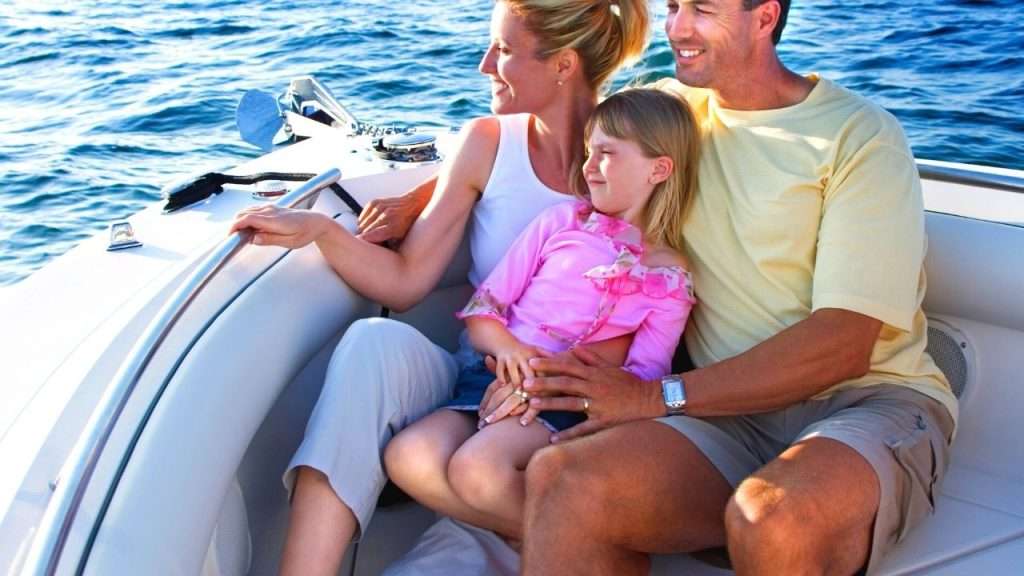
Bowriders boats, known for their versatility, friendly features, and sporty design, are often considered one of the best family boats due to their ability to accommodate various activities and provide an enjoyable experience for all members of the family.
They are great for water sports like wakeboarding, skiing, and tubing. But how much does a bowrider boat cost?
Well, the answer is not simple because it depends on several factors like size, age, brand, model, and features. The average cost of a new bowrider boat ranges from $20k to over $100k depending on the size and features.
For example, a small 18-foot bowrider with basic features like swim platforms and stereo system with marine speakers costs around $25k to $30k. On the other hand, a larger 28-foot bowrider with advanced features like GPS navigation systems and premium upholstery could cost over $100k.
If you’re looking for a used bowrider boat, the price varies widely depending on the age of the vessel and its condition. A used 20-foot bowrider from an average brand could cost around $10k to $15k if it’s in good condition.
However, if you want a used high-end model with all the bells and whistles in perfect condition that still has some value left in depreciation terms could easily cost you north of $80-90K. It’s important to note that maintenance costs also play a significant role in owning any kind of boat.
Buying a new boat can be expensive upfront but comes with fewer maintenance costs compared to buying an older vessel. You don’t want to end up spending more money than your budget can accommodate just because you didn’t consider maintenance costs when purchasing your dream boat.
Another thing buyers need to consider is storage fees; whether they will be storing them for winter or just finding mooring places during boating season when not in use. Bowrider boats are popular for their versatility as they offer recreational opportunities while providing roomy seating. They are relatively affordable and come in many different sizes and shapes to cater to different users’ needs.
While buying a new model can be costly, purchasing a used one can save you money, but you need to factor in the maintenance costs and storage fees before making your final decision.
Fish & Ski Boats Cost

Fish & Ski boats are versatile boats that can be used for a variety of activities. These boats not only offer excellent fishing capabilities but also provide water sports fun.
Fish & Ski boats come in different sizes, ranging from 16 to 24 feet and are available in both new and used models. The cost of a Fish & Ski boat depends on factors such as the size, power, features, and the age of the boat.
For a new Fish & Ski boat, expect to pay anywhere between $25,000 to $50,000 or more depending on the make and model. Some high-end models can cost as much as $75,000 or more.
However, if you prefer a used Fish & Ski boat with good features and condition but at a lower price point than new ones, you can get one for as low as $8,000 – $15,000. When it comes to power options for Fish & Ski boats, most come with outboard engines that range from 90 horsepower to 250 horsepower.
The engine power also plays an important role in determining the overall cost of the boat. A higher horsepower engine will have better performance capabilities but will increase its price tag.
While considering the cost of your Fish & Ski boat purchase don’t forget about additional costs such as financing fees (if you choose to finance), insurance premiums which depend on factors such as your age and driving experience; maintenance costs including winterizing expenses; storage fees which vary depending on location; fuel costs which vary based on distance traveled; registration fees which range from state-to-state. When planning to buy a Fish & Ski Boat consider your budget along with other important factors like engine size and fuel economy before making your final decision.
Although prices vary depending on numerous variables including model type and year made etc., an average price range would be around $10k-15k for used models and $25 to $50k for a new Fish & Ski Boat. While you may also consider other types of boats like catamarans, yachts or pontoon boats, it’s important to choose the type that is best suited for your needs and budget.
Deck Boats Cost
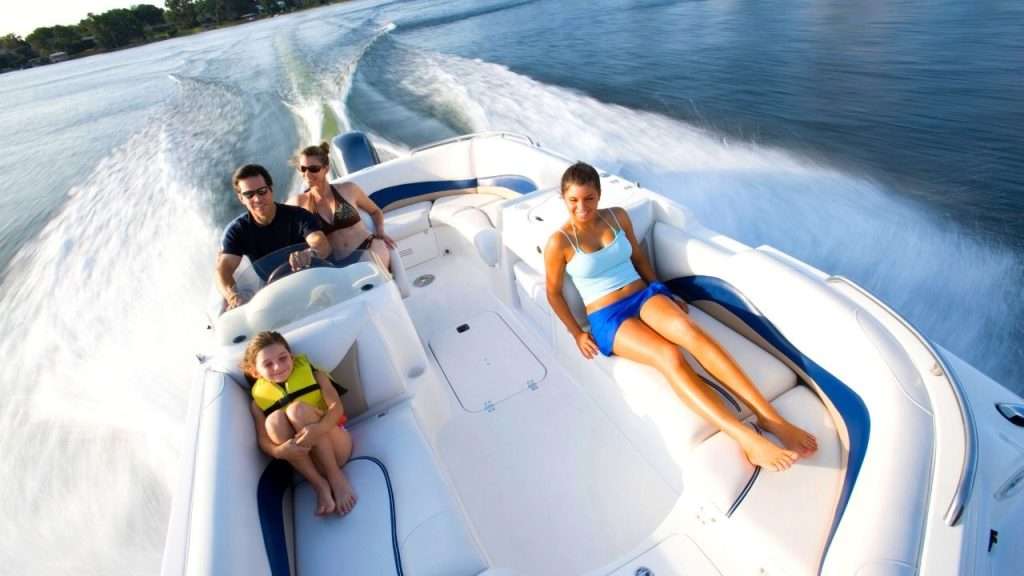
Deck boats are another popular type of boat that combines the attributes of a pontoon and a motorboat. They have an open deck area, which is perfect for sunbathing or socializing with friends and family.
These boats are versatile and come in different sizes, materials, and designs. When it comes to cost, deck boats can be expensive or affordable depending on the features and specs.
A regular 20-foot deck boat can range from $25,000 to $40,000. The price will vary based on factors such as brand name, model year, engine power, number of features included in the package (such as entertainment systems or navigation equipment), and location.
Boats like these come with powerful engines that allow them to travel at high speeds over long distances. One question commonly asked is how much does it cost to rent a deck boat?
Well, this mostly depends on where you live and how long you plan to rent it for. Rates for larger models can start from around $200 per day but can exceed $500-600 per day during peak seasons or around holidays.
Generally speaking – If you’re looking for an affordable option that has most essential features included without breaking the bank then look no further than smaller used models as they present an entry-level option with decent performance capabilities at lower cost points compared to newer models.
Buying a deck boat requires careful consideration of your budgetary restrictions coupled with your expectations, if your desires are luxury-oriented then expect costs to escalate quickly.
Leasing and renting deck boats are great options if you’re not a frequent boater and want to save on maintenance costs. Make sure to factor in the hidden expenses of owning a boat such as winterizing, repairs, and storage charges – these can add up quickly over time!
Jet Boats Cost
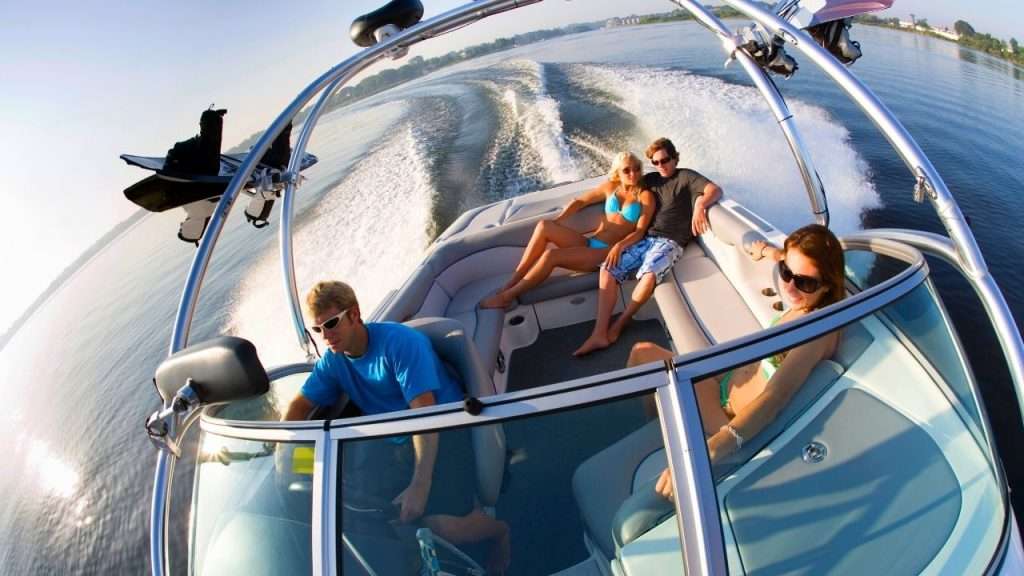
If you’re looking for a boat that can go fast, then a jet boat might be just what you need. These boats have a smaller hull design and are powered by water jet propulsion.
They are great for people who want to experience the thrill of speed on the open water. The cost of jet boats can vary depending on many factors such as size, brand, age, and features.
On average, new jet boats can cost between $35,000 to over $100,000. Used models can be found for as low as $10,000 but could require more maintenance.
When considering the size of your jet boat purchase, it is important to keep in mind that larger vessels usually come with larger price tags. Jet boats range in size from 16 feet up to 28 feet or more.
The price will typically increase with the size of the boat. Another factor to consider is brand.
Some of the most popular brands include Yamaha and Scarab. However, there are several other high-quality brands available in today’s market.
If you’re interested in purchasing a new jet boat but don’t want to pay full price upfront, financing options are available through various lenders such as banks or credit unions. Many dealerships also offer financing plans directly to buyers.
When it comes time to actually own your jet boat and use it regularly on the waterways near you, it’s essential not only to purchase insurance coverage but also budget for routine maintenance checks along with regular upkeep costs (such winterization fees). Keep this in mind when planning your overall budget and enjoying your newfound love for life out on the water!
Cabin Cruisers Cost
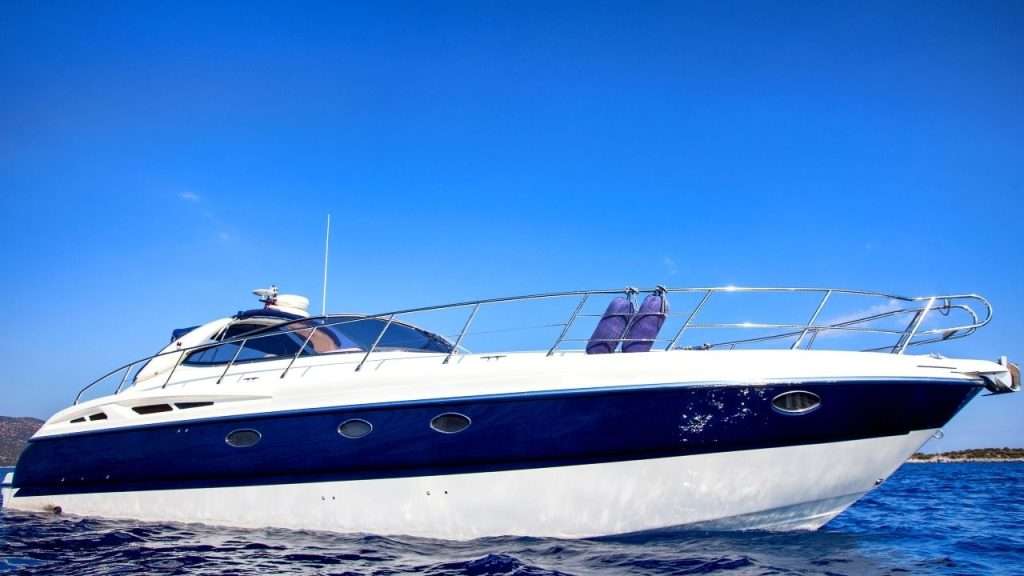
Cabin cruisers are boats that come with an enclosed cabin for overnight stays.
They offer great comfort, privacy, and storage space. These boats have a lot of amenities and features for a luxurious boating experience.
The cost of buying a cabin cruiser varies depending on the size, make, model, age, and condition of the boat. A new cabin cruiser can cost anywhere from about $100,000 to $1 million or more.
The price range for used cabin cruisers is broader than that of new ones since it depends on different factors such as type and age. On average, a used cabin cruiser can cost around $50,000 to $500,000.
Cabin cruisers are typically larger than other boat types like speedboats or pontoon boats; hence they require a larger engine to power them. As such, fuel consumption is typically higher in these boats.
It’s essential to research the approximate fuel consumption rate of the model you’re interested in before making any purchase decision. Storage and maintenance costs also contribute to the total cost of owning a cabin cruiser.
You may need to keep your boat docked at a local marina when not in use or invest in constructing an appropriate storage facility at home if you’ve got enough space. When determining the total cost of owning a cabin cruiser over time as opposed to renting one occasionally from places like Freedom Boat Club or other rental services companies; there’s no clear-cut answer due to several variables involved.
Purchasing a cabin cruiser is not just about how much it costs but also about considering all additional expenses like insurance coverage costs (which depend on various factors such as location and type), maintenance costs (including winterizing), docking/mooring fees (which vary by season).
However expensive they may be initially though; these boats provide significant ROI when it comes to creating unforgettable memories with family and friends while enjoying life on water without relying on boat rental services.
Center Console Boats Cost
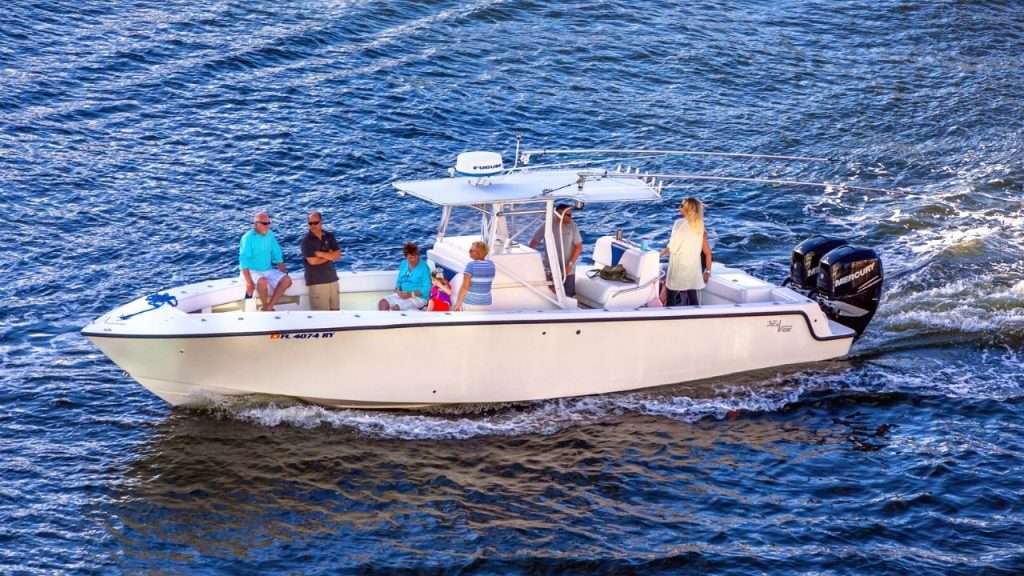
Center console boats are a popular choice for those who want to enjoy water sports, fishing or just cruising around the water. These boats come in a variety of sizes and prices depending on the features you want.
The average cost of a new center console boat can range from $40,000 to over $500,000. However, there are some factors that can affect the price of a center console boat.
The size of the boat is one factor that affects the price. Typically, smaller center console boats cost less than larger ones.
A 20-foot center console fishing boat with basic features can cost around $50,000 while a 32-foot luxurious model with advanced features can cost over $200,000. Another factor is power.
Center console boats are powered by outboard motors which come in different options like single-engine or twin-engine motors. The more powerful the engine is, the higher the cost will be.
A single-engine 23-foot center console boat with basic features and 150 HP engine may cost around $60-70K while a twin-engine motorized version with advanced features could go up over $150K. Features are also an important factor when it comes to pricing center console boats.
Boats with simpler and basic features typically come at lower prices but as you add more advanced features such as radar systems or fish finders, prices will increase accordingly. Location and season also affect pricing; some areas have higher taxes or fees for boating services which result in more expensive prices compared to other regions where costs are lower.
When it comes to used center console boats; buyers should be aware that older models may have outdated technology or require extra maintenance costs that eventually drive up expenses. When considering purchasing a Center Console Boat it’s essential to consider your budget along with your desired needs and preferences before making an investment decision.
While purchasing new might be costly for some buyers, used models may come with extra maintenance costs. Renting a boat is also an option which allows you to determine if owning a center console boat is something you would like to pursue before investing in one.
Walkaround Boats Cost
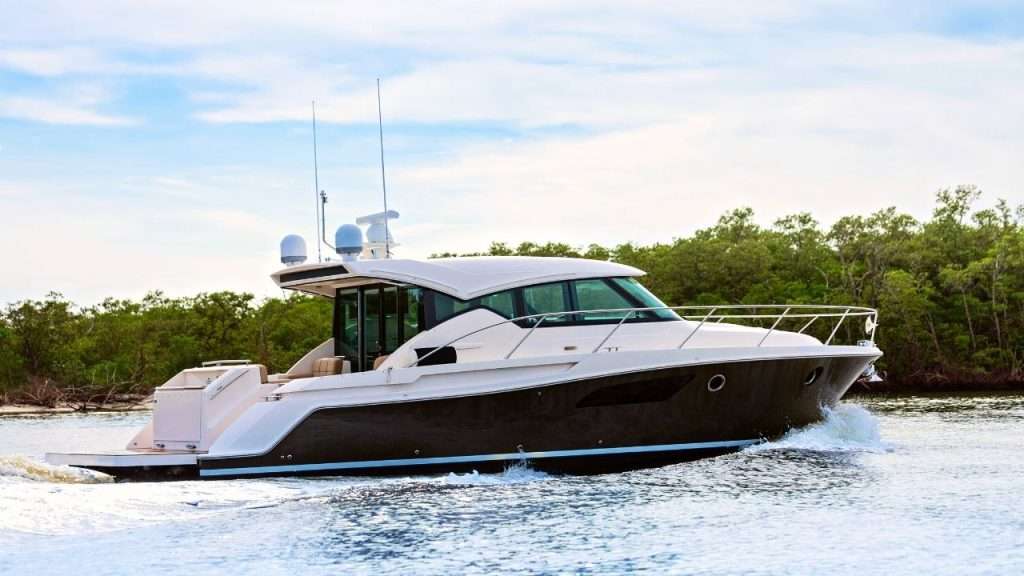
Walkaround boats are designed for those who love fishing and entertaining and want to have a comfortable boat with them. They come with a lot of features that make them very versatile.
Walkaround boats come in different sizes, shapes, and materials, which also determine their price. The price of walkaround boats varies depending on the brand, size, age, and features.
For example, a smaller 20-foot walkaround boat can cost around $25,000 to $35,000. On the other hand, a larger 30-foot walkaround boat can cost around $100,000 or more.
The material used to make the boat is also another factor that affects the price. Fiberglass walkaround boats are more expensive than aluminum walkarounds.
Some popular brands of walkaround boats include Grady-White Boats and Boston Whaler Boats. These brands are known for their quality construction and durability.
Apart from the initial purchase price of a walkaround boat, there are other costs associated with owning one.
For instance boat insurance is mandatory in most states if you’re planning on taking it out on open waters. Insurance costs depend on various factors such as your driving record or claims history, so ask your insurance agent about what options would work best for you.
Maintenance fees can vary widely depending on what kind of upkeep your vessel requires – Winterizing procedures could range from simple tasks such as draining water pumps or flushing cooling systems which may run into several hundred dollars or more depending on where you live.
Mooring or storage fees will add up over time if you don’t keep your vessel at home when not being used.
When deciding on whether to purchase a walkaround boat, it is important to consider how much you are willing to invest in the vessel versus how much you will use it.
If you only plan on using your boat for a few weekends per year, then renting one may be more cost-effective than owning one – with prices ranging from a few hundred dollars to thousands depending on the size and type of boat rented (fishing boats, pontoon boats or yachts). Ultimately the decision comes down to your budget and what experience you are seeking with your new purchase.
Sailboats Cost
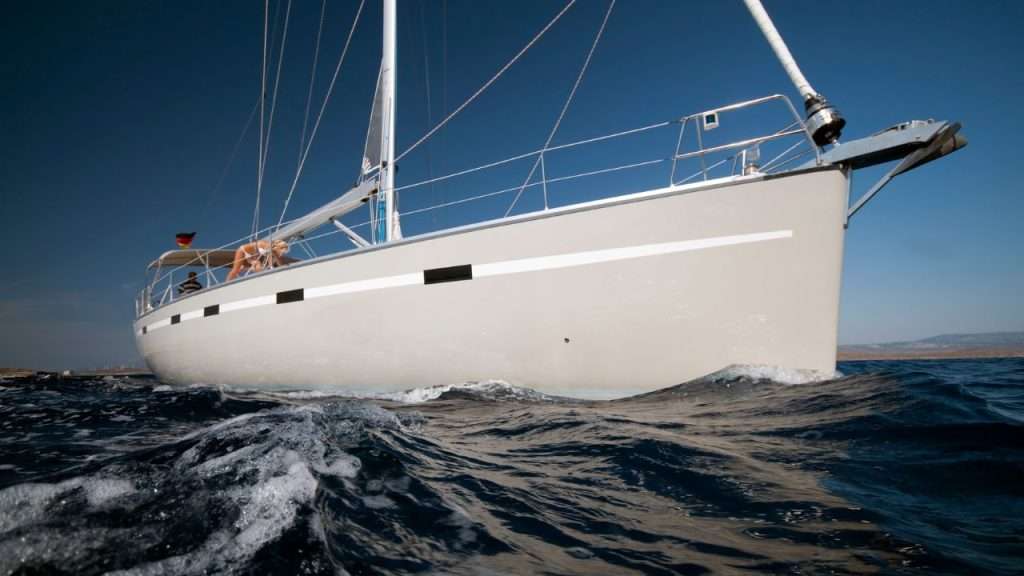
Sailboats are a popular option for those who enjoy the feeling of being on the water with only the power of wind. These boats come in different sizes and designs, ranging from small day sailors to large ocean-going vessels.
The cost of a sailboat depends on various factors such as size, brand, model, age, and features. A small sailboat such as a dinghy or sunfish may cost around $2,000 to $5,000.
These boats are generally used for day sailing and racing and are suitable for beginners who want to learn how to sail. However, if you’re looking for something more substantial like a cruiser or racer-cruiser that can accommodate your family and friends overnight or for longer trips – you might be looking at spending anywhere from $20,000 up to millions of dollars.
The cost may also vary based on how you purchase the boat. Buying a used sailboat can save you money but also requires careful inspection to ensure it’s seaworthy and safe.
In contrast, buying a new boat will give you peace of mind that it’s in good condition but will cost significantly more than buying used.
In addition to the purchase price of the boat itself, there are other costs associated with sailboat ownership. For instance: maintenance fees (such as engine maintenance), insurance fees (sail boats typically have higher insurance costs than powerboats), storage fees (you need somewhere to store your boat when not in use), mooring fees (if you don’t own space already), annual hull cleaning and antifouling costs (if your boat stays in the water), and maybe even specialized sailing outfit .
Winterizing is another factor that can impact your overall costs if you live in an area where winter weather is harsh or extreme. You’ll need time and materials such as antifreeze to winterize your vessel properly; this service usually costs around $1000-2000 depending on size.
As a general rule, expect to spend about 10% of the sailboat’s value in yearly maintenance.
Overall sailing can be an expensive hobby especially when considering all expenses over time – however – unlike many other activities, which require frequent and expensive upgrades – a well-maintained sailboat can last for decades.
Catamaran Cost
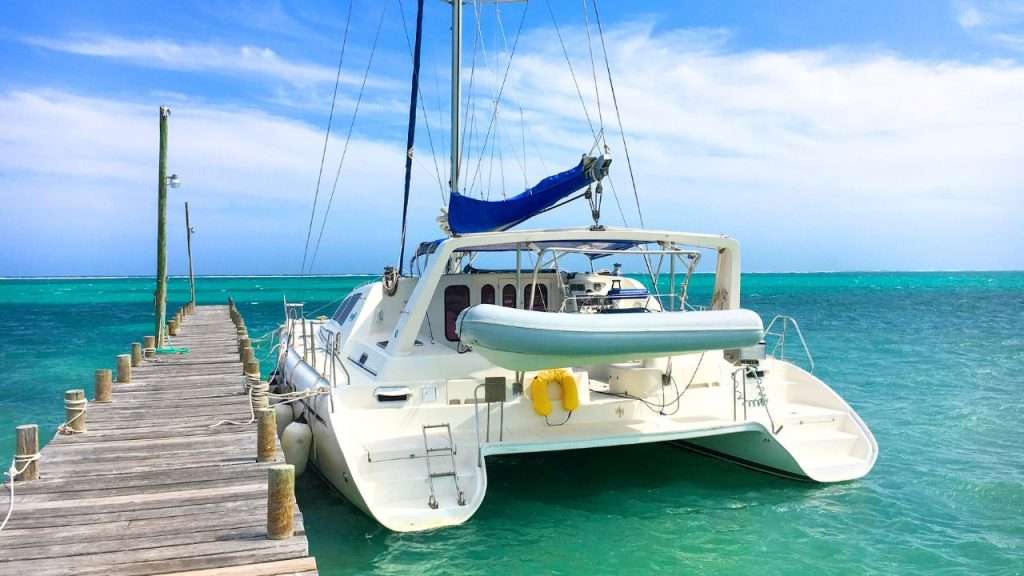
When it comes to boating, catamarans are the choice for those looking for a stable and spacious vessel. And while they are not as common as some other types of boats, they are versatile and well worth the investment. So how much does a catamaran cost?
Well, that depends on several factors such as size, age, brand, and features. A new 30-foot catamaran can set you back anywhere from $150,000 to over $500,000.
On the other hand, a used catamaran can be purchased for as little as $50,000. Of course, this varies depending on the model and its condition.
If you’re looking for the ultimate luxury experience on your catamaran – think Jacuzzi and helipads – then you should expect to pay anywhere from $2 million to more than $10 million for such extravagant yachts. One of the advantages of a catamaran is that they have space for multiple cabins making them perfect for family vacations or group outings.
The larger models typically come with bathrooms in each cabin, air conditioning units throughout the boat and gourmet kitchens. However all these features come at an added cost which will increase your maintenance budget over time.
It’s worth noting that owning a larger vessel like a typical Catamaran would require additional storage costs. You would need to factor in marina slip fees or indoor storage fees at some point if your driveway is not long enough.
So how much does it cost to maintain such vessels? Some owners say owning a boat is like having another child – expensive but rewarding!
Maintenance costs can run between 10% to 15% of the purchase price yearly when factoring in things like replacing lines and ropes every few years or maintaining generators or engines which could cause breakdowns in remote locations if not kept up properly. While there is no one specific price range that fits all Catamarans, you can expect to pay more for a newer or larger model than for a smaller or older one.
The extra expense may be worth it if you plan on sailing around the world, hosting large parties, or just enjoying the extra comfort and space. Either way, owning a catamaran is an adventure that brings unique experiences and memories that cannot be matched by renting one.
Motor Yachts Cost
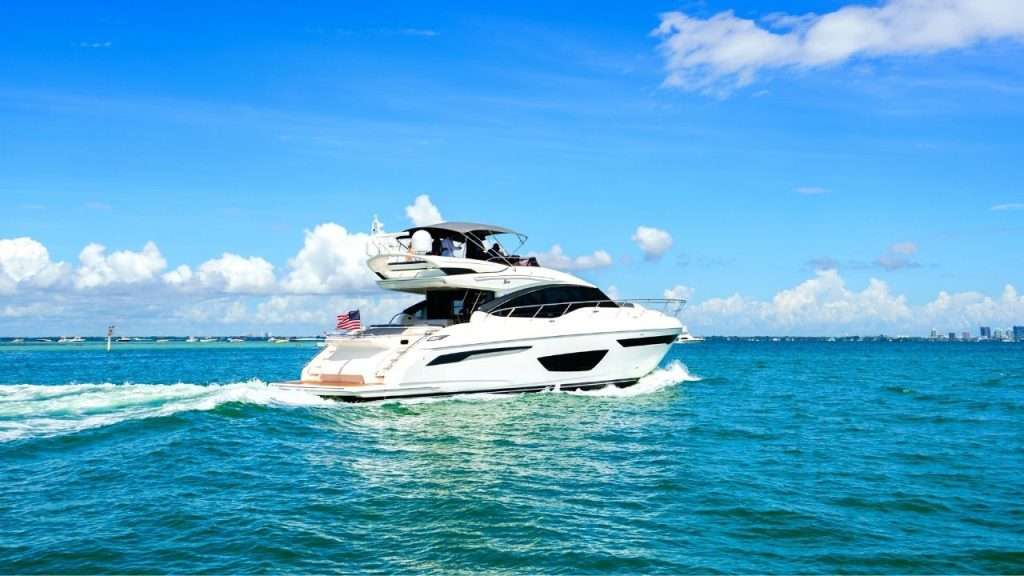
If you’re looking for a boat that can offer you a lot of space, speed, and luxury, then a motor yacht is an excellent choice. However, be prepared to spend some serious money because motor yachts can be quite expensive.
There are several factors that determine the cost of a motor yacht. The size is the most significant factor as larger yachts will require more power and materials to build.
The brand also plays an important role in determining the cost of a motor yacht as some brands have established themselves as top-tier manufacturers. If you’re looking at new boats, then you can expect to pay anywhere from $500k to upwards of $10 million for a super yacht.
On the other hand, if you want something cheaper, you can buy used boats for much less. Keep in mind that older boats will need more maintenance than newer ones.
Another factor that affects the cost of your boat is its features and amenities. come with various amenities such as air conditioning systems, hot tubs, built-in TV screens, audio equipment, etc., which all add up to increase its price tag.
When it comes to maintaining your motor yacht’s value over time- winterizing it annually is crucial for keeping it in top condition year after year- depending on where you live, winterizing costs could range between $400-$2000 dollars varying on size and location. Renting or leasing out your motor yacht when not in use is another way to offset some of these costs- renting out your boat through programs like freedom boat club for instance may allow one to recoup their initial investment while enjoying recreational boating without any long-term commitments or extensive maintenance costs associated with owning outright.
Overall owning a motor yacht could be costly but there’s no denying the feeling one gets when cruising with family/friends enjoying an open sea breeze or beautiful island sunset. If you’re an avid boater and have the means to purchase or maintain one, it might just be worth it!
Canoe and Kayak Cost

If you are looking for a low-cost option to explore the waterways, then a canoe or kayak is worth considering.
They may be less expensive than other types of boats, but they still provide the opportunity for an enjoyable water experience. The cost of a canoe or kayak can vary depending on its size, material and style.
A kayak typically costs between $300 and $1500, while a canoe can be slightly more expensive, costing between $500 and $2000. The price may also depend on whether you opt for new or used equipment.
When purchasing a new kayak or canoe, you should consider additional costs such as paddles, life jackets and safety gear. These expenses can quickly add up so ensure you budget accordingly.
If purchasing their own boat is not feasible for your situation, renting can be an affordable alternative. Renting a canoe or kayak will typically cost around $20-$40 per hour depending on location and time of year.
Kayaks are generally cheaper to maintain compared to larger boats as well. However, maintenance costs should still be considered in your budgeting plan.
Costs such as repairs from scratches or punctures along with replacing worn-out parts like paddles or seats could come up. When considering storage costs keep in mind that kayaks are typically smaller than other boats so storage space shouldn’t be too much of an issue; however larger canoes will need more area to store properly
If looking for an affordable way to enjoy exploring the waters look into kayaks and canoes. While they may have lower upfront prices compared to other types of boats there are still additional expenses to keep in mind like paddles, safety gear etc., along with keeping up with maintenance repairs as needed like any type of boat ownership or rental would require.
RIB (Rigid Inflatable Boat) Cost
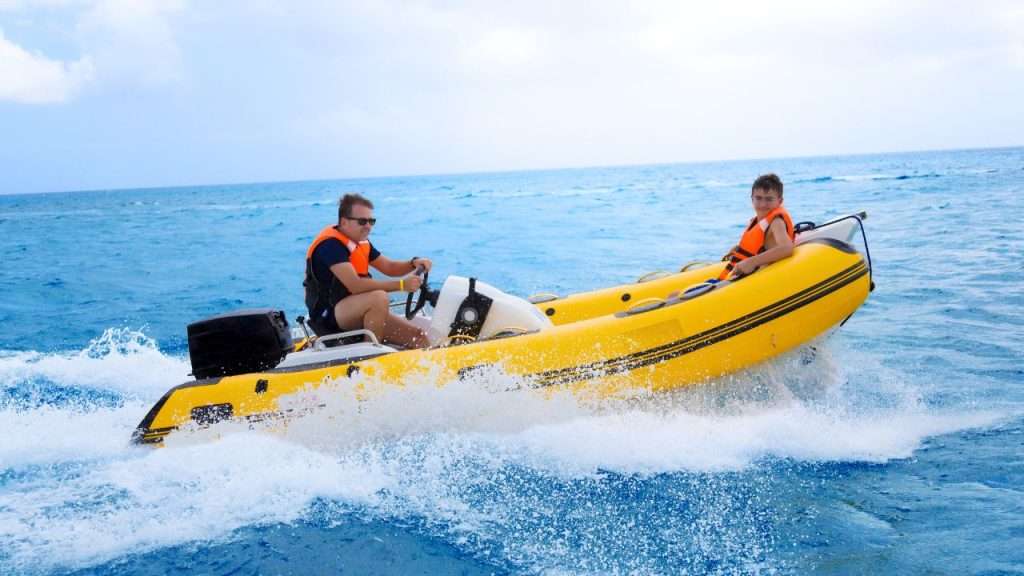
If you’re looking for a boat that’s easy to transport, RIBs may be a good option.
They are lightweight and compact, which makes them convenient to store and tow. One of the biggest advantages of RIBs is their durability.
They’re made from heavy-duty materials that can withstand harsh weather conditions and rough waters. You’ll find RIBs in different sizes, ranging from small boats to larger vessels.
The price of an RIB will depend on its size, features, and age. Smaller models start at around $1,000 to $2,000 while larger models can cost upwards of $50,000.
A mid-size RIB with a 50 horsepower engine costs around $20,000 on average. If you’re looking for something that’s budget-friendly or just starting out with boating, you can find used RIB boats for sale starting at around $5,000.
However, be sure to inspect the boat thoroughly before buying it as used boats may have hidden damages. It’s also worth noting that owning an RIB comes with certain expenses like maintenance costs which include repairs and winterization fees.
You also need to pay insurance premiums on your boat to protect it against damages or losses. When searching for an RIB dealer or seller, make sure you do your research by reading reviews online or talking to other boaters about their experiences buying an RIB.
If possible visit stores in person so that you can get a feel for the type of boat you want before purchasing it.
Overall, if portability and durability are important factors you’re looking for in a boat without breaking the bank then choosing an inflatable is definitely worth considering as compared to some other types of boats.
Total Cost of Boat Ownership

When it comes to owning a boat, the initial purchase price is merely the tip of the iceberg. The cost of ownership can add up quickly, and it’s essential to understand these expenses before taking the plunge.
Operation and Maintenance Costs
When considering the cost of owning a boat, it’s important to factor in the operating costs, which can add up quickly. These expenses include fuel, maintenance, repairs, and other miscellaneous costs.
Fuel: Like cars, boats need gas, and how much you’ll spend hinges on your boat type and how often you use it. A big yacht gulps way more gas than a cozy fishing boat, we are talking thousands of dollars to fill up a tank. Fuel tanks for small recreational boats can be around 30-50 gallons, which makes it more manageable money wise.
Regular Upkeep: All boats need care to stay in tip-top shape. This can involve engine check-ups, cleaning, painting, and waxing to ward off rust. Costs can stack up, and what you pay varies by boat type. For example, a pontoon boat might need less work than a sailboat. But bigger boats like yachts need special equipment and knowledge for maintenance, meaning higher costs.
Fixes: Boats face a lot of wear and tear, especially from water, whether salt or fresh. So, set some cash aside for fixes when you’re planning to buy a boat. Repair costs depend on the problem – a bit of electrical wiring will cost less than fixing hull damage from a mishap at the marina.
DIY vs. Professional Help: Some boat owners take care of maintenance and minor fixes themselves to save money. But remember, DIY only pays off if you really know what you’re doing. Otherwise, you might end up with a bigger bill.
Extra Costs: Dock fees, insurance (more on that later), permits, and tech upgrades like radar systems all add to your boat’s price tag. For example, annual dock fees can range from $1,200 to $15,000, depending on the marina’s location and amenities.
Winterizing: For boaters in colder places, prepping your boat for winter is vital to dodge costly ice damage. The average cost for winterizing a boat can be around $300, but neglecting it could lead to far more expensive repairs.
Remember, you can offset these costs. Some folks rent out their boats when not in use. Or you can save a few bucks by doing minor upkeep yourself, or mooring in a cheaper spot.
Keep a close eye on your maintenance and repair costs so they don’t blow your boating budget. Consider partnering with a trusted boat service center or marine engine specialist to keep your boat in prime condition without breaking the bank.
Boat insurance is a must when owning a boat, and its cost can differ a lot based on several factors. Let’s break it down:
The Insurance Basics: Insurance cost depends on factors like the boat type, its age and condition, where you live, and the coverage you choose. Generally, insuring a small boat like a pontoon or bass boat could be around $300-$600 per year. For larger boats like yachts, costs can go up – a small yacht insurance could be about $3,500 per year, while superyachts can be $1 million per year!
Legal Requirements: Most states need you to have liability insurance for boats with engines over 25 horsepower. And it’s a good idea for all boat owners to get comprehensive policies that cover all possible risks like fire accidents, theft, or natural disasters. Also, if you buy your boat with a loan, the lender might want you to have full coverage until you pay off the loan.
Marinas and Insurance: Most marinas require proof of comprehensive insurance before they allow boats into slips.
Picking an Insurance Policy: Here’s where you need to consider your budget and protection needs. Do you need extra coverage for electronics or personal belongings? Your answers will decide the type of policy and insurer you need.
Deductibles: High deductibles mean low annual premiums, but you’ll have to pay more out-of-pocket if you file a claim.
Seasonal Factors: Insurance rates can change with the seasons. Winter rates might be lower than summer rates because boats are generally not used much in winter.
So, getting insurance is key for a stress-free boating adventure. Do your homework, talk to an insurance agent, and pick a policy that fits your boat, needs, and budget.
Check the BoatU.S. Insurance page for a quick insurance quote.
Storage and Mooring
Storing and mooring your boat can be a big chunk of your boat ownership expenses. Here’s a guide to help you understand the costs involved:
Marinas: Marinas are one option for storing your boat. They offer services like dockage, fueling, and repairs. The cost varies based on factors like the location, the boat’s size, and the amenities the marina provides. For example, popular boating spots like Florida or California may have higher marina storage costs. Check our Guide on Things to Consider when Choosing a Marina for more details.
Dry Storage: You can also store your boat on land in dry storage facilities or sheds. Here, your boat is lifted out of the water and placed on blocks or racks. The costs depend on factors like the location (urban areas can be more expensive), the size of your boat (larger boats need more space), how long you’re storing it (long-term agreements can save money), and the level of service you require.
Winterizing: If you live in a colder region, you’ll need to prepare your boat for the cold weather. This process, called winterizing, can be a significant cost if you don’t have access to affordable services nearby or prefer to do it yourself.
Houseboats: Houseboats often have higher mooring fees because they take up more space.Remember, storage and mooring costs can quickly add up and are often overlooked. Knowing your options and their costs is key to making a well-informed decision about how and where to store your boat. Don’t forget to include these costs when you’re budgeting for your boating adventure!
Hidden Costs of Boat Ownership
Owning a boat comes with its share of hidden costs beyond the initial purchase and maintenance expenses. Here are a few to keep in mind:
Here are some of the most significant hidden costs:
Permits and Taxes: Depending on your location, you may need special permits or licenses to operate your boat. Plus, there might be taxes on your boat purchase. In some states like Florida, an annual registration fee is required, based on your boat’s size.
Equipment Upgrades: If the standard equipment on your boat doesn’t cut it, you might want to add new electronics or upgrade your fuel system. But remember, these upgrades can add to your costs.
Winterization: If you’re in an area with cold winters, you’ll need to winterize your boat before storing it. While crucial for maintaining your boat, this process can be expensive, especially if done professionally.
Insurance: While not required by law, boat insurance is highly recommended for unexpected incidents on the water. The premiums can vary based on factors like your boat type and value.
Docking Fees: Unless you have private dock space or plan to trailer your boat each time you use it, you’ll need to pay docking fees. These costs can vary based on location and the demand for dock space at marinas.
These hidden costs are important to factor into your budget when considering boat ownership. They can quickly add up and impact the affordability of owning a boat, both short-term and long-term.
Don’t forget to research your state’s specific requirements like licensing fees, so there are no surprises. Understanding these hidden costs can help you make an informed decision about boat ownership.
Adding All Expenses Up
Boat ownership is an exhilarating venture, but it entails a comprehensive financial commitment that extends well beyond the upfront purchase. A key consideration is insurance, the cost of which varies vastly depending on the boat type.
For a small vessel, you might pay between $300 and $500 annually, whereas larger boats such as sailboats or motor yachts could command premiums of several thousand dollars annually.
Furthermore, maintenance and repair costs, influenced by your boat’s usage frequency and storage location, can accumulate rapidly. For instance, winterizing your boat, a crucial maintenance step in colder climates, can cost between a few hundred to several thousand dollars.
Storage and mooring fees are another significant expense, potentially amounting to thousands of dollars each year depending on your location.
Boat operation costs such as fuel, docking fees, and maintenance supplies also contribute considerably to the total ownership cost. Also, don’t overlook the hidden costs, like permits and taxes, that can vary significantly based on your location and boat type. In some states, an annual registration fee based on the size of the boat is required.
In summary, when considering boat ownership, it’s crucial to factor in not only the initial purchase price but also ongoing expenses, including insurance, maintenance and repairs, storage fees, and operating costs, along with hidden costs.
Careful research and budgeting can help you avoid unforeseen expenses, ensuring a pleasurable and economically sound boating experience. So while the costs associated with boat ownership can seem intimidating at first glance, with careful planning and consideration, you can navigate these waters successfully.
Financing your Boat

Financing a boat is one of the most common ways to purchase a vessel. However, it is important to note that financing a boat can significantly increase its overall cost.
Interest rates on boat loans are typically higher than those for car loans due to the higher risk involved in lending money for a luxury item that depreciates quickly. The interest rate you can expect to pay for a boat loan will depend on factors such as your credit score, the size of the loan, and the age of the boat.
In general, larger loans and older boats will have higher interest rates. It is important to shop around and compare rates from different lenders before making a decision.
Some lenders may require a down payment or collateral before approving a loan for a boat purchase. This can vary depending on the lender’s policies and your individual financial situation.
In addition to interest charges, there may be other fees associated with financing a boat purchase. These could include origination fees, prepayment penalties, and processing fees.
Make sure you understand all of these costs before agreeing to any financing terms. It is also important to consider how much it costs to own and maintain your new vessel when determining how much you can afford in monthly payments.
Overall, financing can be an effective way to spread out the cost of purchasing a boat over time but it is essential that buyers weigh all of their options carefully before committing themselves financially into something they cannot afford or won’t have any use for in the long term.
Check the BoatU.S. Loans page and apply online.
Renting vs. Owning a Boat

Should you rent a boat or own one? Both options come with their own advantages and disadvantages from a cost perspective. Let’s uncover the details together.
Renting a Boat: Freedom without Responsibility
Renting a boat is generally cheaper than owning one, but it can also come with limitations that may be frustrating for avid boaters. One of the significant benefits of renting a boat is that you don’t have to worry about maintenance or repairs.
Renting a boat is a wonderful option if you only need a vessel occasionally. It’s like ordering takeout – you get to enjoy the meal without dealing with the dishes. The cost to rent can change depending on the type of boat, its location, and the season.
For example, taking a pontoon boat out for half a day in a popular tourist spot might cost around $300. In contrast, the cost of purchasing such small boats ranges from $10,000- $50,000. If you have your sights set on a sailboat, a week’s rental could start at $1,000 or more. But purchasing something at this level will likely be over $50,000.
As mentioned, one key benefit of renting is the lack of operational hassle and maintenance. There’s no need to worry about insurance, dock fees, or scrubbing the hull. You simply enjoy your time on the water and then hand back the keys.
However, rentals do have restrictions. You’ll need to adhere to the rental company’s schedule and rules. For instance, they’ll decide when you can take the boat out and how long you can keep it on the water.
Owning a Boat: A Price for Freedom
On the other hand, there’s something alluring about owning your own boat. You can decide when and where to sail, and there are no usage time limits.
However, owning a boat is like owning a house – it comes with upfront and ongoing costs. The upfront cost can vary greatly, starting from as low as $1,000 for small vessels, to tens of millions for luxury yachts.
When considering the purchase price alone, it would take several years before ownership becomes less expensive than rental. However, if you are someone who frequently uses their boats for extended periods during summer months or weekends throughout the year purchasing may make more financial sense than renting in the long run.
Other costs also come into play, such as mooring fees, fuel prices (which unfortunately rise every year), winterizing costs (if you live in a cold climate), and potential upgrades like additional electronics.
Maintenance is another significant part of boat ownership. From cleaning the hull to troubleshooting engine issues, these tasks require time, effort, and financial investment.
Boat Club Memberships: A Middle Ground
If you’re torn between renting and buying, there’s a third option: boat club memberships, check Freedom Boat Club for example. These clubs offer different types of boats for members to use for an annual fee. This fee includes insurance, maintenance costs, and dock fees, which removes many ownership hassles.
Ultimately, your choice depends on how often you plan to use a boat and what type of boat you want. If you are someone who likes boating only occasionally, renting a boat makes more financial sense than buying one. But if you’re a frequent boater, owning might be cheaper in the long run, despite the extra responsibilities.
Does the Cost of a Boat Justify the Experience?
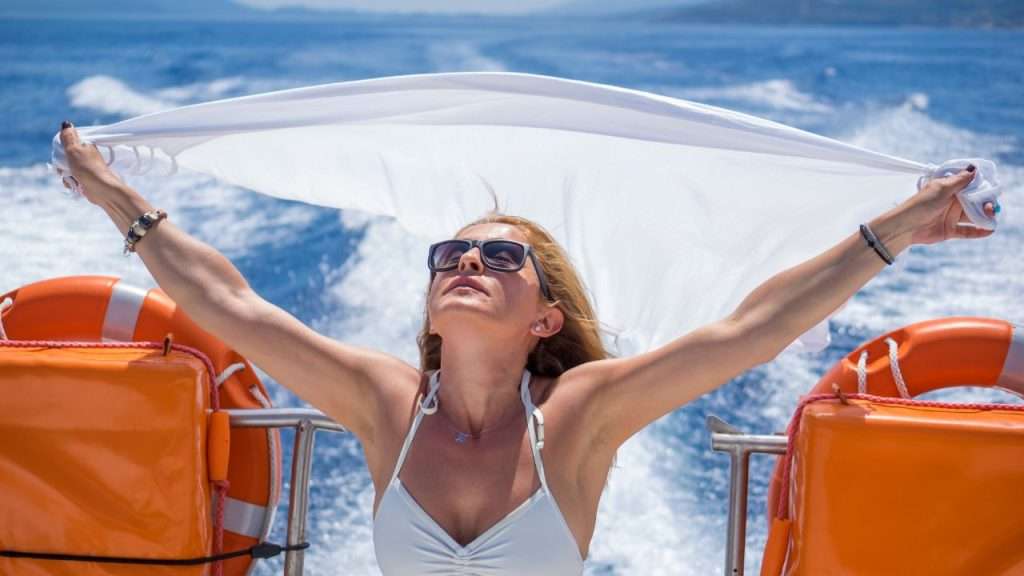
When it comes to buying a boat, the cost is undoubtedly a significant factor to consider. However, many boat owners (including me!) argue that the experience of owning and operating a vessel justifies the cost.
Owning a boat provides a level of freedom and enjoyment that cannot be matched by any other hobby or activity. Some may argue that owning a boat is an unnecessary extravagance; after all, many boats come with hefty price tags.
A yacht, for example, can cost millions of dollars to purchase and maintain. Even smaller vessels such as speed boats and houseboats can have price tags in the hundreds of thousands of dollars.
However, those who have experienced owning and operating a boat would argue that the cost is worth it for the unparalleled joy and freedom it provides. Whether you are cruising on the open sea or casting your line in your favorite fishing spot, spending time on your vessel is an escape from everyday life.
Of course, not everyone can afford to buy their own boat outright. Many choose to join boat clubs, which allow members access to boats without having to spend the money on purchasing one outright.
Renting boats for a day or more is also an option for those who want to experience boating without committing to ownership. It’s also essential to consider additional costs associated with owning a boat beyond the initial purchase price, as covered in detail in the previous sections.
Despite these costs, many boaters believe that there are few things in life more satisfying than having complete control over their vessel while gliding across open waters or experiencing nature’s beauty up close while sailing across peaceful lakes or bays. While owning a boat may seem expensive at first glance, its worth cannot be measured solely by its monetary value alone.
I can tell you, from my own experience, the memories made while cruising through calm waters with family or friends will last forever- something that is priceless.
Owning a vessel provides a unique way to unwind and enjoy the beauty of nature while creating cherished memories- something that money can’t buy.
Final Words
We’ve sailed through a lot in this article, so here are the key takeaways to answer our main question: How much does a boat cost?
The cost of a boat doesn’t come with a flat rate. It depends on the type, size, age, features, and location of your vessel, among other things. The type of boating activities you plan on doing will also play a crucial role in deciding what kind of boat suits you.
Whether you’re a fishing enthusiast leaning towards a fishing boat, or a speed lover eyeing a jet ski, do your research. Knowing the cost of different types of boats helps you make an informed decision that matches your budget and needs.
To buy or to rent? Both have their merits. Owning gives you flexibility and convenience, while renting comes with lower upfront costs. The decision depends on how often and how long you plan on using the boat.
Remember, the purchase price isn’t the full story. You’ll have other expenses like insurance, maintenance, storage, mooring fees, and fuel costs. Depending on your location, you may also have permit fees, taxes, and equipment upgrades to consider.
If buying isn’t for you, there are alternatives like the Freedom Boat Club. This could be an affordable choice if you plan on using a boat occasionally.
With proper research and planning, owning a boat can be an enriching experience. If you have the resources and a love for boating, invest in a vessel that fits your budget and preferences. Happy boating!
How much does it cost to rent a boat?
The cost of renting a boat varies depending on the type, size, and location. A small pontoon boat rental can cost around $200 for a half-day rental, while larger boats can cost upwards of $1,000 for a full day.
Additionally, some places charge extra fees for fuel or require a security deposit. It’s always important to read the fine print before renting.
How much does it cost to winterize a boat?
Winterizing a boat is an important maintenance step that prevents damage during the colder months. The cost of winterization can vary depending on whether you do it yourself or hire professionals. If you choose to do it yourself, you’ll need to purchase antifreeze and other supplies, which can add up to around $100-$300. If you hire professionals, expect to pay at least $200-$500.
How much is a small boat?
The price of a small boat varies depending on the type and features included. For example, an inflatable dinghy might only be around $500-$1,000 while a small fishing boat with an outboard motor could run between $5,000-$10,000.
How much does Freedom Boat Club Cost?
Freedom Boat Club is one of many companies offering boating memberships instead of ownership options. Membership costs vary based on location and amenities offered at each club but can range from $249-499 per month plus additional usage fees and a one-time fee around $4,000.
How much does it cost to purchase and maintain a yacht?
Yachts are luxury vessels with high price tags both upfront and in ongoing maintenance costs. The prices for purchasing yachts vary widely from several hundred thousand dollars for smaller models up into the millions or even billions of dollars for super yachts! A small yacht could run between $100k -$500k, with ongoing maintenance costs averaging around $10k-$20k yearly. Larger models will have higher upfront and ongoing costs.

As an Amazon Associate, we earn from qualifying purchases. Read more
© 2024 BestBoatTips.com - All rights reserved
🚚 FREE US SHIPPING ON ORDERS OVER $30 🚚

How Much Is a Boat Actually Going to Cost You? That All Depends…

How much does a boat cost? Well, that depends on what kind of boat we're talking about Is it a pontoon boat, a deck boat , a trawler or a sporty speedboat?
You can buy an inflatable dinghy for about $35 (with tax and paddles included) and then (sort of) call yourself a boat owner.
You can get a tandem kayak for closer to $900 and enjoy some river travel or fishing.
Most new jet skis cost between six and ten grand.
A used 22-foot sailboat will cost you about $25,000, while a used 118-foot Hatteras yacht will cost you between three and four million bucks (depending on the year and the features).
And a United States Nimitz- class nuclear-powered aircraft carrier costs about $8.5 billion (plus the salaries of the 5,000+ person crew).
The fact is, it's impossible to give a blanket answer to the general question "How much is a boat going to cost?" What you can do, though, is think through the many costs that are universally associated with boat ownership, which includes boat insurance , dock fees, fuel and more. Then, calculate the specifics based on the type of boat in question.
For example, that yacht will use much more fuel than the jet ski, but fuel costs are universal for any boat without paddles , a sail or a nuclear reactor.
Buying a boat is a major investment, so take the time to fully understand how much boat ownership really costs. That means purchase price, annual boat costs and calculating the likely lifetime investment your vessel will require.
Once you know the likely overall cost of owning a boat, you can choose the craft that's right for you and your family. That way, you won't end up forced to sell the boat at a loss a few years down the line or wish you had gone ahead and bought that larger boat you weren't sure you could afford.
Featured Boat Care Product
Check Price on Amazon - Better Boat's deck cleaner provides a no-slip finish and multi-purpose use for decks and other areas of your boat. It quickly lifts away dirt and grime from painted and fiberglass decks .
How Much Is a Boat Going to Cost You?
Your choice of boat.
We're going to assume you're not actually in the market for an inflatable dinghy or for a nuclear-powered super weapon. Instead, we're going to discuss three of the most common types of boats American families own.
Those are the pontoon boat, the outboard motorboat and the inboard motorboat .
The average price for a brand new pontoon boat is around $35,000. That's for the popular 22-foot pontoon boat size that can be seen on lakes and rivers all around America. You can find smaller pontoon boats for less than $20,000. You could easily spend more than $50,000 as well.
A motorboat with outboard motors and no cabin, often called a speedboat or powerboat, can cost anywhere from $20,000 used to many hundreds of thousands of dollars for new models. The high performance models, even secondhand ones, will start around $30,000 or more.
Larger motorboats with inboard motors and cabins are often known as cruisers (these aren't quite large enough to be considered yachts, for the record). These boats will often cost hundreds of thousands of dollars (or even seven figures) if bought new, though many used cruiser motorboats in good condition can be had for less than six figures.
Keep in mind that the final purchase price of your boat is just the beginning. Just get used to it.
Average Annual Mooring Fees
Once you own a boat, you're gonna need somewhere to put it when you're not out on the water enjoying it. If your boat is small enough to fit on a trailer (or if you have an extremely large trailer), you might be able to keep your boat parked on your property.
If not, you're going to have to pay for dock or harbor space. Depending on the size of your boat and the rates at the local marina, you can expect to pay between a few hundred dollars a month to more than a thousand dollars monthly just for a place to leave your vessel.
The annual mooring range is vast at around $3,000 a year to well over $15,000 or more. You might also want to consider having a boat lift to keep your boat from getting damaged in the water.
Buying a Boat Trailer
For the record, a boat trailer usually costs between $2,000 and $5,000, so if you're vacillating between keeping your boat in the water at a marina or hauling it back and forth from your home, the trailer is the cheaper way to go by far. Of course, it's not necessarily the easier way.
The Price of Winter Boat Storage
Unless you live in Florida, Hawaii, Southern California or a few other warm parts of the country, you're not going to leave your boat in the water all year round. You'll need to have that boat hauled up onto the land and winterized each year to protect your vessel. That can cost several thousand dollars.
The expense with boat winterizing comes in the form of storage fees, shrink wrapping and draining/changing of oil, fuel and other fluids. Other general maintenance issues may be required before and after a long period of time spent out of the water.
Average Annual Boat Fuel Costs
Most motorboats suck down a lot of gas. That's just the way it is. Quite often, the price of fuel on the water is much higher than you would pay when filling up your car at the gas station.
We'll use the per gallon price of fuel as $2.50 as our rate, though it will be higher than that in many places. Many fast motorboats use between 20 and 30 gallons of fuel per hour when cruising at speed. Average that to 25 gallons per hour, and a five-hour trip could cost you more than $300 per outing. Assuming you use your boat once a week, that's more than $16,000 in gasoline alone.
On the other hand, a slower pontoon boat will use much less gas. Many consume closer to five gallons per hour, which puts their annual fuel cost at closer to $3,000 for the same total hours out on the water.
Boat fuel costs can be affordable as long as you don't have the need for all that much speed.
The Price of Boat Insurance
Unless you have a private lake on your property, you should never operate a boat without current boat insurance. According to the U.S. Coast Guard, there are nearly 5,000 recreation boat accidents each year . The expenses resulting from a boating accident can be astronomical.
Fortunately for most private citizens, boat insurance costs only a few hundred dollars per year. In some cases it may be more than $1,000 depending on the type of vessel and the history of the owner/operator.
You can get boat insurance through traditional companies such as Geico, Progressive and AllState.
The number of people on the policy (and their ages) will also play a role in determining boat insurance costs. Make sure to file your insurance information properly, as you'll end up paying dearly for a false claim!
The Legalities
You'll need to pay for registration and licensing as well as any local taxes that are applicable in your state. These usually won't add a ton to the total price of ownership, but they're additional expenses worth considering.
Total Likely Costs of Boat Ownership?
Let's assume you bought a used motorboat in decent condition and spent $100,000. Then, let's assume your marina charges a mid-range $5,000 per year. Next, we'll assume you keep the speed down but head out at least once a week, so that's around $12,000 a year for fuel. And let's say $1,500 a year for insurance and a mere $1000 for winter maintenance and storage.
Barring the need for repairs and other incidentals - like the addition of marine window tint, cool boat gadgets , maintenance tools, cleaning products like boat soap and hull cleaner or other upgrades - if you own your boat for ten years, you can expect to pay a grand total of around $295,000 for that decade of boat ownership. That's $29,500 a year, or just under $2,460 a month.
Keep in mind, with a pontoon boat, it could be less than half that. With a luxury yacht, it could be ten times as much or more.
Buying used and boating in your backyard would reduce all these costs dramatically.
In the end, it boils down to what you need and want from your boating experience. Make these decisions before making your purchase, and tally up an estimated cost ahead of time!
If you do this, you'll go into your boat purchase completely prepared.

- choosing a selection results in a full page refresh
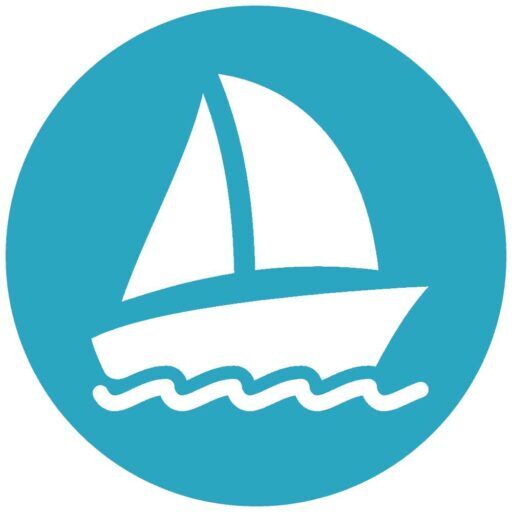
WaterCraft 101
Your guide to fun on the water!
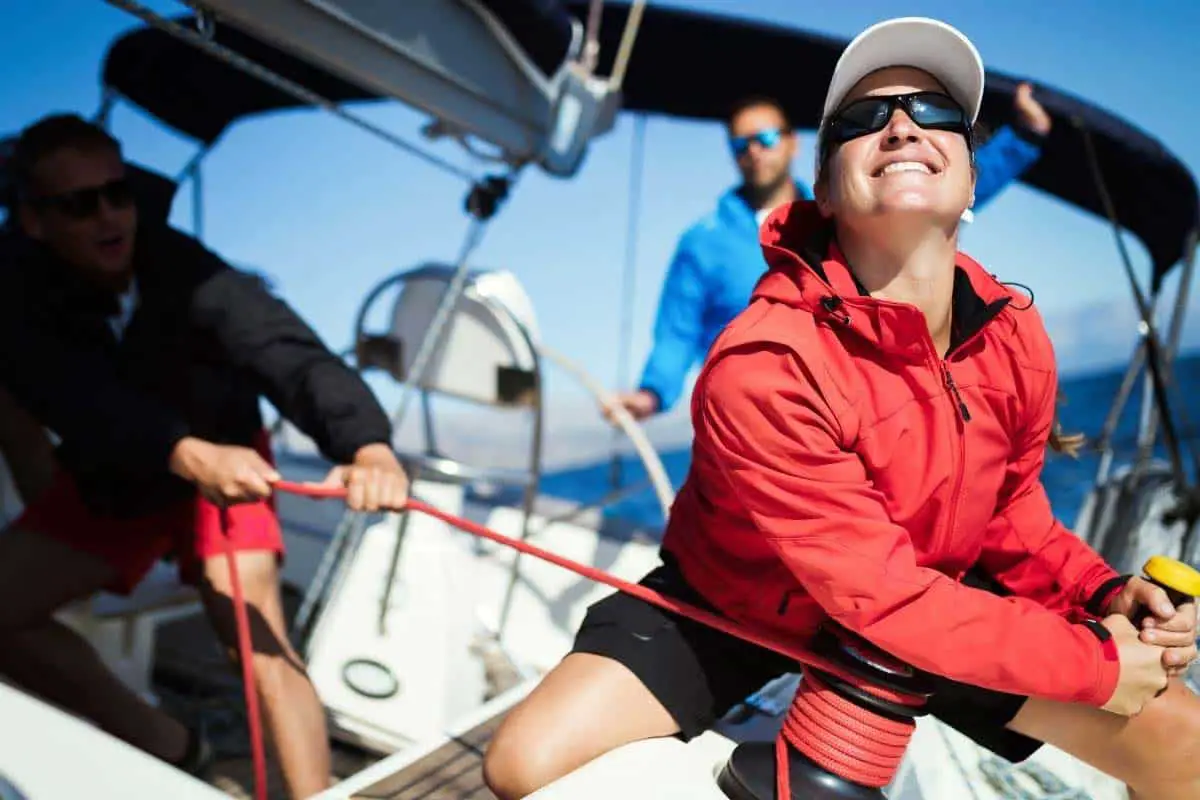
Boat Ownership Costs And Expenses (Read This Before You Buy!)
Are you a new boat owner, or plan to be one soon? If yes, then great! First things first though, there will be some significant boat ownership costs involved and you’ll need to know what to expect. Not to freak you out, but the last thing you want is for you to be that guy who leaves his boat docked for months on end just wearing away because you didn’t anticipate the ongoing costs of owning and operating your boat.
So, how much does owning a boat really cost?
You can expect that a $20,000 boat will cost between $2,656 – $3,000 dollars a year or more in ongoing expenses. These boat ownership costs include maintenance, insurance, registration fees, docking fees, and gear necessary for the operation and safety of the vessel and its passengers.
Anticipating boat costs is a smart way to avoid a sinking debt driven ship (pun intended!). Do not become boat poor. It’s not a good look.
This article will provide information about boating expenses and the so-called hidden costs of boat ownership. It tries to assist mainly first-time buyers in preparing for and reducing financial burdens where possible.
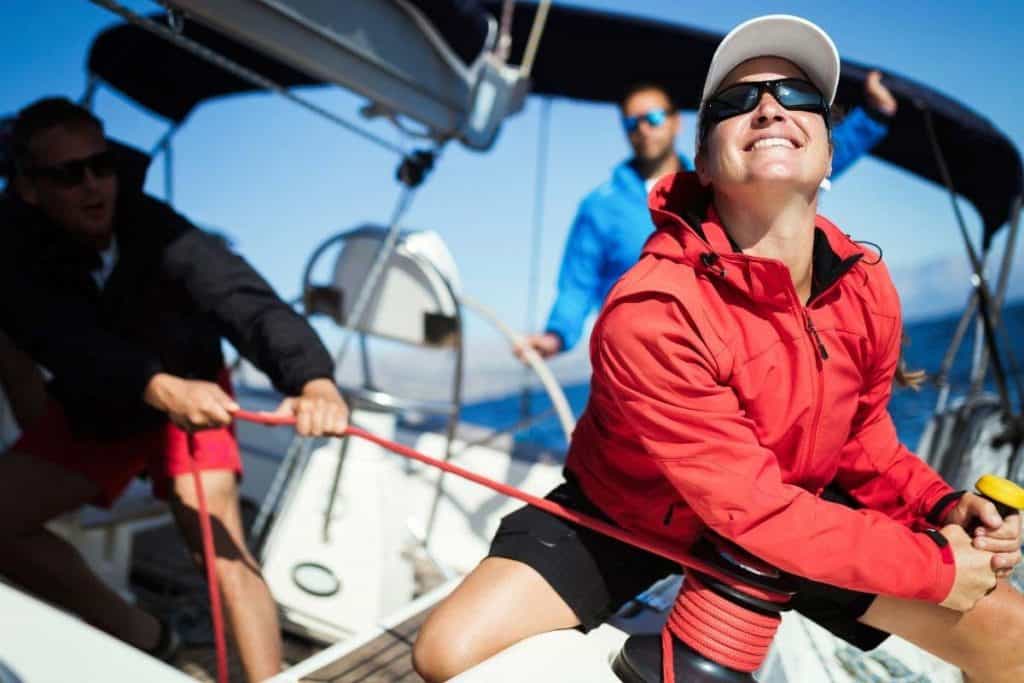
The average age of boat owners is 60 for sailors and slightly younger (55) for power boaters. Younger boat users haven’t always been keen on buying, and this is something organizations such as the National Marine Manufacturers Organization ( NMMA ) are working desperately to change.
But not many organizations are successfully promoting recreational boating, especially in this economy, and the boating lifestyle still appears out of reach for many people. But is boating that expensive, or is it just our perception of it?
Discover Boating published their findings from a recent study where they indicated that first-time buyers had significant concerns over what they called “hidden boating fees,” which tend to show up right at the end of the purchasing process. It shows how seriously the industry needs to take the issue of transparency.
Table of Contents
Comprehensive List of Boat Ownership Expenses
Here’s some straight talk about the expenses you can expect to pay for once you purchase a boat. Later we’ll see how these expenses compare between a sailboat and a motorboat.
1. The Purchase Price
On average, a mid-sized boat measuring around 25ft in length will set you back about $40,000. Of course, you could compromise a little on the size or go for a used boat, and in that case, the purchase price reduces significantly. Check out Bloomberg or NadaGuides to get a clear picture of how these boats are priced.
So for our example, let’s set the buying price at a lower range of $20,000. That way we can base our expenses off this initial purchase price, and it will make it easier for you to calculate your expenses if your boat costs more or less than this amount.
2. Boat Insurance
Most insurers will offer boat insurance at the rate of 1.5 – 2.0% of the boat’s value (also known as hull value) per year. So if your ship is valued at $20,000, then insurance would be around $400 a year on the higher side. Remember that insurance rates differ based on location, so prices will typically be higher in hurricane-prone regions for instance.
Insurance prices also vary greatly depending on whose operating the boat, whether you are occasionally using it for fishing or if you’re a regular water skier / wakeborder. Boating insurance also has a direct correlation with your driving record. Better drivers get better boat insurance rates.
Average Annual Insurance Cost: $400
3. Boat Registration
Your boat requires registration, much like any other vehicle. The boat registration process is managed at the state level so expect some variations in cost. We’ll set the average registration cost at $225 per year.
Licensing for the Boating Safety Education Certificate may also apply here. Still, the good news is once you get certified, which can cost anywhere from $150 to $300, it’s good for life (but again, check state licensing rules to be sure).
This certificate licenses you to operate a personal watercraft (PWC), powered by a 25hp motor or higher. The National Association of State Boating Law Administrators ( NASBLA ) is an excellent place to find more information.
Average Registration Cost: $225
4. Property Taxes For a Boat
Some states like Florida and California require a personal property boat tax. This tax is different from sales tax or use tax. Boat property taxes (if any) vary wildly depending on the state and county you live.
You’ll need to check with your local county offices to see if this tax will apply to you or not. If it does, your boat’s value will be assessed as tangible property (just like a house) and you will pay annual property taxes on the assessed value.
Taxes Cost: Varies
5. Mooring (Keeping Your Boat in The Water)
Mooring costs fluctuate fundamentally based on geographic location, the size of your boat, specialized boat care, proximity to restaurants and other facilities, etc. If you want a premium marina with round the clock security and incredible scenery, then you’re going to pay something in the range of $1,000 to $2,000 annually for a larger boat.
But you don’t always have to pay for a mooring: A decent boat yard can serve as a mooring for your boat when you’re not sailing, and they only charge a flat seasonal fee. Alternatively, if your boat is smaller, you may just store it on its trailer at home for free in between outings.
Mooring Cost: Varies
6. Row Boat, Dinghy
If you pay for mooring, you will potentially need to purchase a smaller boat for traveling to and from your primary vessel. Small rowboats cost about $1,000, and you can always go for a used one for half the price or find a far cheaper option online. Cheaper ones will be visibly old, but they get the job done.
Row Boat Cost: $500 to $1,000
7. Winter Boat Storage
If you live in colder climates, there will be an annual cost of about $1000 – $2,000 for winter boat storage, which involves someone hauling your boat and placing it on a set of blocks. The charge covers this service plus a cover wrapping that is thrown over the boat all winter.
Again the other alternative here is to move your boat to your property, assuming there’s plenty of space in your driveway or backyard.
Storage Cost: $1,500
8. Trailer
Trailers vary in price based on their size and material, so if you’re buying an aluminum trailer for a 20-foot boat, it may set you back anywhere from $1,000 to $2,000, with cheaper options online in the used section. There is also a DMV registration fee for boat trailers, which costs around $5 (may vary in your area).
Aluminum trailers are the preferred choice for their lighter weight and the fact that they don’t wear from rust and or break easily. However, there are other models made from steel or iron that will serve the purpose. They weigh more but are generally more affordable.
Trailer Cost: $1,000
9. Routine Maintenance Cost
Most most routine maintenance estimates are around 10% of the boat value annually. So basically, the more expensive your boat, the more money it will cost to maintain. Maintenance typically involves servicing the engine, anti-fouling, sail and rig, electrical equipment, upholstery, repainting the hull, fixing hull damage, upgrades, replacements, and so on. Some owners carry out the essential maintenance themselves, but they always set aside a budget for professional maintenance.
Maintenance Cost: $2,000
10. Fuel Cost
There will be the added cost of gas, oil changes, and regular engine maintenance for anybody using a motorboat. More significant engines like 4-stroke motors will use up more gas, and also the number of times you take your boat out will determine the cost of gas.
Cost: varies
11. Must-have Safety Items/Boating Accessories
The following is a list of 15 crucial boating accessories that you must purchase and renew to stay safe out on the water. We haven’t included the cost for each item; however, it is worth pointing out that these items don’t come with the boat and require additional spending.
1. First-Aid kit
You must be able to treat minor injuries or ailments, and this is possible with a range of neat medical kits that can cost as little as $10 or as much as $1,000. It depends on what medical emergencies you’re planning for or how far you plan to cruise. Here’s an inexpensive first aid kit (Amazon) that’s got everything you’ll need.
2. Solutions for Motion Sickness
First-timers may find that motion sickness is pretty strong, and in that case, it helps to have devices or treatments that prevent or help manage it. Motion sickness strips and unique wrist bands are everyday items used for motion sickness.
3. Depth Finders
A depth finder from companies like Hummingbird or Faria Beede will tell you how deep the water is so that you never run the risk of damaging your hull or, worse, getting stuck somewhere out in the water. Portable ones like the Garmin Striker Plus 4 (Amazon) are cheaper and will give you the same readouts, so there are different options here.
4. Life jackets
A single, quality life jacket will often cost you over $50, and you need to have at least one life jacket for every person aboard. The Stearns Classic Series Vest (Amazon) will provide the right protection and save you some money in the process.
The life jacket should also have a whistle installed if it doesn’t come with one. The Fox 40 whistle comes with a break away lanyard and will get the job done. It is also wise to have a small flare and pockets to store any relevant survival item in your life jacket or vest.
The cost of the life vests alone can set you back several hundred dollars in order to outfit your boat safely to carry several people.
5. A Beach Anchor
These are particularly useful for people with smaller boats that can dock anywhere. A beach anchor will stake into different types of ground so that your ship doesn’t slowly drift away. Where there’s firm ground, you can hammer one of those spike varieties into the ground. The Slide Anchor Spike (Amazon) works well in shallow water or on the shore.
6. Dry Storage Box
You must have several of these and have them packed with spare tools, GPS, smartphones, and other electronics that may be useful. Ensure that your storage boxes can float, and don’t load too much equipment into a single box. Spread out your gear among several of them, some carrying the same or similar equipment.
- Large dry box for bigger tools and equipment (Amazon)
- Smaller floating dry boxes for phone, keys and electronics (Amazon)
7. Device Chargers
Solar-powered chargers are considered essential for larger boats. Ideally, your boat should have available USB sockets attached to solar panels; but if this isn’t the case, portable solar panels also have power ports that you can use. Plus portable panels like this one at Amazon can also be used for camping or RVing.
8. Navigation Equipment
When taking the boat out to sea or on a large lake when you are likely to cruise away from familiar routes, navigation equipment is needed. A simple marine GPS (Amazon) will suffice; however, for the more complex and sensitive GPS equipment, expect to spend thousands of dollars.
Overall Cost of Safety Equipment
It’s hard to estimate because, ultimately, the total cost fluctuates with brand and quantity, but at the very least, you should expect to end up spending at least another $1,000 on some essential items for your boat. Many of these items once purchased don’t require replacement, so that’s a relief.
Example Estimate of First Year Boat Ownership Costs
This table shows the expenses you will most likely incur during your first year of boat ownership. Some of these costs will be one-time-only purchases, while others will be ongoing expenses.
| Expense | Cost | Notes |
|---|---|---|
| Purchase Price | 1x cost | |
| Registration | $225 | Annual cost |
| Insurance | $400 | Annual cost |
| Mooring, dock fees | Varies | May or may not be required |
| Trailer | $1000 | 1x cost |
| Winter Storage | $1500 | May not be required. |
| Dinghy | $500 | May not be required. |
| Maintenance | $2000 | Annual cost / much more or less depending on boat |
| Safety Equipment | $1000 (varies) | 1x cost |
| Total | $26,625 | Total 1st year of ownership |
This is a rough outline of costs, and the intent is to give you an idea of where the money goes . Your costs may be higher or lower depending on if you have a boat loan and many other factors, but this should give you a good starting place for determining just how much a boat is going to cost to own and operate based on a $20,000 purchase price.
The first year of boat ownership will invariably cost more as you have to purchase a whole range of safety equipment – some of which you probably won’t use, but it’s always a good idea to have available.
If you remove all of the one-time costs, you can expect your ongoing cost for owning the boat in this example to be around $2,625 annually if you don’t require long-term mooring or winter storage fees. Adding the cost of fuel and boat launch fees, it’s probably safe to say you’re looking around $3,000 or more in annual expenses.
Sailboats vs. Motorboats Annual Ownership Costs
The table below compares operating costs for a moderately sized sailboat and a similar-sized motorboat, estimating what the costs of owning the two different boats would cost on average. The figures are on the higher side.
| 30 – Foot Sailboat | 30 Foot Motorboat | |
|---|---|---|
| Boat and Safety Equipment | $111,000 | $129,000 |
| Value Depreciation | $13,000 | $15,500 |
| Fees, Mooring, Maintenance | $10,000 | $10,500 |
| Total Annual Cost | $23,000 | $26,000 |
As you can see, there is not much difference in ongoing costs. While the motor boat has more engine maintenance costs, the sailboat has more costs associated with the sails and rigging.
Do I Have Any Alternatives?
If these costs seem outrageous, the only other real option you have is to rent a boat or become a boat club member; this way, you can receive regular discounts on premium services. These boat clubs are beneficial for newbies who want to try out the water and learn all about sailing or boating without committing long-term to the high cost of owning.
Look for memberships that include the services you would generally pay for from owning a boat, such as mooring and maintenance, but at a fraction of the cost. You may also be able to access a broader range of vessels that you can try out to find your fit, and some clubs offer excellent training – which you will need before you take your family or friends out on the water.
If the idea of a boat club membership interests you, check out the memberships and or rental options either in your area or near the body of water you want to enjoy!
In Conclusion
These are general estimates, but they do give the reader an idea of the expenses that come with a boating lifestyle, so feel free to look for new ways to economize: And by all means, speak to experienced boat owners about some of the ways they keep costs down. Good luck!
- “International Certificate for Operators of Pleasure Craft – Resolution No. 40, Revision 1” (PDF)
- Online Sailing Certification https://en.m.wikipedia.org/wiki/Boating
- The Boat U.S. Foundation https://www.boatus.org/free/
- State of New Jersey Jet Ski Licensing https://www.state.nj.us/mvc/vehicles/boating.htm
- The Marine Retailers Association https://www.mraa.com/news/518811/NMMA-MRAA-Form-Strategic-Partnership-to-Expand-Discover-Boating.htm
Bryan is a Las Vegas resident who loves spending his free time out on the water. Boating on Lake Mohave or Lake Havasu is his favorite way to unwind and escape the hustle and bustle of the city. More about Bryan.
Similar Posts
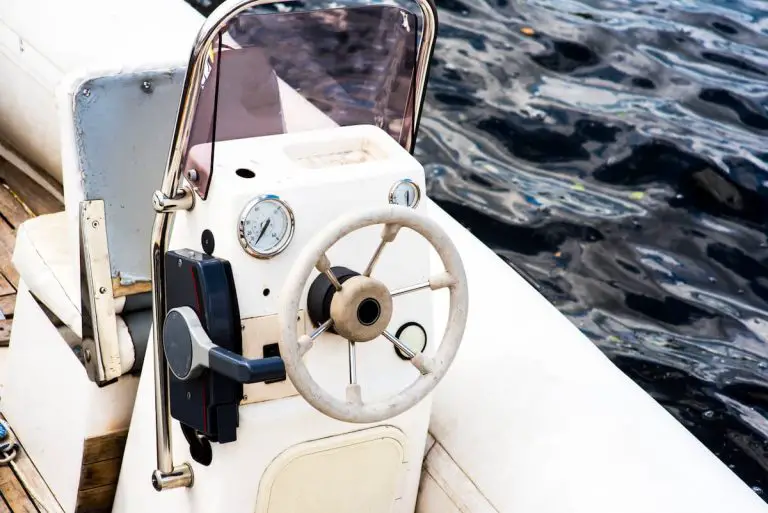
Are Boat Steering Cables Universal? (Explained)
No matter what type of boat you have, it likely has a steering cable. In fact, most boats rely on these cables to help them maneuver. But are boat steering cables universal? Boat steering cables are generally universal. The 3300/33 type control cable is the most popular and typically works with most boats. There may…

10 Signs You Might Be a Boater (And Need an Intervention)
Ahoy there! Are you starting to suspect that your love for boating has taken over your life? Do you find yourself talking to your boat more than your friends and family? Fear not, matey, for we’ve got 10 hilarious signs that you might be a boater in need of an intervention. So, grab a life…

Is a 14ft Boat Too Small? Key Factors and Considerations for Small Boat Boating
When considering the purchase of a boat, one question that might cross your mind is whether a 14-foot boat is too small. The answer to this question depends on several factors, such as your intended purpose for the boat, the number of people you plan on accommodating, and the body of water you will be…
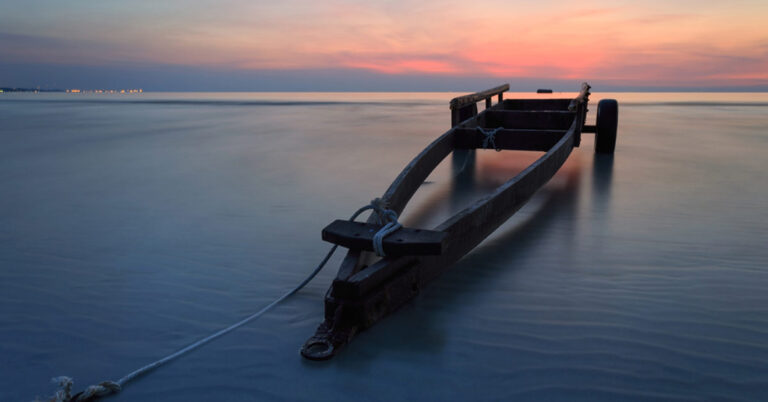
Boat Trailer Safety Chains: The Crucial Role They Play in Safe Towing
Boat trailer safety chains may often be overlooked in the grand scheme of boating paraphernalia, but they play an undeniably pivotal role in maintaining safety while towing. Acting as fail-safes during transportation, these chains connect the boat trailer to the towing vehicle, ensuring that the trailer remains attached even in the unfortunate event of a…
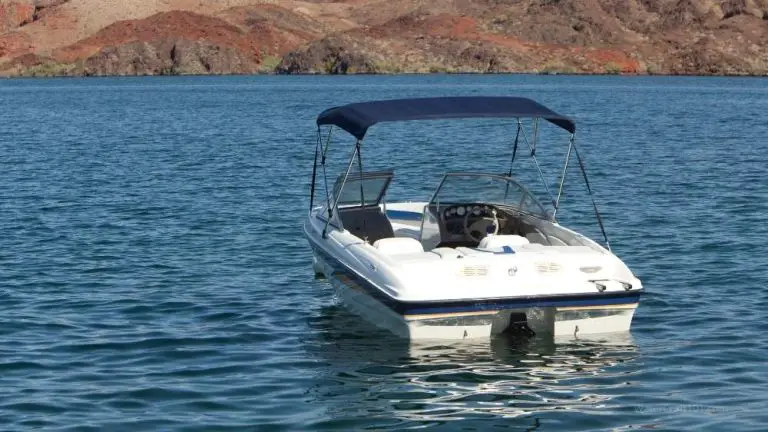
Do Small Boats Have Bathrooms? (How & Where to Go Potty)
Fishing or cruising on a small boat can be thrilling until you need to use a bathroom. These trips might last for hours even on a small boat, and being far away from land leaves you with few options to relieve yourself. Many boats intended for long trips have bathrooms onboard, but do the smaller…
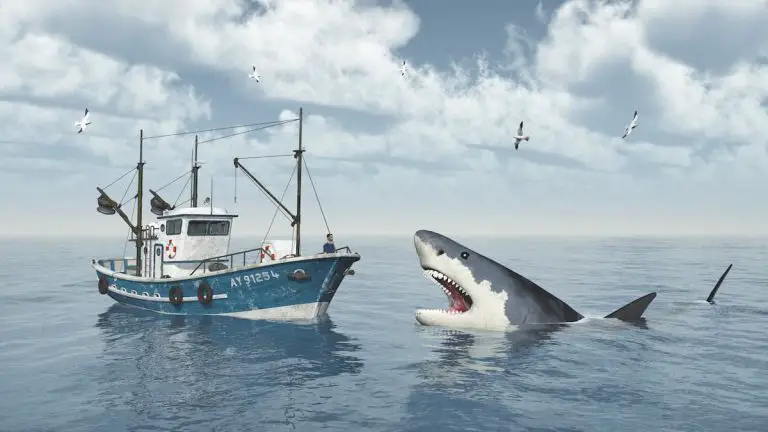
Are Sharks Scared Away by Boat Motors? (The Truth!)
Sharks are intimidating, but they shouldn’t keep you from enjoying your time in or on the water. Instead, it would be best to understand them, so you know what attracts them and what’ll drive them away. For example, take boat motors: Can their rotating wheels and whirring sound scare sharks? Sharks aren’t scared away by…

The Cost of Boat Ownership – A Detailed Guide
Let’s admit it – boating has an undeniable allure. The freedom to explore tranquil lakes, scenic coastlines, and hidden coves is truly enthralling. However, amid all the excitement, acknowledging the often-overlooked costs of owning a boat is more important than ever. Many people who want to own a boat fail to consider the comprehensive expenses that come with it, resulting in unexpected financial burdens and dashed dreams. That said, this comprehensive guide investigates the true cost of boat ownership, providing valuable insights and practical advice to help you navigate this complex terrain. Whether you’re a seasoned sailor or planning your first voyage, this blog will arm you with the knowledge to keep your boating experiences enjoyable and financially sustainable.
Table of Contents
Which Type of Boat Can You Truly Afford to Own?
When it comes to boat ownership, there are several options to consider, each with its benefits and drawbacks in terms of upfront costs and long-term expenses. Let’s look at the three main options on the market today –
- Purchasing a New Boat: A new boat always comes in pristine condition, which means it has not been used or subjected to wear and tear. It also has cutting-edge features and customization options, allowing you to tailor the boat to your preferences. However, the cost of boat ownership when it’s new are higher and tend to depreciate faster than used boats. You can also expect higher insurance and maintenance costs, primarily due to the newer and potentially more complex components.
- Purchasing a Used Boat: The best part here is that the initial cost is lower than purchasing a new boat, which makes boating more affordable for those on a tight budget. Furthermore, well-maintained used boats can be found at a lower price, providing an opportunity for a good deal. Also, the depreciation of pre-owned boats is more predictable, as these vessels have already experienced their initial value drop. On the other hand, these are more likely to require repairs due to wear and tear or outdated components. Before making a purchase, it is critical to thoroughly inspect the boat and consider potential maintenance costs. It may also have outdated features that do not meet modern boating standards or preferences. Finally, when purchasing a used boat, customization options may be limited.
- Temporary Boat Leasing/Renting: Temporary boat leasing or renting is a boon for people looking for water adventures without the burden of hefty costs of boat ownership or long-term commitments. With lower upfront costs, you can enjoy the thrill of boating without making a significant financial investment. Furthermore, renting helps choose between a wide range of boats to select the ideal vessel for your specific needs and preferences. However, the ongoing rental costs of temporary boat leasing must be considered. It’s also worth noting that temporary boat leasing does not provide any equity or asset to sell in the future.
What are the Boat Ownership Options Available?
In today’s market, boats are available in multiple styles to accommodate various needs and activities, such as:
- Sailboats: Wind-powered sailboats are highly popular among sailors. Generally, its prices vary as per size, brand, and materials. Smaller sailboats cost $5,000 to $20,000, while luxurious sailing yachts can cost millions.
- Motor-powered Boats: Motorboats are versatile and engine-powered vessels ideal for cruising, fishing and water sports. The average costs of owning a boat powered by a motor vary according to size, brand, engine power and features. Smaller motorboats start around $10,000 and can cost more than $100,000 in price.
- Luxury Yacht: Yachts are opulent and well-known for their opulence and amenities. Prices differ according to size, brand, features, and customization. Yachts start at around $500,000 and can cost tens of millions of dollars for ultra-luxurious models. Before we move ahead to understand the cost of boat ownership, here’s our tip: carefully assess your boating needs, budget, and long-term plans to determine which ownership option aligns best with your preferences and financial situation. To learn about the key benefits of digitalization in the maritime industry, read this .
Types of Expenses Associated With Owning A Boat
Ready to learn more about the cost of boat ownership? Here are a few examples of common boat-related expenses that you must know beforehand –
A) Initial Price of Purchase:
Several factors influence the initial price of a boat and understanding them can help you make an informed purchase decision. These factors include: – The Boat’s Size: Larger boats are generally more expensive due to increased materials, construction and seating capacity. Smaller boats, on the other hand, are frequently less expensive and easier to maintain. – Age of the Boat: Because of their advanced features, modern design and improved technologies, newer boats typically command higher prices. However, older boats that have been well-maintained can be a more cost-effective option for buyers on a tight budget. – Manufacturing Company: Renowned brands with a reputation for quality and craftsmanship are often more expensive. Whereas, lesser-known or generic brands may provide more affordable alternatives without sacrificing quality. – Government Taxes: Depending on where you live, you may be required to pay sales or taxes that affect the initial costs of boat ownership. These taxes differ by region, so it’s critical to research and understand the tax obligations in your area. – Boat Registration Fee: In most jurisdictions, boat registration is a mandatory condition upon purchase. Paying a fee to obtain official documentation for your boat is part of the registration process. This paperwork serves as proof of ownership and allows you to operate your boat legally on the water.
B) Boat Insurance:
Boat insurance protects your watercraft against numerous risks and liabilities. It protects your investment and provides peace of mind while you’re out on the water, whether you own a yacht, sailboat, fishing boat or any other type of vessel. These policies typically cover the following elements: – Physical Injury and Liability Coverage: This insures your boat from damage caused by collisions, storms, theft, vandalism and fire. It usually covers the costs of repairs or replacements up to the policy’s limits. In many cases, boat owners are also held liable for injuries or accidents that occur while operating their vessels. Liability insurance helps pay legal fees, medical bills, property damage and other costs of boat ownership affected due to these incidents. – Medical Payments & Uninsured Watercraft Coverage: If you or your passengers are injured on the boat, medical payments coverage can help cover medical expenses regardless of who is at fault. It also protects you if you are involved in an accident with a boat operator who is either uninsured or does not have enough coverage to pay for damages. – Personal Property Coverage & Emergency Assistance: Many boat insurance policies provide coverage against personal belongings (fishing equipment, water sports equipment and navigation devices) lost or damaged during an accident. Some policies also raise the bar by offering emergency towing, fuel delivery and other assistance services if your boat breaks down or you require assistance while out on the water.
Boat insurance costs in the United States can vary depending on several factors, including:
- Type and Size: Larger boats and yachts typically have higher insurance costs due to their higher value and increased risks.
- Use of the Boat: How you use your boat affects your insurance premium. For example, recreational use may be less expensive than commercial or charter use.
- Boating Experience: Insurance companies may consider your boating experience and qualifications, such as completion of boating safety courses when determining the cost of coverage.
- Location: Navigational hazards, weather conditions, and crime rates in the area where you intend to use your boat can all have an impact on insurance costs
- Coverage Limits and Deductibles: The amount of coverage you select, as well as the deductible you’re willing to pay out of pocket, can affect the premium.
C) Docking and Storage:
There are several options for vessel storage to consider, each with its benefits and costs of boat ownership. Let’s look at the various options available: – Marinas: Marinas offer both wet (in-water slips) and dry (on-land) storage. Wet storage fees are typically monthly or annual, and include amenities such as electricity, water hookups and security. Costs vary greatly depending on factors such as location, boat size and marina amenities. Marinas in more desirable or urban areas typically charge higher fees than those in less crowded or remote locations. – Dry Storage Facilities: Also known as boatyards or boat storage yards, these arenas provide on-land storage to protect your boat from the corrosive effects of water. These facilities typically offer rack storage (boats stored on specialized racks) or trailer storage (boats stored on trailers). Monthly or annual fees for dry storage are frequently determined by the length of the boat and the type of storage chosen. Dry storage facilities typically offer basic services such as boat launching and retrieval, security, and on occasion, amenities like electricity and water. – Private Docks: Private docks are typically owned by individuals or small groups, and are also preferred by those who don’t mind higher costs of boat ownership. Private docks provide convenience and exclusivity but they are not always available. Its storage costs can vary greatly depending on factors such as location, amenities provided (such as electricity and water) and the terms of the agreement with the dock owner. Apart from storage fees, there are other expenses to consider, such as: – Winter Storage: During the off-season or winter months, boat owners must store their vessels. Winter storage may be available for a fee at marinas and dry storage facilities. These fees may differ depending on the length of the storage period and the type of storage selected (for example, indoor heated storage or outdoor storage with shrink-wrapping). – Docking Services: Some storage facilities, particularly marinas, offer extra services such as boat maintenance, repairs, fueling and waste disposal that affect the cost of boat ownership. These services may incur additional charges, so it is critical to inquire about their availability and pricing.
D) Fuel and Utilities:
Lastly, boat fuel consumption and costs vary depending on the type and size of the boat. Here are some ballpark figures:
- Powerboats up to 20 feet in length: 6-15 gallons per hour, $20-$50 per hour.
- Pontoon boats: 5-7 gallons per hour and cost $15-$30 per hour.
- Boats for sportfishing: 20-50 gallons per hour, $80-$200 per hour.
- Sailboats: 1-3 gallons per hour, $5-$15 per hour.
Fuel consumption considers factors such as weight, speed, weather, and engine efficiency. Utility costs are determined by amenities and location, and include electricity, water, and sewage systems. Prices vary, so check with marinas or boat service providers for specifics. To learn about 4 effective tips for marine fuel management, read this .
Wrapping Up
According to Bloomberg , annual maintenance comes up to roughly 10 percent of the cost of the boat. Understanding the cost of boat ownership is critical for anyone considering a boating adventure. From the initial cost of purchasing the boat to ongoing costs such as maintenance, fuel and storage, it’s critical to have a thorough understanding of the financial commitment involved for a smooth experience. To simplify your boat management process with Dockmaster – an industry-leading marine management software , click here.
Take control of your boat ownership journey and navigate the financial waters with Dockmaster, the #1 trusted marina management software by boating professionals. Click here to get started.
DockMaster Software
Previous post why customers love dockmaster, next post emerging trends and technologies for boat management, leave a reply cancel reply.
Save my name, email, and website in this browser for the next time I comment.
- Marina Management
- Marine Service Management
- Dealer Management Software
- Financial Management
- Marine Parts and Inventory Management
- Powerful integrations
- DockMaster Flow
- DockWorks App
- Point of Sale
- For Small Businesses
- For Enterprise Businesses
- Open search box

Motorboat running costs: What you need to know
Explore the financial aspects of owning a motorboat, from upkeep to storage and insurance, and learn 9 cost-saving tips to curb your expenditures.
Owning a motorboat is indeed an enticing dream. The thrill of the sea spray on your face, the calming rhythm of the waves, and the endless horizon stretching out before you — it's a lifestyle that promises unmatched freedom and adventure. However, the journey to this point often begins with the less glamorous phase of budgeting.
In this guide, we'll voyage through the financial aspects of motorboat ownership , illuminate the less obvious costs, and offer a practical perspective on the overall investment, which typically corresponds to 10-20% of the purchase price as annual expenses. Moreover, we've curated a list of 9 cost-saving strategies, drawing from a wealth of industry insights and hands-on experience.
Owning a yacht: the effects of upfront costs
Embracing the joys of motor yacht ownership begins with understanding the initial costs. The choices made at this stage are an exciting stepping stone for prospective buyers and contribute to shaping ongoing expenses.
The market offers an incredible array of choices, from economical pre-owned motorboats that have already proven their worth in the waters to the elite, brand-new yachts complete with the latest maritime technology and luxurious amenities.

To ensure cost-effectiveness, prioritise a pre-purchase survey for used boats. An expert evaluation can unearth potential issues, giving you a realistic picture of the boat's condition and any possible maintenance or repair costs. An informed choice today can save significant expenses down the line.
The ongoing cost of boat ownership
By now, you've likely established a plan to tackle the initial purchase costs - either by paying the full price upfront or setting up a loan scheme with manageable monthly payments. But the financial planning doesn't stop there. In return for endless sunsets and exciting sea adventures, one should account for the ongoing running costs critical in keeping your boat's propeller spinning smoothly.
Maintenance + boat motor service costs
Maintaining your motorboat in top shape involves a spectrum of activities that ensure its longevity and operational safety. Regularly scheduled engine checks and services, hull cleanings, propeller inspections, and electronic equipment tests are just a few examples of the routine maintenance required.
Typically, a boat engine service cost in the UK can vary between £100 and £500+ and is recommended at least once a year or after every 100 hours of operation, whichever comes first. Professional services often conduct a comprehensive inspection, including fluid and filter changes, spark plug checks, and belt adjustments, among others.
Proactive maintenance is the secret to cost-effective boat ownership. Regular checks and servicing can help identify potential issues early, preventing costly breakdowns and prolonging the life of your motorboat.
Motorboat berthing and storage
Berthing and storage fees are regular aspects of boat ownership that are worthwhile to consider. The expense can vary based on your location, the marina's amenities, and the season. For instance, harbouring your motorboat in a premier spot during the peak season might have a different price tag compared to off-peak storage in a less frequented area.
Investigate seasonal storage rates and consider using marinas during off-peak periods.
Motorboat insurance cost
Motorboat insurance is a non-negotiable expenditure. The cost is influenced by factors such as the boat's value, type, size and your experience as a boat owner. Other variables include the intended use, navigational area, and storage location.
Bundle your boat insurance with your other policies. Some insurance providers offer discounts for multiple policies.

Operational costs of owning a yacht
These include expenses for fuel, engine oil, and general maintenance. The figures can vary widely depending on the engine size, the frequency of use, and the average speed at which you cruise. If these numbers are on the higher side, it's a good sign you're traversing the globe , indulging in the real heart of the sailing experience
Avoid long periods of inactivity. Regular use helps maintain the health of the engine and other onboard systems, potentially preventing expensive repairs down the line.
Motorboat training and licensing
Securing the required boating qualifications and licences is an essential part of the process for safe operation. Plus, it could potentially impact your insurance premiums and help you meet fellow sailors along the way.
Seek out recognised training institutions that offer bundle deals or group classes - both of which are more economical.
Cleaning and safety equipment onboard the boat
Maintaining a clean motorboat goes beyond mere aesthetics; it's vital for longevity by protecting against saltwater corrosion and the harmful effects of dirt and marine growth. Regular DIY cleaning (done monthly) or professional hull cleaning (recommended bi-annually) can effectively address these issues. On the safety front, investing in essential equipment such as life jackets, first aid kits, and fire extinguishers is equally crucial. Not only is it required by maritime regulations, but it also safeguards passengers against unforeseen circumstances, enhancing onboard safety and peace of mind.
Invest in high-quality, durable safety and cleaning equipment. While the upfront cost might be higher, it can save you money in the long run by not needing to replace these items frequently.
Regulatory motorboat running costs
Regulatory boat running costs include the expenses related to permits, licences, and fees associated with owning and operating a motorboat. These could be annual registration fees, marina fees, or environmental management charges.
Familiarise yourself with all potential fees and permits associated with boat ownership in your area to avoid surprise charges.
Boat transportation costs
The costs for transporting your motorboat over land, whether for storage, repairs or changing cruising locations, are primarily influenced by the boat's size, weight, and distance travelled. It's also crucial to consider the necessary permits for oversized loads, as well as potential insurance premiums for the transportation period.
Try combining boat transport with other necessary activities, such as scheduled maintenance or storage.
Summing up: Sailboat running cost saving tips
Pre-purchase surveys: Seek professional assessments to identify potential issues before buying a used boat, avoiding unexpected repair or maintenance costs in the future.
Proactive maintenance: Regularly service your boat to detect potential problems early, helping to avoid breakdowns and extend the life of your motorboat.
Smart berthing and storage choices: Research seasonal storage rates and consider opting for marinas during off-peak periods.
Insurance bundles: Consider bundling your boat insurance with other policies, as many providers offer discounts which can lead to considerable savings.
Regular boat use: Avoid lengthy periods of inactivity by using your boat regularly, which helps keep the engine and other systems healthy and can prevent repair costs.
Training and licensing bundles: Opt for training institutions offering bundle deals or group classes for boating qualifications and licences.
Invest in durable safety and cleaning equipment: Choose high-quality, long-lasting safety and cleaning gear for your boat. While the upfront costs may be higher, frequent replacements can be avoided, saving money in the long run.
Understand regulatory costs: Stay informed about all potential fees and permits related to boat ownership in your region.
Combine boat transportation: Schedule your boat transportation in line with other necessary activities like maintenance or storage.
Extra and unexpected boat running costs
Beyond the usual running costs, you might opt for a special upgrade or need to manage an unexpected circumstance. In view of this, here are some possible situations to consider:
Costs | Description | Range (GBP) |
|---|---|---|
Boat customisation | Includes interior redesigns, exterior modifications, and engine upgrades. | £500 - £10,000+ |
High-end electronics | Advanced navigation systems, marine radars, and high-end entertainment systems. | £100 - £10,000+ |
Fishing equipment | High-quality rods, reels, fishing tackle, and bait. | £50 - £1,000+ |
Performance maintenance | Upgrades for maintaining/improving boat speed and handling. | £100 - £5,000+ |
Emergency repairs | Immediate boat motor service, systems, or damage costs against propellers, hull breaches, etc. | £200 - £10,000+ |
Weather-related damages | Repair costs due to storms, hurricanes, etc. | £200 - £20,000+ |
Towing and salvage costs | Costs of towing a broken-down boat or salvage after sinking/grounding. | £150 - £5,000+ |
Travel and transportation expenses | Costs related to overland transportation of your motorboat. | £100 - £2,000+ |
Luxury upgrades | Aesthetic upgrades like high-quality upholstery, teak decking, etc. | £200 - £10,000+ |
Extended warranties and service plans | Cover parts and labour for specific system/component repairs. | £100 - £3,000+ |
What is motor yacht shared ownership?
Shared ownership, also known as fractional ownership, offers an attractive alternative to financing a motorboat without bearing the full costs. This model involves multiple individuals jointly purchasing a vessel and sharing the usage and maintenance costs. Each owner is allotted a specific amount of time aboard the yacht annually, and the fees are split evenly.
Does shared boat ownership work?
Well, it really depends on the parties involved. The success of shared ownership relies on clear communication, trust among owners, and well-defined terms of use and maintenance responsibilities.

How Much Does a Boat Cost (to Buy and Ongoing Costs)?
Posted on Published: April 13, 2022 - Last updated: June 13, 2022

In November 2021 we bought a boat so that we could get to and from our new waterfront, boat access cabin . It’s a brand new 18 foot Hewescraft 180 Pro V ( pictured above ). Buying this boat was a crash course in quickly learning how much it costs to buy a boat plus all the additional boat ownership costs and ongoing costs.
To put it bluntly, a boat will very likely cost you more than you anticipate. It sure did for us. But then we didn’t take many measures to keep the cost down which I also set out below.
This detailed cost of a boat article will be based on our boat purchase but obviously, every cost element will have a range which I’ll explain.
The boat we bought (for context): The 18-foot Hewescraft 180 Pro V is an aluminum, hardtop fishing boat (I researched aluminum vs fiberglass boats extensively). We bought it brand new with a 115 hp Yamaha motor and a 9.9 hp kicker. We bought the trailer as well. I plan to fish with it but our main purpose for it is to get to and from our boat access vacation property.
Where we’re located: Ongoing boat costs will vary by location. We’re in a metropolitan area (Vancouver, BC Canada) so moorage is expensive (as are taxes on the initial purchase as you’ll see below).
The cost of owning a boat is comprised of many different costs which are all broken down below. All prices are in Canadian.
Interesting Boat Cost Figure: The entire first-year cost of our boat was 46% more than the actual cost of the boat, motor and trailer. This is a good number to keep in mind because it can be applied to any boat purchase. The bigger and more expensive the boat, the higher the associated costs with it. That said, if you get a great deal on a used boat , the additional costs could be a higher percentage.
The point: A boat will cost you considerably more than the sticker price of the boat, motor and trailer. To be safe, estimate additional costs to be 40% to 60% of the purchase price of your boat.
Related: Aluminum vs. Fiberglass Boat | Boat Accessories | Where to Buy Used Boat | Hewescraft 180 Pro V Review | Renting a Boat Slip | Types of Boats | Parts of a Boat | Hard vs. Soft Top vs. Hybrid vs. Semi Top Boat | Buying a Boat | Parts of a Boat Trailer
Boat Cost Short Answer:
- Boat, motor and trailer cost: $98,455 (highly variable number depending on the type of boat you buy)
- Boat accessories and gear: $4,028 (there are a lot more boat accessories we will buy going down the road)
- Legal (license and registration): $160
- Ongoing annual cost (marina, insurance, gas and maintenance): $10,229 per year (estimated). This can be reduced if you don’t pay for a marina boat slip and do your own maintenance. Gas cost is entirely based on your boat and how much you use it.
TOTAL FIRST YEAR BOAT COST: $112,712
The boat itself
- The Hull and motor: $76,998* . We bought new. Obviously, the sticker price for your boat will vary from $1,000 for a used skiff to millions for a new yacht and everything in between. There really isn’t an average boat coast for any particular type of boat because the cost range is huge for every boat category from very used to brand new.
- Second motor (9.9 hp kicker): $5,280 . The thought of being stranded on the water in the event our main motor died was not a good one so we bought a second backup kicker. We also have paddles on board.
- Trailer: We bought an EZ Loader which cost $3,700 .
- Underside paint job (we don’t plan to take it out of the saltwater much at all): $1,600
- Boarding ladder (attached to the swim platform): $350
- Taxes: $10,527 . Boats are taxed quite a bit in our neck of the woods. Taxes are one of those costs you don’t anticipate and in this case it added up to being a sizeable amount. Of course, taxes will vary by country and region.
*Obviously, the amount you spend on your boat will vary tremendously. It might be a few thousand for something used to millions. There is not standard price.
TOTAL BOAT COST: $98,455
Boat accessories
You will need some boat accessories. They really are boat necessities. Below I list out all the additional boating gear we bought. I no doubt will spend thousands more on boating gear over the next few years.
NOTE: Whether something is necessary depends on your jurisdiction. For example, in Canada we must have flares and a fire extinguisher on board. This may not be the case in all jurisdictions. I strongly recommend you review the necessary safety equipment to have on board in your area.
- Lowrance Elite FS 9 GPS, Sounder and Plotter : $2,130*
- 6 Life jackets (boat seats 6 people): $300
- Safety kit (Flashlight, whistle, float line): $15
- Flare gun and flares: $105
- 10CB fire extinguisher: $70
- Standard Horizon VHF: $995
- Telescoping Boat Hook: $50
- 4 Fenders and lines: $108
- 3 Dock lines (3/8″ think x 15′): $105
- Bow to shore line (1/2″ thick x 100′ long): $50
- 2 Wooden paddles: $100
I had no idea about all the on-board tech options when shopping but quickly learned and the idea of a high-end sounder/fish finder/GPS sounded like a great idea. Sure enough, when on the water, while costly, this is an amazing accessory to have. It’s super helpful just knowing how deep the water is, let alone finding fish for when we fish, charts, speed, water temperature and so much more.
TOTAL BOAT ACCESSORIES COST: $4,028
Boat insurance
Our marina requires that our boat be insured up to $1 million third party liability. I bought $2 million third party liability.
TOTAL: $1,500 PER YEAR
Boat license and Registration
In Canada, we must get a boat licence which includes paying $60 for the course and then taking the test. This is not optional. On top of that, we had to pay $100 to register the boat in British Columbia.
- Boat licensing test: $60
- Boat registration: $100
TOTAL: $160
Boat storage/moorage cost
Obviously, the boat slip cost is optional. I have no interest in having to muck around at boat launches every time I want to take the boat out. We’ll be using it a lot to get to and from our cabin so I’m willing to pay for the convenience of a nearby marina slip.
Most marinas charge by the foot.
25′ Boat slip: $3,729 per year ($311 per month). That comes to $149 per foot per year or $12.44 per foot per month.
I leased a 25′ boat slip at a local marina (10 minutes from our house). Moorage cost can vary quite a bit depending on where it’s located and length. If you’re in a less busy area it might cost quite a bit less than where we are which is Vancouver, BC. That said, there are many marinas within a 50 mile radius just because Vancouver is a coastal city.
How big of a boat slip do you need?
It can be confusing because boat length does not include the motor yet a marina does include motor for boat slip length. Therefore, if your boat is 20′ long, you’ll need at least a 22′ boat slip and possibly 23′ slip.
Trailer storage: We don’t plan to take our boat out of the water so now we have to store our trailer. For now it’s in a driveway but I imagine at some point I’ll store it at some RV/boat storage lot which can cost anywhere from $10 to $100 per month.
TOTAL: $3,729 PER YEAR
Boat fuel cost
Boats guzzle gas. That’s all you need to know. How much you spend on gas depends on the size of your motor/boat and how much you use it (and how far you go each outing).
To gas up at a local marina on the water costs $1.99 per liter which is $7.58 per gallon (there are 3.79 liters to a gallon). Our boat’s gas tank holds 48 gallons. That means it costs $365 to fill it up from empty (unless gas prices go up or down which they will).
It gets about 5 to 7 hours run time on a tank. Our house is a 40-minute boat ride from the marina. That means we will need to fill up roughly every 4 round trips to the cabin and that doesn’t take into account using it in addition to commuting to the house.
If we head up to the cabin 10 times per year that’s 3 tanks of gas totaling $1,095 per year . I suspect I’ll be using it way more than that and won’t be surprised if gas ends up costing $3,000 per year .
TOTAL: $3,000 PER YEAR (ESTIMATED)
Boat maintenance cost (estimated)
I plan to have the service outlets at our marina service our boat. I expect this to cost $2,000 per year .
TOTAL: $2,000 (ESTIMATED)
Boat Cost Recap (Purchase, Accessories and Ongoing):
- Boat, motor and trailer cost: $98,455 (highly variable number depending on the boat you buy)
- Boat accessories and gear: $4,028
- Ongoing annual cost (marina, insurance, gas and maintenance): $10,229 per year (estimated). This can be reduced if you don’t pay for a marina slip and do your own maintenance. Gas cost is entirely based on your boat and how much you use it.
TOTAL FIRST-YEAR BOAT COST: $112,712
Collateral cost: Truck
This is obviously not a direct cost because I owned the Toyota Tundra before buying the boat but it may well be the case that you don’t have a vehicle that can tow a boat and so you need to buy one.
Average Boat Prices by Boat Type
Below is a mountain of research setting out the average cost for many different types of boats . Research was conducted from December 2 to 6, 2021. The used prices are samples from various boat listing websites.
1. Bowrider Boats
Prices will vary depending on length, amenities, and brand.
Price Affecting Factors:
- Size – 18’ $23,000, 22’ $25,000, 26’ $37,000 – best value is 22’ because you get additional 4 feet for $2k instead of $11k
- Engine – you can choose between outboard, or sterndrive. Outboards are cheaper, they have better fuel efficiency but you sacrifice space on the deck.
- Accessories – a minimal boat will be cheapest, but boats can coming fishing packages, swimming platforms, stereos, refrigerators, and table. This will all hike up the cost
- Location – prices of boats will be very different depending on the demand of the area. A person will not sell a boat in Nebraska for the same price as a person in Miami.
- Brands – different brands will obviously have different prices and different priorities of quality as well, like prioritizing accessories over fuel efficiency, look over workability, etc.
Examples of Brands:
- Bayliner: $16k-35k (16’-22’)
- Bryant: $106k-125k (21’-27’)
- Cobalt: $92k-292k (23’-35’)
- Four Winns: $33k-242k (18’-35’)
- Rinker: $31k-67k (18’-26’)
New: 16’: 17k / 22’: 35k / 25’ or longer <100k
Used: 1996 for $6K, 2007 for $10K, 2018 for $32K
- Boattrader.com
- Bowriderpro.com
2. Cabin Cruisers
- Day Cruising vs. Night Cruising – some come fully equipped for spending extended periods of time on board (sleeping, cooking, bathroom) and a large space staterooms (bedrooms) whereas day cruisers are more for small storage for food, lounging, swim platforms, etc.
- Size – Think of a cabin cruiser as half boat half RV — the bigger the RV, the more amenities it will have, the more expensive it will be. They usually range from 25-45 feet in length
- Accessories – Because of such variety in amenities and size, prices will vary greatly as well. Below 100k, it’ll be more of a muddy cabin, above 500k it’ll be more like a yacht
New: $100k-$500k
Used: 62’ (1990): $185k / 30’ (2000): $36k / 27’ (2020): $185k
Source: Rightboat.com
3. Canal Boats
Though a less conventional option for a luxury boat, there is the canal boat, otherwise known as a narrow boat. What originally started as a transport vessel eventually became a popular vessel for leisure travel or even residence.
- Quality – Canal boats are made to be very durable and have serious longevity because they are built for long transport trips. They are made from very high quality steel which ends up being very expensive.
- Utilities – These boats are made to host a large crew and a large amount of cargo. Shells will be less pricey, though vessels with amenities and sleeping areas will obviously cost more.
- Size – sizes of canal boats have unusual dimensions: they must be a minimum of 7 feet wide, and can only be a maximum of 57 feet long. If you’re looking to use a canal boat for leisure purposes, it will have to be very long in order to have any relaxing space.
- Engine – the vast majority of canal boats are going to come with diesel engines. Diesel engines are made for long distance travel at low speeds. Travelling at high speeds for short distances ends up being very fuel inefficient.
New: Basic Shell: $50k – $100k Used: 50ft (1996): $48k / 67’ (2008): $132k
Source: Yachetworld.com
4. Catamarans
- Number of Hulls (size) – smaller catamarans will have a single cabin in between the two hulls, whereas larger catamarans will have a cabin in the centre, and a cabin in each of the hulls as well
- Sailing vs. Powered – Powered is more expensive but helps with sea sickness and sometimes speed, whereas sailing is less expensive (both mechanically and fuel wise) but rocks a lot more
- Amenities – depending on the size, catamarans can easily be used as an overnight vessel as it can come equipped with beds, bathrooms, fridges, etc. Smaller catamarans will only have lounging areas on the deck with almost not space in the centre cabin.
New: $600k – Millions
Used: Large: 1980’s: <$100K / 2015: <$500k vs. Small: 1990’s: <$10k
5. Center Console Boats
Simply any boat that has a steering station on a console in the centre of the boat. Very versatile.
- Design – many centre console boats are designed for fishing, but there are some that are designed for all sea conditions – they can split open the sea and remain safe over long distances in choppy waters
- Capacity – centre console boats come in many shapes and sizes, though the most important measures is the amount of people the boat can hold
- Size – does not matter as much as the average boat should be operated by a single person, so 26 feet is generally the largest size for that. Anything larger and you’d want another crew member. That being said, they come in a wide array of sizes and this is the main difference in cost
New: $20k-$100k Used: 1996: $11k / 2017: $60k
6. Commuter Yachts
The idea behind a commuter yacht occurred in the early 20’s. Rich, wall street men wanted a more glamorous, fun, and fast way to travel from Long Island to Manhattan and vice versa.
These are both transport and sleeper boats. One that can get you home in a jiffy to have a party, or you can have a party right on the boat. It’s comfortable but can still travel 20 knots. They were and still are massively expensive, as they are all huge and come with tons of accessories and amenities.
All of the commuter yachts on the market are antique or vintage. They don’t design boats like the anymore.
New: N/A Used: 48 ft (1930) $129k / 59ft (2009): $435k
7. Cuddy Cabins
Cuddy cabins are very popular because they are a medium-sized boat that are perfect for both relaxation and for transport. They’re the perfect medium between for activities, travel, and lounging.
- Size – There is a huge array of size options for cuddy cabins. The smallest measures in at 19 feet with the largest measuring 43 feet, and the average sized boat is 26 feet.
- Hull Types – Depending on the manufacturer and the intent for the vessel, they will include various hull types depending on if its meant mostly for fishing, racing, day cruising, etc.
- Engine – This is one of the most popular types of higher end boats and they can be manufactured with a has engine, diesel, engine, and nowadays there are tons of electric and hybrid models as well. Different models will have inboard or outboard as well.
New: 21 ft: $680k / 43 ft: $819k Used: 2006: $199k / 2015: $725k / 2020: 819k
Source: Boattrader.com
9. Deck Boats
Deck boats are a great family boat, and they are designed with one main priority: deck space. These are meant more for family actives and day outings with lots of people (14 people is the recommended maximum).
- Size – Deck boats come in many shapes and sizes, with the majority of them falling between 16 feet and 45 feet. The larger the model, the more room for stowage, deck space, and amenities.
- Material – The price will vary greatly according to the material used. Something more affordable would be aluminum for smaller boats, and something like fibreglass for something larger and high end.
- Amenities – The more space you have the more you can retrofit the vessel with anything your heart could desire, whether it be a kitchenette, swimming dock, toeing line, fishing pole stations, etc. They are one of the most versatile boat options on the market.
New: 16ft: $16k / 32 ft: $100k Used: 1997: $38k / 2006: $129k / 2021: $119k
Source: Discoverboating.com
10. Dual Console Boats
Dual console boats are mainly designed for water sports, cruising, and fishing. Like their name indicates, there is a console on either side, this way, the steering of the boat can switch between both seats if necessary.
- Size – There is a huge size variation of dual console boats. The smallest measures in at 17ft, with the largest at 39ft. The average size is 25 ft. They can carry anywhere from 4-15 passengers.
- Engine – Dual consoles can be made with a gas engine, diesel engine, with some electric and hybrid versions coming available.
New: 16 ft: $10k / 40 ft: $728k Used: 2008: $495k / 2016: $351k / 2020: $343k
11. Fishing Boats
Fishing boats are very versatile and can be fitted with anything a customer could want.
- Size – Fishing boats will usually range around 16-20ft, as they are needed to travel as well as be comfortable. A fully equipped boat within that size with an outboard motor and standard features can be anywhere from 18-45k
- Saltwater vs. Inland – A saltwater boat will usually be made from fibreglass and have electronics that are suited for saltwater conditions. This will make for a pricier boat. Additionally, saltwater boats usually come with 2 motors both for power reasons and for safety reasons. Inland boats will be made of aluminum or otherwise, as they don’t need to be as tough.
- Accessories – You can have almost anything fitted into your boat, or they will come equipped with all of the fishing accessories you could need. Purchasing a shell or a full decked out boat will greatly affect the price as well.
New: $25k – $100k+ Used: 2003: $140k / 2009: $25k / 2020: $474k
Source: Fishingduo.com
12. House Boats
House boats come in every shape and size imaginable. They are a large, flat bottomed power boat with 4 sides and a roof. There are some that look more like houses, and there are some that look more like boats.
- Size – There’s a massive range of sizing for houseboats with the smallest at 24ft, largest at 111ft, with an average of 55ft. that being said, they’re usually measured in square footage and size will be the greatest price affecting factor.
- Amenities – Buying a shell will obviously be the cheapest way to get a houseboat started, but there are amazingly outfitted homes that will cost you quite the pretty penny.
- Transport – smaller boats will be able to actually travel through the water are valuable, as most larger boats cannot travel through rough waters, but are still expensive.
New: 50 ft: $500k / 100 ft: $2 mil.+ Used: 1952: $72k / 2008: $92k / 2020: $1.5 mil.+
Source: Neighbor.com
13. Hovercraft
A less conventional and casual water vessel is a hovercraft. These boats float thanks to a surface of cushion that is filled with air. They not only float on water, but on nearly any smooth surface: grass, ice, snow, marshes, and mudflats.
Price Affecting Factor:
Purpose – since all hovercrafts are more or less the same size, the greatest price affecting factor is its purpose. These aren’t commonly used for recreative purposes, and are more used for rescue missions because they can access areas that aren’t easily accessible by conventional vehicles. Recreator hovercrafts are around 19k, whereas recuse vehicles will be closer to 79k.
New: $19k – $79k (depending on the purpose) Used: 2014: $47k / 2021: $52k
Source: Neoterichovercraft.com
14. Inflatable Boats
Inflatable boats, though not usually a choice for everyday use, is a great boat that is easy to store when deflated and mostly used for commercial purposes or emergency purposes. They are commonly referred to as dingoes or tenders on larger vessels.
- Size – since these are pretty minimally designed boats, the greatest factor will be the price. They vary with the smallest at 8 ft, largest at 21 feet, and the average at 12 feet.
- Purpose – different boats will be equipped with different equipment for different activities, and power range depending on its purpose. They can be used more leisurely for scuba diving and other on water activities, or for more emergency situations like surf spotting.
New: $1k – $75k Used: 2015: $9k / 2021: $3k
Sources: Boattrader.com
15. Jon Boats
Jon boats have gained a ton of popularity because of their versatility. They’re a very accessible boat as they come in various materials and are afforadble. They’re used mostly for transportation, fishing, and are valued for their ability to access shallow waters.
- Size – though they won’t get to be very huge, they come in a good amount of sizes. The smaller the boat the cheaper it will be. They are usually somewhere between 12 feet and 21 feet.
- Construction Material – the greatest price affecting factor is construction material. A standard polythene boat is super cheap and reliable, along with wood. Aluminum will be more expensive but sturdy and affordable, but can’t be put in saltwater. Fiberglass is the most expensive but the most resilient.
New: $600 – $3k – $30k Used: 2006: $500 / 2014: $44k / 2021: $23k
Sources: Flatbottomboatworld.com
16. Pontoon Boats
Pontoon boats are designed to lounge. They are flat bottomed and can float in very shallow water. They’re designed to host a ton of deck space for more leisurely activities.
- Size – pontoon boats are usually large, and average out at 20 feet. Smaller models are around 17 feet and larger ones push 32 feet. Smaller boats can fit 8 people, whereas larger ones can fit 15 or more.
- Horsepower – depending on your purpose, your pontoon boat will require a certain amount of power. If you’re lounging and fishing you won’t need much, but if you’re going to do water sports you’ll need a larger engine.
- Accessories – A pontoon boat can come with simple seats and a few tables, or they can include stereos, fridges, and other luxury accessories. This will greatly affect the price.
New: $15k – $175k Used: $5k – $30k
Source: Avalonpontoons.com
17. Sailboats
Sailboats are probably the most varying type of boat there is. They come in tons of different sizes, materials, and different rigging.
- Rig – sailboats will be equipped for different things and there are many types of styles. There’s racing boats, sloops, schooners, catamarans, trimarans, sailing cruiser, etc. These will each have different engines etc.
- Size – the size is a massive price affecting factor. There are sailboats so tiny that they don’t have a cabin underneath, whereas there are huge sailboats that you could easily live on.
- Material – the most high end boats are still made from high-quality lumber and have been since their conception. In modernity there are some that are made from fiberglass, though would is still the preference to most manufacturers and owners.
New: 26ft: $80k / 36ft: $150k and into the millions Used: 2018: $475k / 2020: $785k
- Yachtworld.com
Skiffs are a very affordable boat type who don’t need to go too far too fast. They’re perfect for day cruising and both fresh or salt water fishing. The can be identified by their flat bottom, pointed bow, and square back. (these are pretty much the same thing as a centre console boat)
- Size – since they’re all pretty much fitted for just 2 seats and a console, the greatest variation will be the size. These are small boats, usually occurring between 12 and 26 feet with the average being 18 feet.
New: $6k – $30k Used: 1998: $13k / 2004: $45k / 2020: $187k
19. Ski Boats/ Wake Boats
Wake boats have one purpose, and that is to go fast and create the perfect wake for water sport activities. Back in the day, the fewer the people on board, the better the wake. But they’ve been constructing newer models will more seating areas for your loved ones that can still create the perfect wake.
- Size – the average wake boat will be between 18 feet and 28 feet in length. The largest the boat, the more area for lounging, though most will come equipped with a swimming dock.
- Power – this is the greatest price affecting factor. The faster the boat with smoother ride, the better the wake. The type and quality of engine really hikes up the price of these boats, and that’s why they are generally so expensive.
New: $50k – $200k Used: 2017: $74k / 2021: $129k
- Discoverboating.com
20. Speed Boats
It isn’t hard to guess what the priority of speed boat is. There are only a few price affecting factors because they can only have so many things if their main need is for speed.
- Outboard vs Inboard – inboard features the motor inside the shell of the vessel, whereas outboard has the engine on the exterior. Inboard is way more expensive because they are challenging to maintain. Not as much room either, but they go much faster than outboard.
- Fountain 38 NX Powderboat can go 80 mph and is $560k
- Cigarette 50 Marauder can go 135 mph and is $1.2m
New: $100k- $350k (up to $4m) Used: 2006: $85k / 2017: $469k / 2021: $80k
- Nadaguides.com
- Boatingvalley.com
21. Trawlers
Trawlers are huge vessels that are mainly used for overnight cruising and day cruising. They have deep hulls originally used for storing fish, but are now used for lounging and overnight trips. They move slowly over water rather than through it. This makes for low fuel costs!
- Size – trawler boats are very versatile and can be nearly any size, with the smallest being 23 feet in length and the longest at 102 feet. The average boat is 40 feet. The greater the space, the more accessories you can fit. Since they move super slowly, they’re fitted with engines that aren’t too expensive.
New: $30k – millions Used: 1983: $300k / 1983: $989k / 2018: $6m
- Chandlery.com
22. Tug boats
Tug boats are medium sized vessel used for pursuits that are usually commercial though sometimes recreational. They are more old fashioned style boat, and the majority on the market are vintage or antique.
- Size – the size can vary greatly, with the smallest boat clocking it at 9 feet long with the largest at 109 feet long. The size will seriously affect other prices, like seating space and amenities. Not only length is a factor, but floors as well. Tug boats can be multi floored boats that end up being massive.
- Purpose – tying in with size, Some can be used as tiny water taxis, while others can be used for overnight shipping vessels that can carry a large crew.
- Engine – size also affects the amount of power needed to run it. A small 9 footer will only need one small engine, but a giant 100 footer will require multiple engines, especially if there are multiple floors.
New: $500k – millions Used: 1913: $17k / 1953: $494k / 2021: $930k
23. Walkaround boats
These are medium sized trailerable vessels used for on the water activities, like day cruising and fishing on either fresh or salt water. They’re also called a walking cuddy, and it is technically a fishing boat with a small cabin. It has 360 degrees accessibility to fishing.
- Size – Size is a huge factor for pricing. They can be anywhere from 19 to 44 feet long.
- Accessories – also depending on the size, depends on the accessories you can have on the boat, such as a live well for your daily catch, rod and tackle storage, as well as navigation electronics. Some even have toilets.
New: $50k – $2m Used: 2005: $35k / 2011: $599k
The most expensive boat one could own: a yacht! These are luxury vehicles that have one priority in mind: style.
- Age – yachts don’t generally ripen with age, though they can be maintained rather easily as they tend to not be used for long travelling or through rough waters. These are strictly luxury vessels.
- Amenities – there is really no end to the amenities of a yacht. There are some yachts that have swimming pools and saunas on the deck. This will very quickly hike up the price.
- Size – yachts are generally known for being enormous, with the smallest clocking in at 30 feet and the largest being over 602 feet. Obviously something that massive is going to be pricey, but even the smallest once have a giant starting point.
New: $500k – hundreds of millions Used: 2002: $359k / 2021: $1.1m
- Galatiyachts.com

Average Boat Prices: 15 Types Explained (With Examples)
All boats are different, so average boat prices can be hard to define. I’ll do my best to demonstrate all of your options and the prices associated with them!
The number of different boat categories seems to be never-ending, and the differences between different categories can often be very subtle.
Here are some of the larger categories that you’re likely to encounter when searching for a boat:
Table of Contents
Average Price Ranges On Common Boat Types
Before we dive into how much each type of boat typically cost, we want you to have a good overview.
Here is the price range for the most common boat types:
| Airboats | $30,000 – $100,000 |
| Bow Rider Boats | $15,000 to $50,000 |
| Cabin Cruisers | $100,000 to $500,000 |
| Canal Boats | $100,000 and up |
| Catamarans | $10,000 and up |
| Cuddy Cabin | $50,000 and up |
| Deck Boats | $20,000 to $50,000 |
| Fishing Boats | $25,000 to $100,000 |
| House Boats | $50,000 and up |
| Jon Boats | $500 to $5,000 |
| Pontoon Boats | $15,0000 to $50,000 |
| $12,000 and up | |
| Speed Boats | $75,000 and up |
| Trawlers | $90,000 and up |
| Yachts | $300,000 and up |

Airboats have been around for almost 100 years now, but there is a good chance you’ve never actually seen one in person. This is because these boats are most popular in the deep southern parts of the country.
These boats are perfect for navigating the shallow swampy waters that you’ll find in places like Florida and Louisiana. The reason for this is that they do not have a submerged motor.
These boats propel themselves by using a large fan that is built into the back of the boat.
The bottom of the boat is flat, and the lack of a motor in conjunction with this flat bottom makes it easy for boaters to navigate in extremely shallow depths.

Airboats range in size, and you can even buy them with enclosed center consoles and comfortable captain’s chairs.
Size, comfort, and build quality will dictate prices but expect to pay anywhere from $30,000.00 to $100,000.00 for a brand new one.
This might seem expensive, but there is a reason for this.
These boats aren’t generally mass-produced, so if you decide to buy a new airboat, you’ll probably end up getting a custom-made boat.
Also, these boats’ hulls have to be able to withstand the impact of hitting rocks and logs, so they need to be strong, which can drive the costs up. If you are interested in an airboat, try some out first. They are often very loud.
Bow Rider Boats

Bowrider boats are versatile crafts that can be used for day cruising, fishing, crabbing, and even watersports.
These boats have driving areas set up like a motor vehicle with a driver’s seat on one side and a passenger seat.
There is a pathway to the front of the boat in between these seats, where there is usually an empty platform or a recessed seating area. This area is a great passenger area when cruising and makes a great area for casting a fishing line.
My parents owned a few different boats when I was growing up, and I can say without a doubt that the bowrider they owned was the most comfortable of them all. Everyone had their own seating area, and it was easy to get around the boat without tripping over each other.
The back of the boat may also have a couple of seats or a bench seat as well. This makes even small bowrider boats great for taking passengers out. You may even find a small deck at the back, which makes water sports easier to do.
Bowrider boats will vary in size, engine size, and luxury.
A person looking for a smaller bowrider can buy one for less than $15,000.00. Larger bowrider boats can easily sell for more than $40,000.00, so a safe price range to consider when buying a bowrider is about $15,000.00 to $50,000.00.
Cabin Cruiser Boats

Cabin cruiser boats are a half boat, half RV.
I say this because the front half of the boat is an enclosed cabin that usually features a bathroom, a kitchenette, a dining area, and a place to sleep.
These boats are large enough that a couple or family can easily spend a long weekend in one. However, many of these boats are also small enough to be put on a trailer and stored at home. This makes them versatile boats for vacationers who don’t necessarily live on the water year-round.
People looking for a live-aboard boat can go a little larger and get one with all of the home’s amenities. Hookup to shore power, and they’ll even have air conditioning.
A cabin cruiser also has an area behind the cockpit that is open to the outdoors. This makes a great area for lounging in the sun or for fishing and crabbing.
Fishing and crabbing aren’t just restricted to the back either. There will be a side deck that can be used to walk around to the boat’s bow. The bow will be flat, and it will have a railing around it to protect passengers from falling off.
Because the size and amenities of this boat vary so wildly, the prices can vary wildly as well.
A cabin cruiser will generally range anywhere from $100,000.00 to $500,000.00. Below $100,000, and you’re probably looking at a cuddy cabin and above $500,000.00, and you’re probably looking at a yacht or trawler.
Canal Boats

Canal boats can also be known as narrowboats. You’ll find them in the old canal towns of the United States, but they’re much more popular in Europe than they are in the states.
These boats are only around seven feet wide, but they are usually quite long and big enough to live in easily.
According to Wikipedia, you can access every canal within the British canal network with a canal boat that is as long as 57 feet long.
A canal boat is often made of steel, which gives it excellent durability and longevity. The downside to this is that it can be expensive to make a canal boat. Not only do you have to create a strong steel hull, but you also have to create living quarters inside the boat.
Additionally, a canal boat has a powerful diesel engine that can also drive canal boat prices up.

Prices generally start over $100,000.00, but you can buy them as basic shells for around $50,000.00.
The shell will give you a hull ready to be painted, outfitted with an engine, and custom-built inside.
People looking for a DIY approach to their canal boat might want to go this route as they’ll get a safe hull built by professionals but will still be able to design the interior layout themselves.
They’ll also cut the price in half, which is a substantial saving in a boat this expensive.

A catamaran distinguishes itself from other boats by having two hulls. These hulls sit parallel to each other and work to provide a lot of stability to the boat.
Between the hulls, you’ll find a cabin.
In fact, if you’re on a larger catamaran, you’ll find a cabin between the hulls as well as cabins within the hulls themselves.
This makes larger catamarans a spacious option for seagoing boat owners.
Catamarans can be sailing catamarans, or they can be powered catamarans. While the sailing versions aren’t as nimble as a traditional sailboat, they provide more stability while cruising and while at anchor. For this reason, people who suffer from seasickness and people who are just looking for a more pleasant experience out on the water might opt for a catamaran over a more traditional monohull sailboat.
With two hulls and a deck, the average catamaran will be much wider than the average sailboat. It can also be quite long as well.
Some catamarans on the market today have lengths of well over 150 feet.
Because of their large sizes and multi-hulled designs, you can expect to pay a lot for the average catamaran. Used models from the 1980s can sell for over six figures, and newer models will usually start at over half a million dollars.
In fact, the average price of a catamaran at a dealer is $600,000.00.
If you’re seeing newer catamarans selling for less than this, then you’re probably looking at the smaller sailing versions that do not have cabins in the middle.
These boats are great for recreational purposes but are not viable for living aboard. Small sailing catamarans typically found at a beach or lake will often sell for less than $10,000.00.
Cuddy Cabin Boats

Cuddy cabin boats offer day cruisers an interior space to sleep at night.
These boats are often built like bowrider boats in the center and rear of the boat, but the front holds a cabin rather than a sitting area.
Smaller cuddy cabins will consist of a bed only inside the cabin, and larger ones will hold a sleeping area, a dining area, and even a bathroom. A major upside to this type of boat is that it is small enough and light enough to be trailered.
In fact, the average size of a cuddy cabin is between 18 and 28 feet long. Anything larger, and you’re probably dealing with a cabin cruiser rather than a cuddy cabin.
The prices on cuddy cabins can still be quite higher than the prices on bowrider boats. This is especially true, considering some cuddy cabins only differentiate themselves from bowriders by providing a small space to crawl into to sleep at night.
I’ve seen small cuddy cabins sell for $50,000.00 while a bowrider of similar size was selling for $25,000.00.
At the top end, I’ve seen cuddy cabins selling for several hundred thousand dollars. These cuddy cabins had multiple outboard motors, and they were large enough and deep enough that you could take them into coastal areas for the night.

Deck boats are small and versatile crafts that are perfect for calm waters.
You can find people on lakes, rivers, and bays using their deck boats for watersports, fishing, crabbing, and cruising.
What makes these boats so versatile is that they have much more deck space than the average cruising boat.
These boats usually have a raised front deck at the bow, making them great for standing on and casting from. It also makes it easy to pull up a crab net as the boater doesn’t have to worry about pulling the basket up, over, and down like they would have to if the deck were not flat.
The back of a deck boat also benefits from a flat area that can be used for launching people with water skis, kneeboards, and floats. I’ve been pulled by these boats in the past and always found them easy to get in and out of.
The only drawback for me was that I didn’t feel safe climbing in and out near those who had outboard motors on them.
Of course, the driver turned off the motor, but even still, I think deck boats with inboard motors are a bit safer for people doing water sports.
Deck boats are more economical than many of the other types of boats we’ve discussed so far. Two reasons for this are their small size and their hull designs. Since these boats weren’t meant for seafaring, they do not have very deep hulls and are thus less expensive to build.
If you’re in the market for a deck boat, expect to pay somewhere between $20,000.00 to $50,000.00 on average.
Fishing Boats

The term fishing boat can mean a lot of different things to a lot of different people.
For instance, a bass fisherman might consider their flat decked bass boat to be their fishing boat, while a commercial fisherman might consider their large trawler to be their fishing boat.
For this example, we’ll be talking about small and mid-size center-console boats used in rivers, lakes, channels, and the coast.
These boats are what the average weekend fisherman might buy to use in a wide variety of locations during different fishing seasons throughout the year.
A center console boat has the steering column built into the center of the boat. This leaves the rest of the boat open for walking.
The design is great for fishing because multiple poles can be set up all around the boat, so one or two fishermen can easily get to any pole that they see has movement on it.
Typically, at the back of the boat, you’ll find a few built-in seats.
These seats are designed unobtrusively so that they do not get in the way of fishing. The hull designs of these boats will vary based on their size and their intended use.
Center console boats built for rougher waters will have deeper V hulls, while boats meant mainly for use in still waters will have a flatter bottom.
The downside to a center console boat is that you don’t have much protection from the elements like a cuddy cabin or cabin cruiser. Also, these boats really aren’t meant for watersports. If that is your intended use, you’d be better off buying a deck boat or bowrider boat.
Smaller center console fishing boats can sell for less than $25,000.00, while larger ones will sell closer to $100,000.00.
Go even larger, and you could pay hundreds of thousands of dollars, but in this case, you’ll probably have a cabin inside, which moves outside of the definition of a fishing boat that we outlined here.
House Boats

A houseboat is exactly what it sounds like.
These boats are built for people to live in for extended periods of time. The boat itself often has much more interior space than exterior space, and some boats will sit in docks for years without ever leaving the harbor.
In fact, I’ve seen many used houseboats for sale that are sitting in docks without running engines on them.
According to the owners, they’ve been using the boat as if it were a floating condo that they enjoy each weekend.
These boats will often offer much more square footage than a condo, and you can easily find them in lengths well above 50 feet.
However, you won’t find too many smaller houseboats, and you’ll be hard-pressed to find ones that can be moved on a trailer.
This isn’t to say that houseboats aren’t seaworthy.

Houseboats can be built to withstand choppier waters, and some people even use them to go cruising on the coast.
These boats will often have interiors that look similar to what you’d find in a home. They’ll have residential fridges and full-size ovens, and they won’t lack for anything.
Of course, all of this luxury comes at a cost, and you won’t find too many people that can buy a houseboat on a whim.
A tiny houseboat incapable of going into rough waters will still cost over $100,000.00, and a large houseboat can be a multi-million dollar expenditure.
Luckily, these boats are usually around for a while, and you can buy them at attainable prices on the used market. Some older models may sell for less than $20,000.00.

Jon boats are on the opposite spectrum of the boating world. A Jon boat is a small rectangular boat that is easy to launch in and out of lakes, streams, and channels.
People use these boats for fishing and waterfowl hunting. In fact, the name Jon boat is often interchangeable with a duck boat.
Jon boats are usually made of aluminum, but some enthusiasts will make them out of wood instead. These boats can have gas-powered engines, but oftentimes they’ll take advantage of small electric motors instead.
A Jon boat can be as tiny as 8 feet long and as long as 18 feet long. Longer ones may have consoles built into them, but for the most part, the driver will steer the motor from the back.
These boats are easy to gain ownership over as you can buy many different models for less than $1,000.00. Also, if you have a pickup truck or a sturdy roof rack, you may not even need to buy a trailer to tow your Jon boat.
Even on the upper end, you’ll probably pay less than $3,000.00 on the boat and about the same for the engine and trailer.
Pontoon Boats

Pontoon boats consist of a deck that sits atop a set of pontoons. In most cases, the larger and heavier the boat, the more pontoons you’ll have underneath the deck.
These boats are fantastic for day cruising in calm water.
People living near large lakes and rivers will often turn to pontoon boats.
The deck of these boats makes them perfect for jumping in and out of, so they make perfect swimming platforms. In fact, every time I’ve been on a pontoon boat, I’ve ended up in the water at some point. Jumping in the water becomes too hard to resist when you’re on a pontoon boat for any length of time.
These boats also make great little party boats as their flat deck makes them spacious, and many of the boats actually have grills built right into them.
When buying a boat like this, expect to pay between $15,000.00 to $50,000.00 depending on the size you buy and the number of amenities the boat has to offer.

Sailboats have been around for thousands of years, and we’re all at least a little familiar with how they work. These boats can range in size and can have large cabins or none at all.
BoatUs.com does a nice job categorizing the different types of sailboats that you can buy. They break them up into:
- Cruising boats
- Motor sailers
- Racing boats
You could probably break these categories out even further, but this is a good place to start.
Daysailers are smaller sailboats than bowriders and cuddy cabins, while cruising sailboats can range from less than 20 feet long to very big.
Motor sailers can be compared to cabin cruisers, yachts, and trawlers while racing sailboats can be compared to speed boats.
Prices for each of these boats come in a wide variety, and you could expect to pay as little as $12,000.00 to well over a million depending on the type of boat you decide to go with.
Speed Boats

Speed boats are designed for racing along the water.
They usually have long and narrow hulls with large outboard engines on the back. In many cases, you’ll see multiple outboard motors strapped to the stern of the boat.
In other cases, the motor is a built-in inboard motor.
A speed boat has many expenses associated with it. The boat itself is expensive, the engines used to power the boat is expensive, and the cost of insurance on a speed boat is expensive.
Also, these boats can’t just be used anywhere.
You’ll need to find a place without no-wake zones and a lot of open water to operate a speed boat safely.
A smaller speed boat can be had for around $75,000.00, while high-performance speed boats can go over the million-dollar mark. If you’re looking into getting a speed boat for some fun out on the water, you can get a small used speed boat for much less money.
This is because speed boats tend to depreciate even quicker than other types of boats.

Trawlers are large powerboats that share many similarities with cabin cruisers.
These vessels have powerful and efficient engines that make them great for long-distance travel.
In fact, trawlers are the go-to ships for people looking to travel the Great Loop.
A trawler is small enough to be used for day cruising but large enough that you could easily live in it for extended periods of time. In fact, many full-time RVers eventually make the transition from RVing to boating by purchasing a large trawler.
They get about the same length that they would get from a class A or class C motorhome but gain a lot more width.
Smaller trawlers can be purchased at around the $90,000.00 range, while larger trawlers will cost several hundred thousand dollars.
The difference usually comes in size and amenities.

At first glance, a fancy trawler might seem very similar to a yacht. The differences come in the sizes, hull designs, and engine designs.
A yacht has multiple engines and a faster (but less fuel-efficient) hull.
This makes the cost of ownership more expensive for a yacht than a trawler.
At the low end, a yacht might cost as little like a high-end trawler, while a yacht might cost several million dollars on the high end.
Also, an enormous yacht might require a huge crew.
If you’re in the market for a yacht, you’ll probably want to take a look at the ongoing cost and inconvenience of hiring a crew.
The above discussion is a summary of different boat types, as well as their associated prices.
As you can see, the wide variety of boat styles, sizes, and types makes it difficult to give a blanket price on boats, but hopefully, this will give you an idea of what you might need to spend to get the type of boat you want.
Click to share...
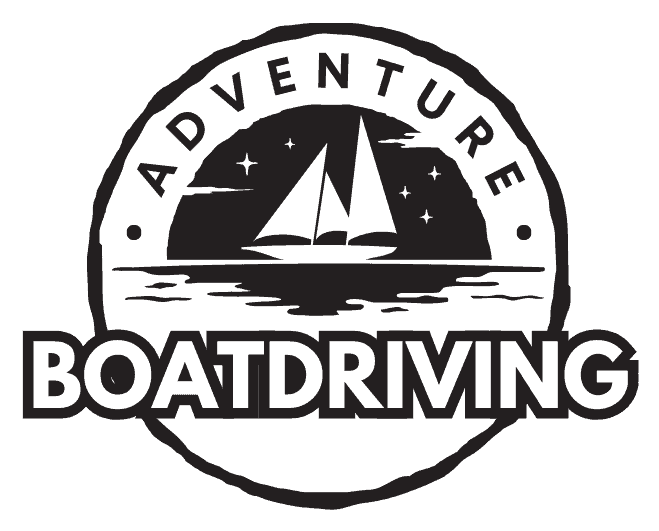
How Much Does a Speed Boat Cost? (Price Chart)
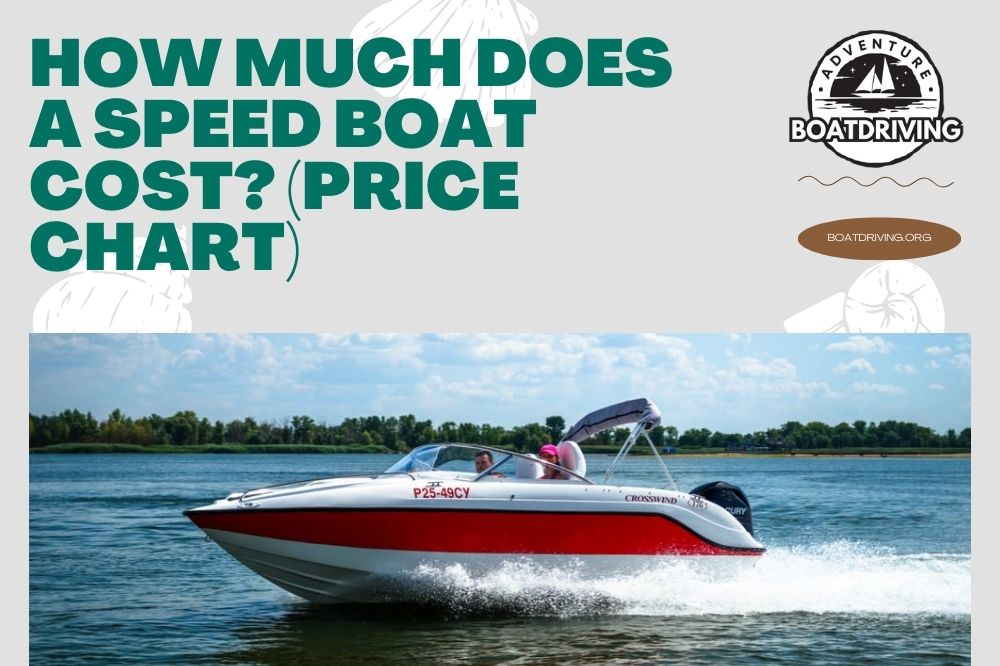
A speed boat (motorboat, powerboat) is a high-speed boat thanks to its inboard or outboard power engine. Its V-shaped hull and deck shape are always aerodynamic to increase speed by reducing wind resistance. Even fiberglass used for the hull is a light material that makes it easier for the boat to reach high speeds .
However, the overall speed boat design will significantly vary, depending on its purpose. Nowadays, you can find over thirty different motorboat types and numerous marks, affecting how much does a speed boat cost. Thanks to the available selection, you can effortlessly find the model that suits your taste and budget.
Table of Contents
What Is a Speed Boat?
How much does a speed boat cost, speed boat ownership costs.
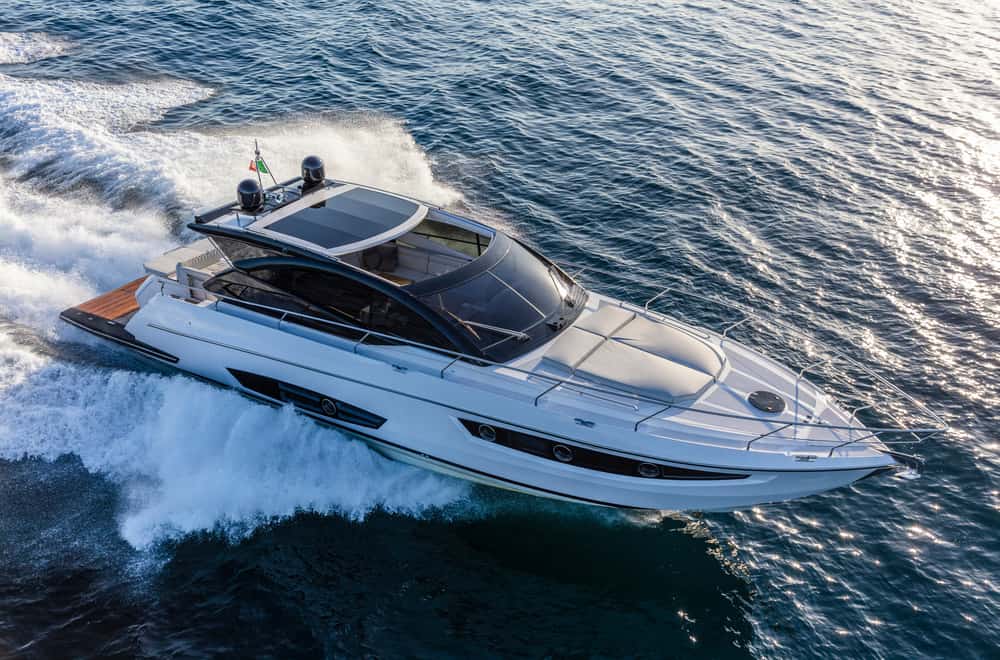
Most people consider the terms motorboat, powerboat, and speed boat the same. It is and is not entirely true.
A motorboat is any vessel driven by an engine, while a speed boat (powerboat) is a speed motorboat variation. It is designed for racing and waterskiing and typically is not suitable for more than eight people.
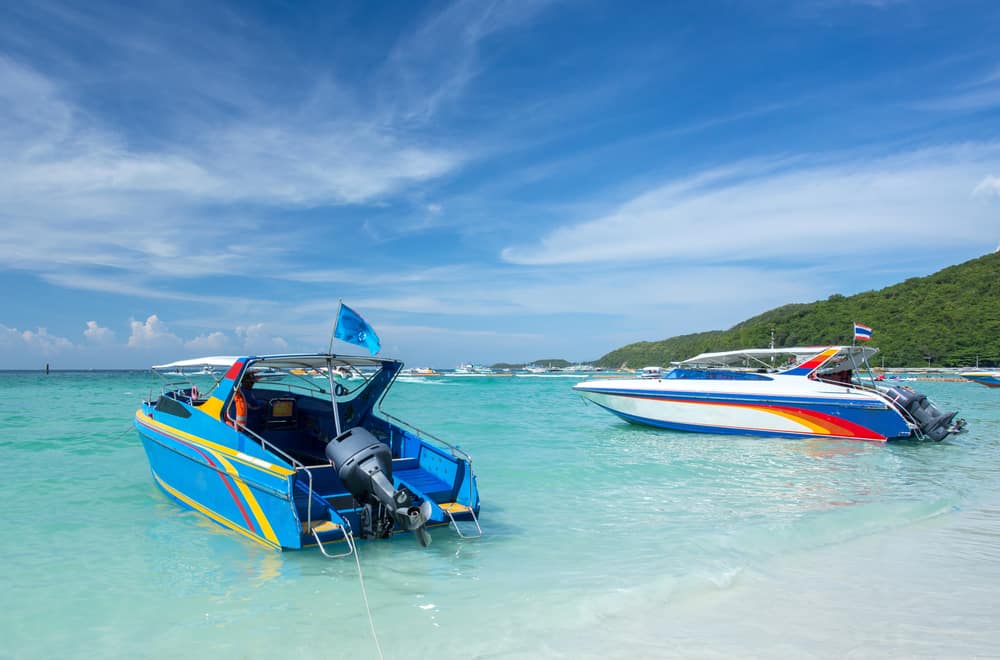
Speed boat overall costs will vary, depending on many different things. Let’s take a look.
Type and model
The final speed boat price will primarily depend on the type you want to buy. The first thing you should look at is the engine type.
Outboard speed boats have an engine on the boat exterior that goes in the water while sailing. On the other hand, it is placed inside the vessel hull in an inboard type.
| $500 to $5,000 | |
| Catamaran | $10,000+ |
| Sailboats | $12,000+ |
| Bowrider boat | $15,000 to $50,000 |
| $15,000 to $50,000 | |
| Deck boat | $20,000 to $50,000 |
| Fishing boat | $25,000 to $100,000 |
| $30,000 to $100,000 | |
| Cuddy cabin | $50,000+ |
| House boat | $50,000+ |
| Speed boat | $75,000+ |
| Trawler | $90,000+ |
| Canal boat | $100,000+ |
| Cabin cruiser | $100,000 to $500,000 |
| Yacht | $300,000+ |
Since maintaining the outboard engine is less challenging, this speed boat type is always less expensive. Inboard types are faster and more pricey, but their downside is difficult accessing the inboard engine and complicated cleaning.
Plus, they have less space for passengers, and the number of manufacturers producing parts for this motor type is limited. Despite those disadvantages, adrenaline junkies will always choose the speed at the expense of comfort.
| Bayliner 170 | $18,000 | Outboard | 17.5 feet (5.3 m) | 2017 |
| G3 boat bay 18 | $23,500 | Outboard | 18 feet (5.5 m) | 2019 |
| Ranger Z175 | $26,000 | Outboard | 17.5 feet (5.3 m) | 2017 |
| Bayliner VR5 | $27,000 | Inboard | 20.3 feet (6.2 m) | 2017 |
| G3 boat bay 20 | $27,500 | Outboard | 20 feet (6 m) | 2019 |
| Chaparral boat 210 Suncoast | $40,000 | Outboard | 20.8 feet (6.3 m) | 2018 |
| G3 boat bay 22 DLX | $43,000 | Outboard | 22 feet (6.7 m) | 2019 |
| Chapparal boat 223 Vortex VR | $45,000 | Inboard | 22.25 feet (6.8 m) | 2018 |
| Chaparral Boat 227 SSX | $51,000 | Outboard | 23 feet (7 m) | 2018 |
| Sea ray SLX 250 | $90,000 | Inboard | 25.5 feet (7.8 m) | 2018 |
| MasterCraft X-Star | $200,000 | Inboard | 23 feet (7 m) | 2020 |
| Sea ray sundancer 320 | $210,000 | Both options | 34.9 feet (10.6 m) | 2018 |
Once you decide to purchase a speed boat , you should be prepared for its high price since you can’t find a new one under $75,000. Modern models that reach high water speeds cost at least $350,000, but their prices vary significantly.
In fact, they will depend on a few crucial features, including the type, model, and brand you choose, speed the boat can develop, and desired amenities. Be prepared that the price of super cool models and famous brands can go up to $4,000,000, sometimes even more.
On the other hand, you can buy a basic outboard speed boat for only $20,000. It can’t develop top speeds, but it will give you the full satisfaction and enjoyment you are looking for.
Another option is to buy a used speed boat for far less money. The reason is a quick depreciation of this vessel type.
| Wright Performance 360 | $450,000 | Outboard | 36 feet (11 m) | 2017 |
| MTI-V42 | $585,000 | Outboard | 42 feet (12.8 m) | 2016 |
| Outerlimits SL41 | $625,000 | Outboard | 41.25 feet (12.6 m) | 2015 |
| Mystic C4400 Habitual | $700,000 | Twin inboard and outboard | 44 feet (13.4 m) | 2018 |
| Skater 388 | $700,000 | Twin inboard and outboard | 38 feet (11.6 m) | 2014 |
| Adrenaline ZRX47 Carbon Series | $1,000,000 | Twin turbo | 47 feet (14.3 m) | 2018 |
| Mercedes-AMG Marauder | $1,200,000 | Outboard | 50 feet (15.2 m) | 2018 |
| Midnight Express Pied-a-Mer | $1,600,000 | Both options | 60 feet (18.3 m) | 2017 |
| Cigarette Racing Tirranna | $3,500,000 | Outboard | 59 feet (18 m) | 2019 |
If you are fancy a high-end speed boat , and your budget is high enough, you should consider one of the luxury options you have at your disposal. Such a vessel is an excellent choice for you when you are interested in racing or waterskiing that requires a high-performance model.
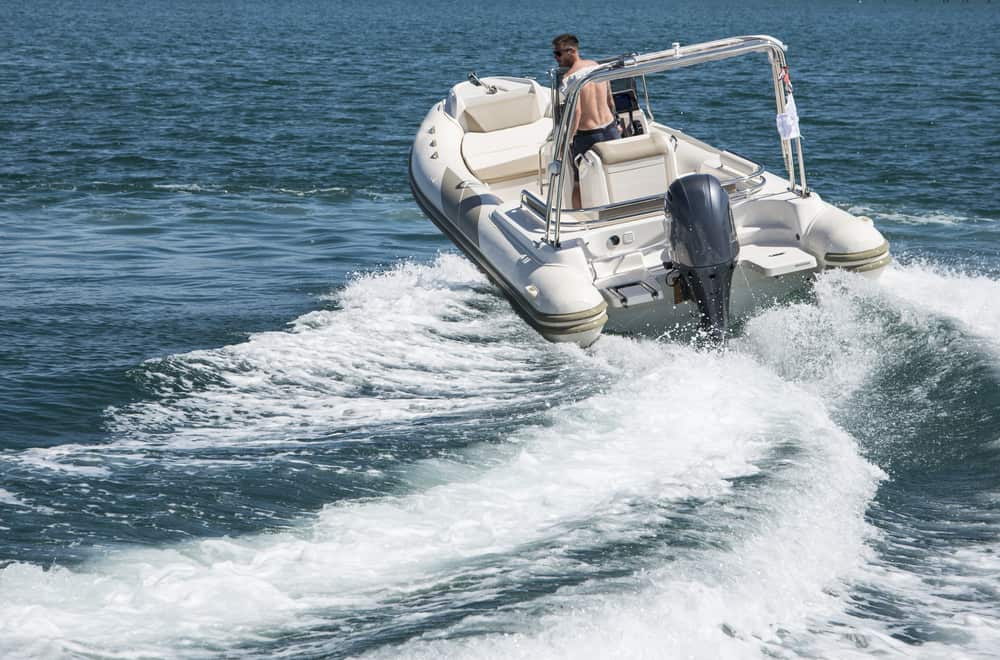
The best offshore V-bottoms brands on the current market are Cigarette, Donzi, and Magnum. The Cigarette is the original American boat manufacturer and one of the premier boat builders worldwide.
In addition, you can find Fountain, Checkmate, and Baja Marine brand icons of the modern go-fast boat industry.
Remember that making speed boats is a complicated shipbuilding type, and the competition is fierce. Therefore, you shouldn’t be surprised that many manufacturers give up producing these vessels and reorient to safer models production with a more stable market.
Size, design, and style
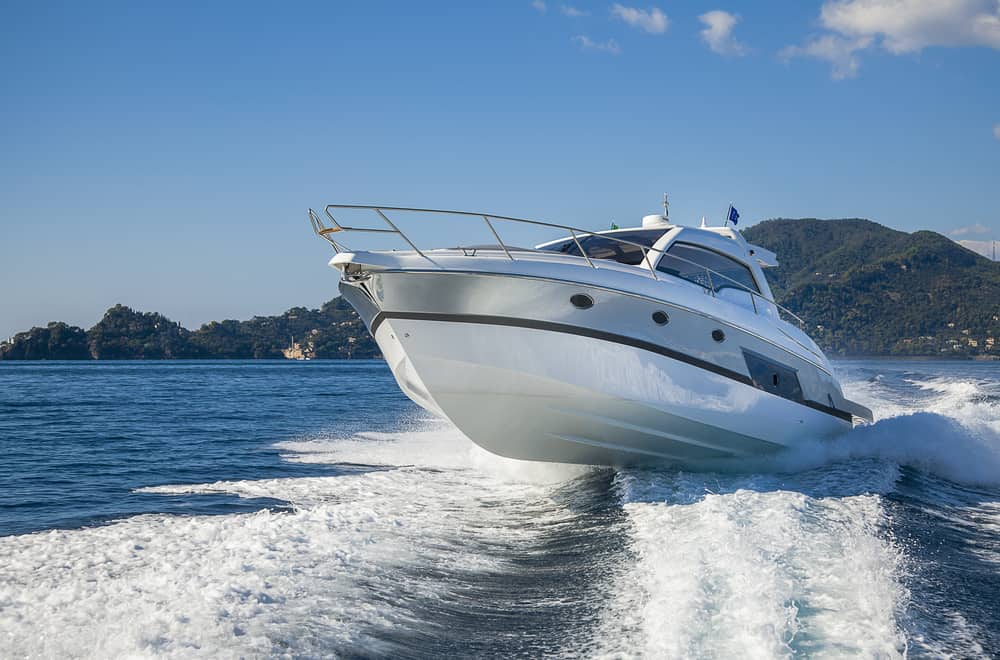
In this case, a smaller size doesn’t mean a lower speed boat price. Since these vessels’ primary purpose is to be fast, small, and with high performances, they will be costly.
Most admirers find choosing a particular speed boat design, style, and even color vital. These features depend only on your preferences and the budget you have at your disposal.
If you are looking for an affordable vessel for casual cruising or fishing, you only need a basic model. Keep in mind that even a secondhand high-performance boat will cost approximately $30,000 to $40,000 more than a brand new classic model.
The speed that a speed boat can develop
The most significant difference between various motorboat types is the speed each can develop. For instance, the Cruiser’s maximal speed is 50 mph (80.5 km/h), Deck boat can reach 60 mph (96.5 km/h), and Personal watercraft is the fastest with a top speed of 70 mph (112.5 km/h).
On the other hand, speed boats are created to quickly develop a speed of 100 to 200 mph (161 – 322 km/h). Spirit of Australia reached the highest water speed record of impressive 317.6 mph (511 km/h), making it the fastest boat worldwide.
Typically, fast and high-performance speed boats will be costly. Since most people purchase this vessel type for racing, you can expect them to always look for the model that can bring them a win.
On the other hand, there are a lot of enthusiasts who enjoy fast boating. As expected, they will try to buy the fastest possible model according to their budget.
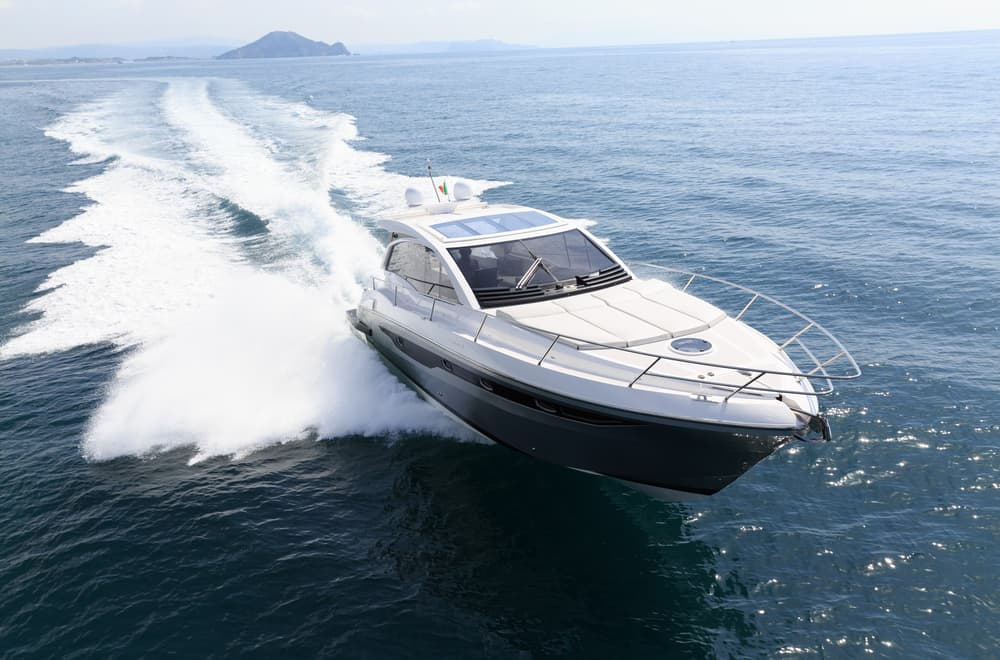
Remember that a speed boat price is not the only expense you will have, and you should consider all additional costs of owning such a vessel.
Depreciation
For a start, this boat type has a high depreciation rate. In other words, your speed boat will lose 20% of its value in the first year after buying it.
Its value will decrease in the second year by 15% and an additional 14% in the third year. That way, most models will entirely depreciate within a decade, lowering your chances of reselling it.
Maintenance
Maintaining a speed boat is pricy, mainly because of the challenging cleaning of its powerful motor . Plus, replacing complicated parts can be tricky, particularly in models with an inboard engine .
Insurance is a mandatory cost for every speed boat owner. The problem is that it is always much higher for this boat than for other models.
An average speed boat insurance cost will also depend on the state where you live. You will pay at least $250 for it in low-cost and $330 in medium-cost states.
In most cases, northern states without a coastline are less expensive than those in the south. On the other hand, your insurance will go up to $470 if you live in Alaska, Hawaii, or Florida.
Fees and taxes
Before using your speed boat, you need to get a boating license and register it. Both things are typically costly and depend on the type and model you buy. Sometimes, you will need to pay local taxes on vessel ownership, according to the state regulations.
The best option you have is to store your speed boat in a nearby marina. Typically, the membership will run a few thousand dollars a year. Plus, it will be necessary to protect your vessel by wrapping it appropriately if you live in a region with cold weather.
Outside storage will typically cost you $10 to $15 per 1 foot (30.5 cm). On the other hand, inside storage will be more pricey and typically costs $50 to $200 per 1 foot (30.5 cm). Finally, an in-water dock space price ranges from $1,000 to $5,000 per season.
Owning a speed boat is an excellent advantage, but the average price of such a vessel is typically high and often unattainable for the average customer. Besides the high initial expenses, you should check other ownership costs on time.
Related posts:
- How to Get A Captain’s License? (Requirements Lists)
- 6 Tips to Choose the Correct Boat Propeller
- 10 Best Bay Boats Under 30k
- How Much Does a Boat Cost? (Price Chart)
Similar Posts

31 Different Types Of Boats
The primary difference between a boat and a ship is size. Other factors include crew, design, (sailing) location, and propulsion. That said, the boating space has a lot of variation. Boats are mainly subdivided into fishing boats, entertainment boats, and racing boats, with lots of overlap between the classes. So let’s look at the different…

6 Simple Steps to Paint A Boat Trailer
Painting your boat’s trailer is essential to keeping it rust and corrosion-free. While you can certainly pretty up your trailer and even color-coordinate it with your boat, maintaining a well-kept trailer is more about function than anything else. This article includes an easy-to-follow process for restoring boat trailers- not only to stay looking good but…

21 Best Affordable Bay Boats for the Money
If you’re looking for a boat to cruise through shallower waters, a bay boat is the answer. They’re great for near-shore or inshore fishing. And they can also cross larger, deeper bodies of water when necessary. But if you’re in the market for one of these flexible vessels, how do you choose the right one?…

31 Best Boat Names with Meanings & Stories
You might know that houses, cars, and boats are often referred to as ‘she’. And while lots of people name their treasured trucks and sports cars, naming a boat is different. For someone to know your car’s name, they’d have to ask you. But with boats, the name is boldly painted on the side or…

10 Best Boats With Beds (With Pictures)
Are you looking to buy a boat you can travel with overnight? If the idea of spending the night out in the water seems like fun, getting a boat with beds is your best option. The good thing is that you will find small affordable boats with adequate sleeping quarters for one or more people…

42 Main Parts of Boat (Name & Terminology)
When you’re new to boating, it can seem like everyone is speaking a foreign language. And with the jargon ranging from everyday words to literal Latin terms, it can be tough to figure out the basics! That’s where we come in. We’re going to guide you on the most important boating parts and terminology. Once…
Leave a Reply Cancel reply
Your email address will not be published. Required fields are marked *
Save my name, email, and website in this browser for the next time I comment.
How much does a boat cost to purchase and own?
Advertiser disclosure.
We are an independent, advertising-supported comparison service. Our goal is to help you make smarter financial decisions by providing you with interactive tools and financial calculators, publishing original and objective content, by enabling you to conduct research and compare information for free - so that you can make financial decisions with confidence.
Bankrate has partnerships with issuers including, but not limited to, American Express, Bank of America, Capital One, Chase, Citi and Discover.
How We Make Money
The offers that appear on this site are from companies that compensate us. This compensation may impact how and where products appear on this site, including, for example, the order in which they may appear within the listing categories, except where prohibited by law for our mortgage, home equity and other home lending products. But this compensation does not influence the information we publish, or the reviews that you see on this site. We do not include the universe of companies or financial offers that may be available to you.
- Share this article on Facebook Facebook
- Share this article on Twitter Twitter
- Share this article on LinkedIn LinkedIn
- Share this article via email Email

- • Personal loans
- • Auto loans
- Connect with Pippin Wilbers on LinkedIn LinkedIn
- Get in contact with Pippin Wilbers via Email Email
The Bankrate promise
At Bankrate we strive to help you make smarter financial decisions. While we adhere to strict editorial integrity , this post may contain references to products from our partners. Here's an explanation for how we make money .
Founded in 1976, Bankrate has a long track record of helping people make smart financial choices. We’ve maintained this reputation for over four decades by demystifying the financial decision-making process and giving people confidence in which actions to take next.
Bankrate follows a strict editorial policy , so you can trust that we’re putting your interests first. All of our content is authored by highly qualified professionals and edited by subject matter experts , who ensure everything we publish is objective, accurate and trustworthy.
Our loans reporters and editors focus on the points consumers care about most — the different types of lending options, the best rates, the best lenders, how to pay off debt and more — so you can feel confident when investing your money.
Editorial integrity
Bankrate follows a strict editorial policy , so you can trust that we’re putting your interests first. Our award-winning editors and reporters create honest and accurate content to help you make the right financial decisions.
Key Principles
We value your trust. Our mission is to provide readers with accurate and unbiased information, and we have editorial standards in place to ensure that happens. Our editors and reporters thoroughly fact-check editorial content to ensure the information you’re reading is accurate. We maintain a firewall between our advertisers and our editorial team. Our editorial team does not receive direct compensation from our advertisers.
Editorial Independence
Bankrate’s editorial team writes on behalf of YOU – the reader. Our goal is to give you the best advice to help you make smart personal finance decisions. We follow strict guidelines to ensure that our editorial content is not influenced by advertisers. Our editorial team receives no direct compensation from advertisers, and our content is thoroughly fact-checked to ensure accuracy. So, whether you’re reading an article or a review, you can trust that you’re getting credible and dependable information.
How we make money
You have money questions. Bankrate has answers. Our experts have been helping you master your money for over four decades. We continually strive to provide consumers with the expert advice and tools needed to succeed throughout life’s financial journey.
Bankrate follows a strict editorial policy , so you can trust that our content is honest and accurate. Our award-winning editors and reporters create honest and accurate content to help you make the right financial decisions. The content created by our editorial staff is objective, factual, and not influenced by our advertisers.
We’re transparent about how we are able to bring quality content, competitive rates, and useful tools to you by explaining how we make money.
Bankrate.com is an independent, advertising-supported publisher and comparison service. We are compensated in exchange for placement of sponsored products and services, or by you clicking on certain links posted on our site. Therefore, this compensation may impact how, where and in what order products appear within listing categories, except where prohibited by law for our mortgage, home equity and other home lending products. Other factors, such as our own proprietary website rules and whether a product is offered in your area or at your self-selected credit score range, can also impact how and where products appear on this site. While we strive to provide a wide range of offers, Bankrate does not include information about every financial or credit product or service.
Key takeaways
- A boat from the last 10 years of models costs an average of $47,000, while basic models can run around $1,000 or less and yachts can go into the millions of dollars.
- Annual maintenance for the boat costs 10 percent of the boat price on average, but you’ll also have to consider other costs like insurance, storage/mooring, fuel, registration and repairs, as some examples.
- Make sure to choose the boat that works for your budget, usage needs and lifestyle.
- You can find financing through boat, personal or dealership loans.
If you love cruising the open waters, fishing or just docking-and-dining, buying a boat may seem like a great idea. While boat costs vary significantly, you can expect to pay anywhere from $15,000 to $75,000 for the average new vessel, and upwards of $100,000 for a more luxurious model.
Taking out a boat loan can make it easier for you to finance your purchase. However, there is more to the cost of owning a boat than the initial price tag. You must also consider the maintenance costs, boat insurance, fuel costs and potential taxes.
How much does a boat cost?
Boat prices can vary widely depending on if it’s new or what used condition it is in. The type of boat can also affect price drastically. Plus, market conditions can affect boat pricing, much like cars.
For instance, according to J.D. Power , the average retail price of the previous 10 model years for outboard boats was about $47,000 at the end of 2023. At the end of 2021, it was about $53,500. Meanwhile, the last ten model years for inboard boats saw an average price of about $350,000 at the end of 2023, down about $20,000 from two years prior.
How does the type of boat I get impact costs?
The cost of owning a boat differs widely depending on type. For instance, a larger boat will naturally have higher fuel costs to run. Storing a larger boat may also be more complex and costly.
The more expensive and feature-heavy your boat, the more it will cost to insure it. For instance, Nationwide states that faster boats often cost more to insure due to the increased risk. The length, age and type of the boat can also affect how much insurance the boat needs. Your insurance can even be dependent on where you use the boat. Lakes, bays, oceans and rivers all present different safety risks.
Further, a larger and more technologically complex boat could mean higher maintenance and repair costs. There are simply more parts that could break.
Bigger and more expensive boats may also require larger loans and longer loan terms to afford. You will pay more in interest to finance the boat in the long run.
Average boat prices in 2024
Jon boats are among the most cost-effective boat models, while yachts and catamarans are among the most expensive ones.
Affording a boat
The best time to buy a boat is typically in the fall. Most manufacturers start advertising discounts in September or October and continue to do so into the winter months. Purchasing your boat during the off-season could help you cut costs significantly and take on less or no debt.
Even if you find a boat at a discounted price or buy the boat used , you may need help financing it. After all, midsized boats often cost around $30,000, which isn’t exactly pocket change. If you need to borrow money to cover the cost of your boat, there are several options.
The most popular ways to finance your boat are through a boat loan, a personal loan or financing through a dealership.
- Boat loan: These personal loans are designed specifically with purchasing a boat in mind. They typically come with fixed rates so you make the same boat loan payment each month and may use the boat itself as collateral if the loan is secured.
- Personal loan : These fixed-rate installment loans can be used for any purpose, including purchasing a boat. Personal loans tend to be unsecured, so you may not have to use the boat as collateral.
- Dealership loan : These are boat loans that are offered right through a dealership and are convenient because you don’t have to choose your own boat loan lender . However, they may have higher rates , longer terms and require a larger down payment.
Other boat costs to consider
When you buy a boat, you have to consider boat costs like maintenance, potential repairs and the cost of fueling and operating a boat.
Additional costs associated with boat ownership include the cost of storing your boat, the cost of a trailer, safety necessities and miscellaneous items such as water sports equipment.
Boat maintenance and repair costs
Typically, annual boat maintenance costs about 10 percent of the cost of the boat itself. For example, a boat that cost $20,000 to purchase would cost roughly $2,000 a year to maintain.
Examples of typical boat maintenance include:
- Painting the hull.
- Cleaning the deck.
- Replacing broken or worn down parts.
- Winterizing the boat to protect it from the elements during the off-season.
Like cars, boats require regular maintenance to reduce wear and tear.
Fuel and operating costs
You must also consider fuel costs, especially if you have a larger boat. Smaller boats typically just take regular or premium gasoline, while larger vessels may require diesel, which is more expensive.
You can avoid fuel costs if you get a sailboat, which is entirely wind-powered, but most other boats require fuel. You should research the fuel needs of the boat you want to buy before making a purchase.
Additional operating costs for a boat include oil changes, batteries, a pump and lights. Just like a vehicle, these elements should be checked and replaced regularly.
Boat insurance, taxes, certifications and registrations
When you buy a boat, you also have to get boat insurance, get your boat registered and potentially get certified to drive it, depending on the state you live in. Some states also charge boat taxes, so research your local requirements before buying a boat.Here is a breakdown of these costs:
- Boat insurance: It typically costs around 1 to 5 percent of the boat’s value. So, using the example above, the average annual cost of insurance for a $20,000 boat would be between $200 and $1,000 a year.
- Boat taxes: They are required in some states. If your state charges a boat tax, you will have to pay it once a year. There may also be a one-time sales tax when you purchase.
- Certifications and registration: Depending on state requirements, you may need to pay for boat registration, including annual renewal. Your state may also require that you take safety certification courses to operate the boat.
Boating classes
In addition to the certification courses your state may require, you can take a wide variety of boating classes. Formal training with your boat may help lower your insurance payments, but you will also have to budget for course fees. It can be a good investment. Knowing as much as possible about using the boat helps keep you or anyone you take on the boat safe.
If you take boating safety courses through your state or the federal government, fees often range from about $10 to $40 per class.
Beyond introductory and basic safety courses, you might also look into specialized training. You can find courses on navigation, GPS use or waterfowl hunting safety. You might also need specialized training based on the type of boat you get, such as a sailing course if you get a sailboat.
Specialized boating courses might range from $45 from a single-day, online course to far more for a curriculum that’s weeks long. There is also the option for private courses that can happen right on your own boat, but these can run around $500 for a few hours.
Storage and mooring
An important but often overlooked element of owning a boat is properly storing it. Most people do not use their boat year-round, and you have to have somewhere to store your boat during the winter months.
There are a variety of boat storage options . Indoor storage is more expensive because it offers tighter security and you do not have to worry about winterizing the boat to protect it from the elements. Outdoor storage is more cost-effective and can be more convenient in certain climates, but since your boat will be exposed, you’ll likely spend more on maintenance to keep it in good shape.
Storing your boat in your garage or driveway is likely the cheapest option. However, you will likely have to buy a trailer and winterize the boat. Note that Homeowners Associations sometimes have rules about parking boats in driveways, so make sure you are allowed to do so before settling on this option.
Here is a pricing breakdown of the most common boat storage options:
| Storage option | Cost | Pros | Cons |
|---|---|---|---|
| Dry stack storage | $10-$20/ft/month | ||
| Marina storage | $55 and up/ft/month | ||
| Self storage facility | Up to $10/ft/month | ||
| At home storage | Boat trailer cost: starts at $700 |
Necessities
In order to get your boat to the water, you need to have a boat trailer and a vehicle that can tow it, such as a truck. These costs can vary depending on the size of your boat.
A boat trailer can range from $700 to over $10,000. In addition to a trailer and a towing vehicle, you must invest in your boat’s required safety equipment. These include:
- A fire extinguisher.
- Enough life jackets for every passenger.
- A flotation device.
- A visual signaling device.
- A sound signaling device.
The exact safety equipment you need can vary by state, but these are the basics.
Having a medical kit and flashlight is also a good idea. Depending on the size of your boat, you may want paddles on board in case your engine quits.
Additional cost considerations
Once you buy your boat, there will inevitably be accessories you want to splurge on that aren’t strictly required.
You may want to invest in water sports equipment, dry bags to keep your valuables safe, waterproof electronics, fishing equipment or other items that make boating more pleasurable. Before shopping, set a budget to limit your spending.
Tips for saving money on boat costs
If you really want to spend your weekends out on the water but don’t have the funds for luxury boating, there are some ways you can reduce boat costs:
- If you find yourself strapped for cash, consider a smaller boat like a jon boat, fishing boat or speedboat.
- To reduce the cost of owning a boat, consider buying a used boat in good condition. For instance, a new current-year Tahoe T16 bowrider is about $27,000. The same model a few years older is about $19,000.
- Buy the boat off-season in fall or winter.
- If you’re taking out a loan, shop around for the best rates, even if that means not taking the loan from the dealership.
- You can also avoid paying interest on a loan by saving for the boat. It’s a luxury purchase and not an emergency. Some split the cost with friends or family and share the boat.
- Use your local state programs for courses and certifications. They tend to be much more affordable than private lessons.
- Work with your insurance for any discounts, such as getting better rates if you take a boater safety course. A clean boating record can mean cheaper insurance. Choose the types of coverage, limits and deductibles that make sense for your boat and budget.
- If you can, store the boat somewhere on your own property to save on marina or storage fees.
- Keep up on regular boat maintenance and care to reduce the risk of costly repairs.
- Consider fuel costs. Larger boats may need more expensive diesel fuel. If you want to really save on fuel, opt for a sailboat.
- See if you can get boat accessories and equipment, such as trailers, used and in good condition or on sale.
- Renting a boat can get you out on the water without the added costs of storage and upkeep.
The bottom line
Buying a boat is an exciting adventure, but it is also costly and time-consuming. There are so many extra boat costs beyond the buying price. You must stay on top of maintenance and repairs to keep your investment ship-shape.
Before buying a boat, consider all these costs and write a cost estimate/yearly budget. It is important to ensure you can handle all of the costs associated with having a boat before buying one.
Choosing a financing option like a boat loan, personal loan, or dealership financing could help you plan some of the costs. However, you can avoid taking out a loan by saving up instead, buying a used boat for a lesser cost or splitting the cost and sharing the boat with a trusted friend or family member. You might also look into renting a boat if owning a boat is too expensive.
Whichever option you choose, make sure that you do your research and come up with a plan before making any decisions.

Related Articles

How to finance a boat: 5 steps & where to find the best loans

Is it hard to get a boat loan? It depends on these factors
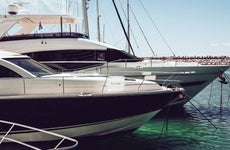
How much boat can I afford? 4 steps to find your budget

Should I buy a boat or rent one? Consider these factors

Motor Boat Types Explained: How to Find the Right One for You
- Latest Posts
Do you dream of owning a motorboat? Motorboats are great for fishing, water sports, adventure, and fun. They are also referred to as speedboats and powerboats and come in different shapes and sizes. There are different types of motorboats today. This article has all the different motor boat types explained as well as their advantages and disadvantages. Read on to find your dream motorboat.
Types of Motor Boats
Bowrider motor boats.
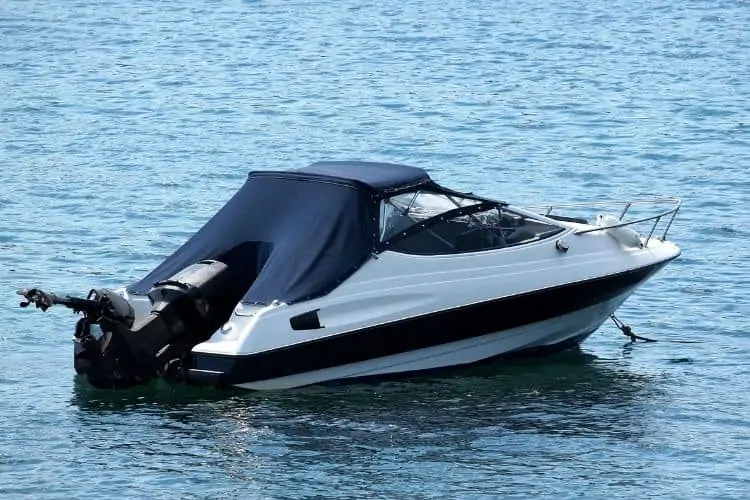
Bowriders are a perfect choice for beginners and those with family. The open bow area makes room for extra seats in the helm and can hold more than 8 passengers. The boat is about 17-30 inches in length. The V-shaped hull offers smooth rides, whether on inland waters or coastal waters.
The boat can be powered by outboard engines or stern drive and can be used for water sports or fishing.
- Bowriders can be used for water sports, entertaining, fishing, and entertainment.
- It can fit up to 9 passengers.
- It can be powered by a sterndrive, jet propulsion, inboard, or outboard engines.
- The motorboat looks crammed with maximum passengers on board.
Cabin Cruisers

Powerboats that have sleeping accommodations onboard are referred to as cabin cruisers. They are ideal for relaxed cruises as they include modern comforts like air conditioners, heaters, and power generators.
These cruiser boats have a deep V-bottom, shaft drive mechanism, and rudder steering. The cruiser is mainly used on salty, coastal waters and can be propelled with pod drive, sterndrive, outboard, and inboard motors.
- The motorboat is great for day and night cruising.
- It has a seating capacity of 10 people.
- The cruiser offers luxury and accommodation.
- They are expensive to buy and maintain.
Center Console Powerboats
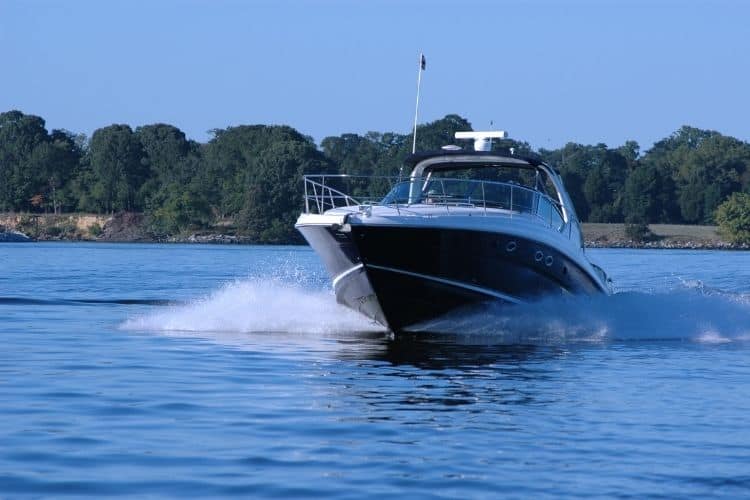
The center console gets its name from the fact that the helm is fitted in the console found at the boat’s center. It lacks a foredeck and cabin. The motor boat’s design makes it possible for anglers to walk from the bow to the stern without stepping on the gunwales. This 13-45’’ boat uses outboard motors to cruise.
Center consoles are great for sports fishing. They work perfectly in harsh offshore waterways where there are plenty of schools of fish. The deck in center consoles has powerful insulation to ice the fish storage. Also, the boat can hold fish lockers, outriggers, gunwale rod holders, and bait wells.
- Center consoles can be used for fresh and saltwater fishing, cruising, and water sports.
- They have better access to water.
- They are easy to maintain.
- It lacks protection from the elements.
Convertible Motor Boats
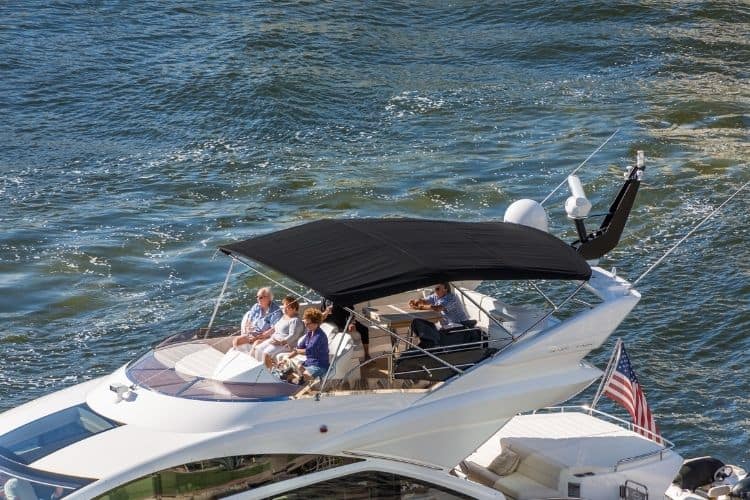
Convertible motor boats are great for fishing and weekend cruising. This large-sized boat has a large cabin, a flybridge for running the boat, an entertaining area for passengers, and an advantage point for spotting fish grounds.
- They have large cabins.
- The height of the flybridge elevates the captain to spot fish-grounds easily.
- They are ideal for offshore fishing.
- They are easily accessible, like express fishing boats.
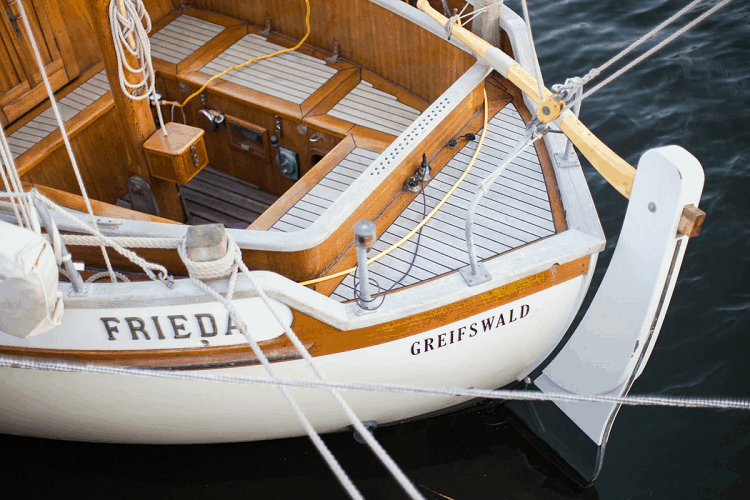
Deck boats are 25-35 ft. long and are mainly made of fiberglass or aluminum. They have better performance and space compared to pontoon boats since they have a V-shaped hull. The open deck available on the boat provides plenty of seating space for passengers. They, however, have no space for accommodation below the deck.
Deck boats are either powered by stern drive, jet drive, or outboard engines. The boat is mainly used for recreation activities such as water sports and swimming.
- They are perfect for families and parties.
- They have more capabilities and amenities than bowriders.
- They can hold up to 14 people.
- They are not fast.
- They are less spacious compared to pontoons.
Bowrider Boats

This boat is also called a quintessential family boat. They have spacious rooms for more than eight passengers on the cockpit, helm, and bow cockpit. These boats also offer comfort and leisure through the swim platform.
Bowriders have a V-shaped bottom that can cruise through different weather conditions. Although the bowrider offers splendid rides using the sterndrive power, the demand to use outboard engines is on demand.
- They are versatile and can be used for fishing, watersports, and entertaining.
- Bowriders are affordable.
- Passengers can sit in the front and back.
- They are easy to drive.
- It is not great for overnight cruising.
- It has narrow and cramped seating at the front.
Dinghy Boats
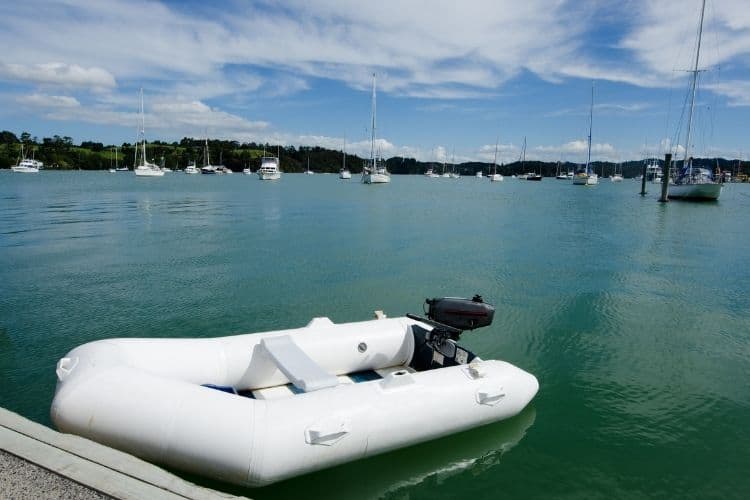
Dinghy boats can be hard-sided or inflatable. Although oars and sails powered them in the past, dinghy boars are now powered by small outboard motors.
They are often used for transporting passengers and their personal effects to and from shore when a mothership cannot get onshore. The motorboats are also used for camping expeditions and fishing.
- Inflatable dinghy boats are easy to store.
- They are extremely lightweight.
- They are stable and durable.
- Soft inflatable dinghy boats can flip you in water on impact.
Express Cruiser Boats
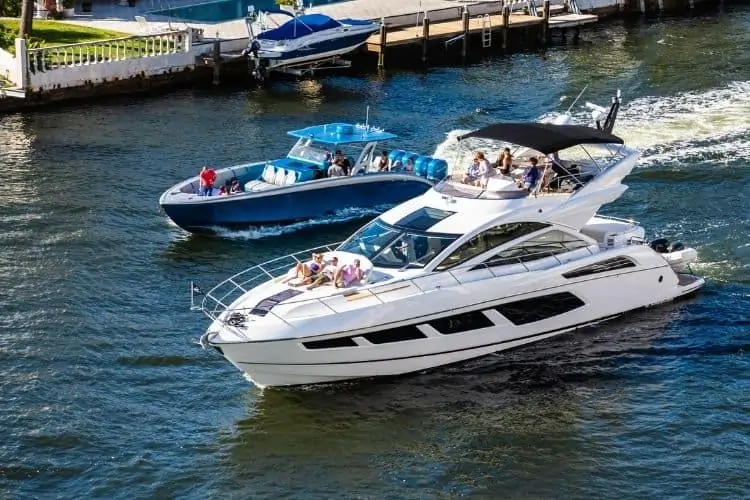
Express boats have large cockpits where guests get entertained both indoors and outdoors. The helm is slightly elevated and tucked up by the boat’s windscreen. Besides, these 30-50-foot-long cruisers have more outdoor space and multiple cabins.
In terms of cruising, these motorboats can achieve speeds of 25-30 knots. They can be powered by pod drives, stern drives, or twin engines.
- Express cruiser boats are great for sightseeing.
- They have more outdoor space.
- They have fast speeds.
- They consume a lot of fuel.
- They are pricey.
High-Performance Motor Boats
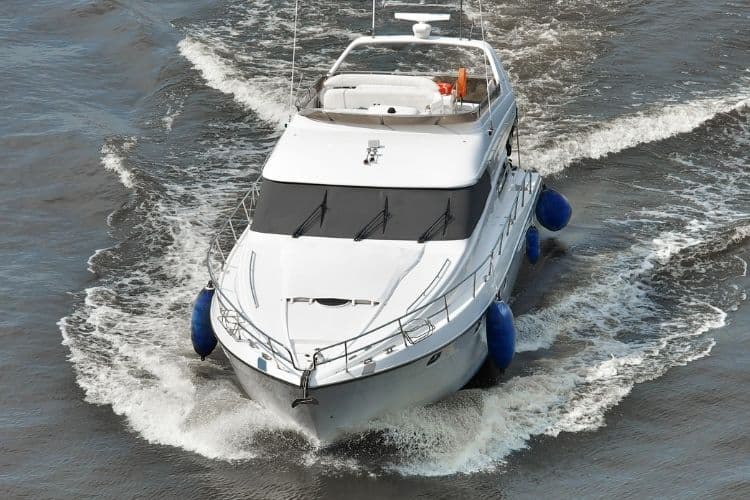
As the name suggests, these motorboats are designed for speed and performance. Their high power to weight ratio, steep deadrise, and narrow beam help the boat perform on the water. High-performance boats are also referred to as go-fast boats and muscle boats.
These go-fast motorboats are powered by stern drives, high horsepower outboards, or surface drives. With 25-60 ft. length, these boats are light, strong, fast, and ideal for fast cruising.
- They can hold up to 6 passengers in the cockpit.
- They are built for racing.
- They are expensive
Personal Watercraft Boat

Personal watercraft are designed for fun, pleasure, and adventure. These boats are also referred to as jet skis and water scooters. With them, one can explore the waters or engage in water sports. Personal watercraft are either sit-downs or stand-ups. Sit-down s can hold two or more passengers, while stand-ups can only hold one rider.
- They are smaller and easier to maneuver
- They are perfect for water sports and adventure.
- Servicing them is easy, and they are more stable on the water.
- You need safety gear when riding a personal watercraft powerboat.

Houseboats are also known as floating houses as they have dining areas, bedrooms, and kitchens. These boats are ideal for families, entertaining, recreation, cruising, or enjoying water sports. They come in different shapes and sizes and mostly measure 25 ft. in length to 150 ft.
Houseboats have broad flooring and modern amenities to offer luxury. These boats are motorized and are incapable of working on their power.
- Houseboats can also be used as living houses.
- You have vacation activities throughout the year.
- Fishing takes place anytime.
- If you live on a houseboat, you have to join the homeowner’s association.
Inflatable Boats
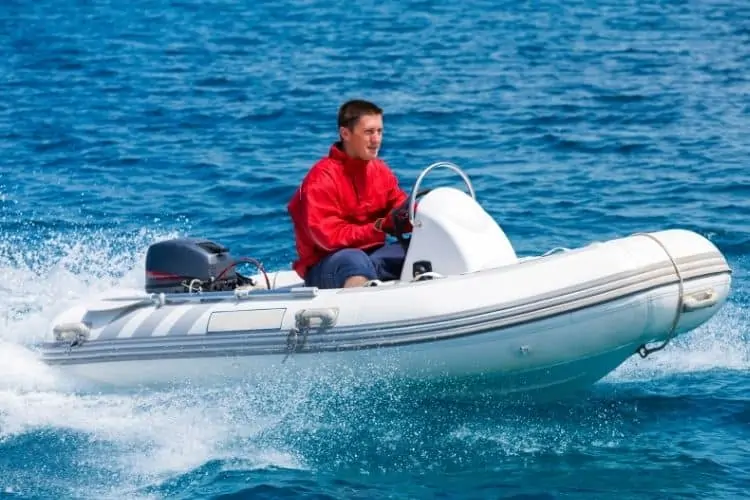
These boats have inflatable tubes on the sides for fast and easy inflation and deflation. They also have flexible or rigid floors, depending on their size. Measuring 6-14’’, inflatable boats are ideal for beginners.
The common motors used in inflatables are outboard motors as they can be mounted on the rigid transom.
- They are lightweight when deflated, making them easy to transport.
- They are good for beginners.
- They are not as stable as other powerboats.
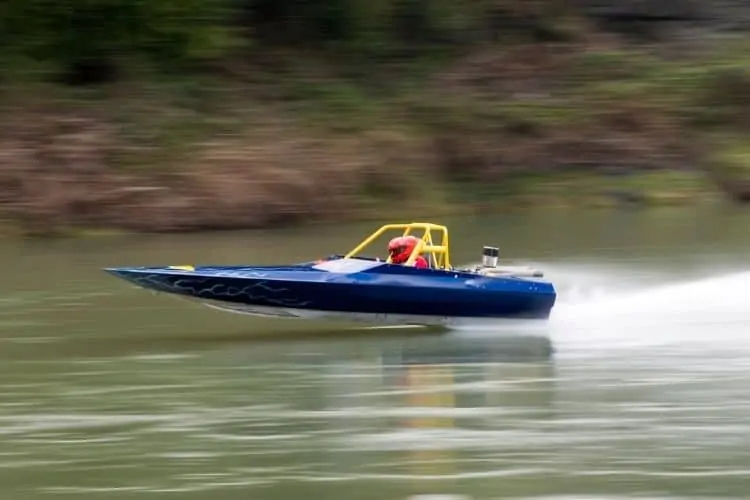
These are run by single or several jet drives. They are mostly used in shallow waters and water sports because of their small size. Jet boats are highly maneuverable too.
- It has quick turning capability and acceleration.
- They can achieve top speeds.
- They lack an exterior propeller.
Pilothouse Boats
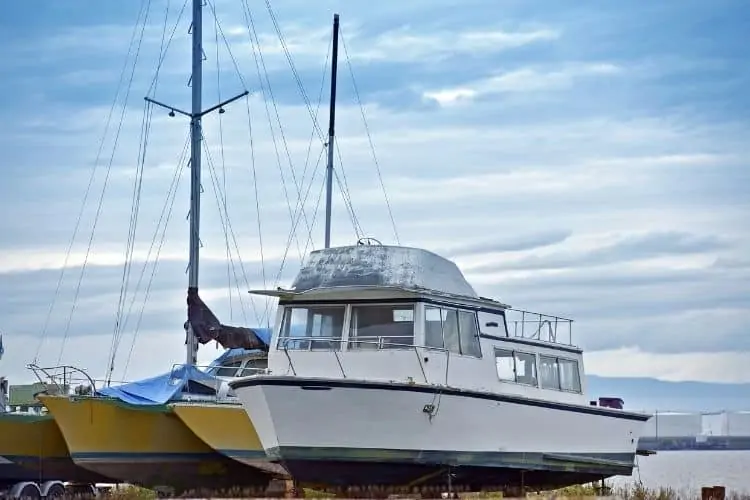
Designed to ride rougher seas, the pilothouse boats are fully enclosed to keep the helmsman dry. They are great for cruising and fishing. These boats have a berth and head and are 20-35 ft. in length.
The pilothouse boats can be powered by inboards, outboards, and stern drives.
- The helmsman stays high and dry even in rough sea conditions.
- It has reduced wind and engine noise.
- Mounting accessories on a pilothouse motorboat is easy.
- It can be hot and stuffy if the boat does not have an air-conditioner.
Pontoon Boats
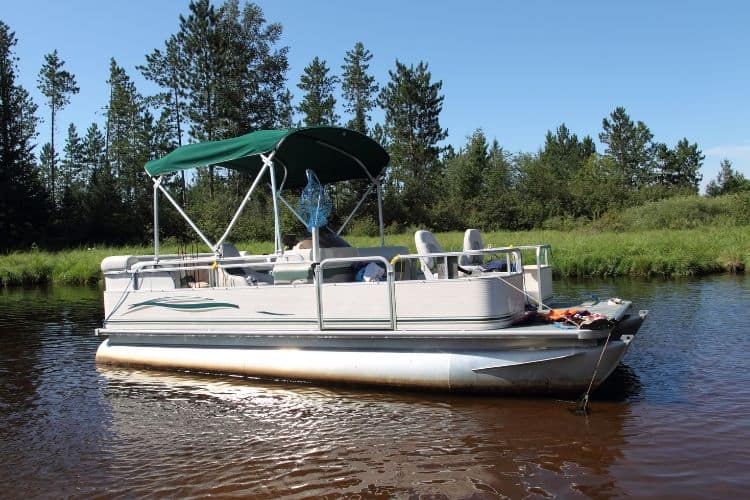
Mainly used in small water bodies, rivers, and inland lakes, pontoon boats are ideal for water sports, fishing, and cruising. They are available in 15-30 ft. length, have shallow drafts, and are highly stable. They also support a broad platform with the multiple aluminum pontoons fitted. These boats have flat decks and a fence for tour groups.
Sterndrives or outboard motors often power pontoon boats.
- They are comfortable and have great speeds.
- They can be used for fishing and water sports.
- They offer safety.
- They are not ideal for rough waters.
Power Catamaran

Power catamarans are dual hull boats that offshore fishers mainly use. Not only are they rugged, but they also offer stable rides. Furthermore, they can achieve fast speeds and consume less fuel compared to mono-hulls. They also have higher displacement, less hull volume, and shallow drafts.
Power catamaran boats have lengths of 25-40 ft. They are excellent for leisure and fishing. These boats use sails and engines, making them a crossover powerboat.
- They have more space than monohulls.
- They are more stable on waves.
- Dual hulls are faster than monohulls.
- They are more expensive than yachts.
Cuddy Cabins
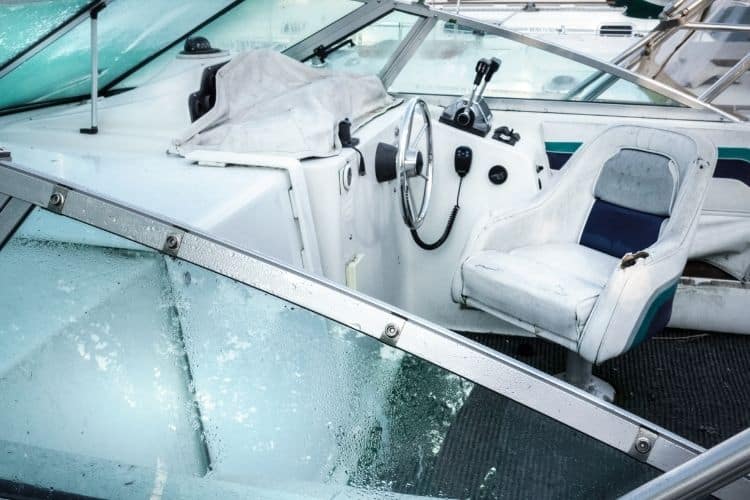
Cuddy cabin is a family-friendly powerboat. It can be used for sailing, fishing, leisure, and yachting. With a closed deck on the boat’s bow, the cuddy cabin is easy to navigate and has ample storage space. In terms of materials used, these boats are usually made of aluminum and fiberglass with a length of not less than 475 meters.
- They provide a dynamic cruising experience.
- They are trailer-able and can cruise different waters.
- They have sleeping space for day naps and nights.
- Bow access is limited.
Runabout Motor Boats
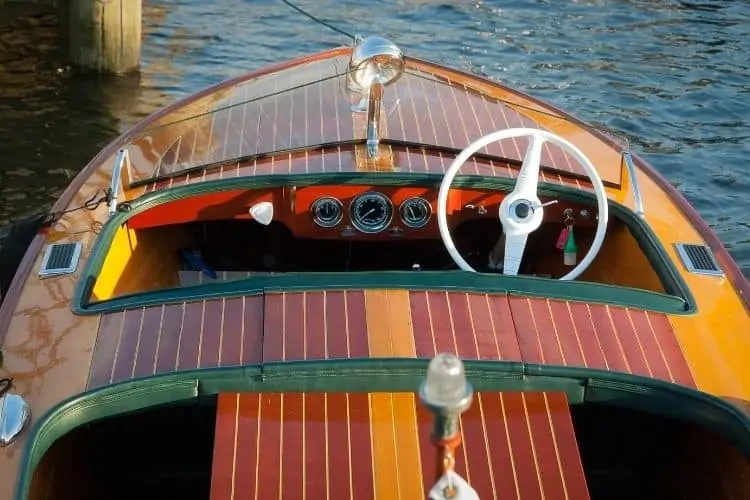
Small motorboats between 14-24 ft. in length are known as runabouts. They can be used for water sports, cruising, or fishing; runabouts can be powered by a sterndrive engine or an outboard motor. The open boat has a steering wheel behind a windscreen as well as forward controls.
Runabout motorboats can accommodate up to eight people.
- They are inexpensive.
- They are low-maintenance.
- Runabout speedboats are versatile.
- They have limited fuel capacity, thus limiting the travel range.
Utility Boats

Designed for tough use, utility boats are mainly powered by outboard motors. They are generally made of aluminum or fiberglass and are 12-20 ft. The boats can either be used as workboats or fishing vessels.
- They are ideal for novice boaters
- They are inexpensive to maintain.
- Aluminum utility boats are noisy at high speeds.
Walkarounds

These boats have side decks to provide room for anglers to move up the foredeck and around the cabin. Found in large water bodies, walkarounds measure 20-30 ft. in length. Walkarounds can use inboard engines, outboard motors, or both.
- There is plenty of room to walk around.
- They are fuel-efficient.
- They are heavy to trail around.
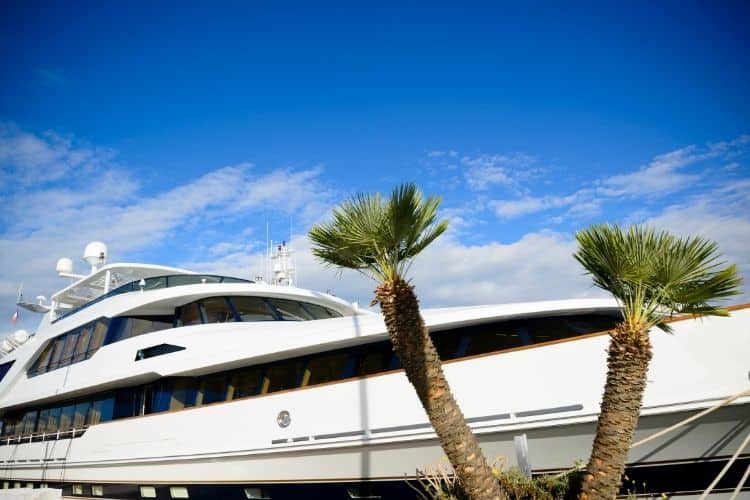
Yachts between 100-200 ft. long are known as superyachts. These motorboats have multiple decks, accommodations, a galley, lounges, and a living room. These boats are mainly used to host and entertain guests.
- It can cruise deep waters.
- They have recreational recreation.
- They are costly to maintain.

Any yacht with over 200 ft. length and up to 500 ft. height is referred to as a mega yacht. Most are custom-made and owned by the wealthy class. They feature state-of-art luxuries like a helipad, large swimming pools, plenty of guest rooms, and a crew of not less than 25 people. Ideally, they can be referred to as luxurious floating resorts.
- They offer affordable recreation and quality time for passengers.
- They can cruise in deep waters.
- Mega Yachts are only usable in warm seasons.
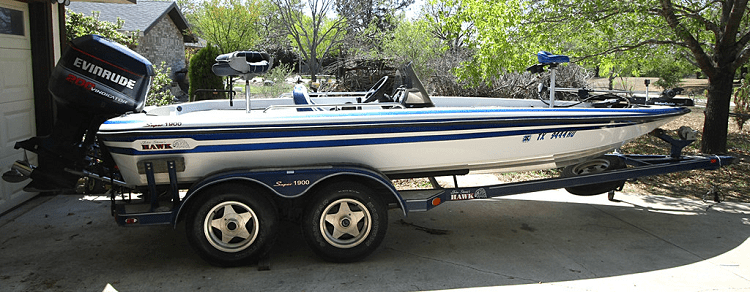
Bass boats measure 14-23 inches and are mainly used for freshwater fishing in rivers and inland lakes. Their design features a V-hull, flat deck, shallow draft, and low freeboard. They are fitted with special gear, trolling motors, and high horsepower outboards.
- They make good fishing vessels since the trolling motor operates quietly.
- They offer the freedom to fish in different waters.
- They have great casting platforms.
- They are slow.
- They have limited seating.
Although they have a low profile, bay boats are great for shallow waters near the shore or coastal waters. Their length measures 18-24 inches. They are made of fiberglass, which makes them durable when used in brackish and saltwater. Compared with flatboats, bay boats have more free boards.
- The low-slung gunwales make it easy to swing fish into the boat.
- They are great for fishing in very shallow waters.
- They come with basic fishing features.
- They can only hold three people.
Sedan Bridge
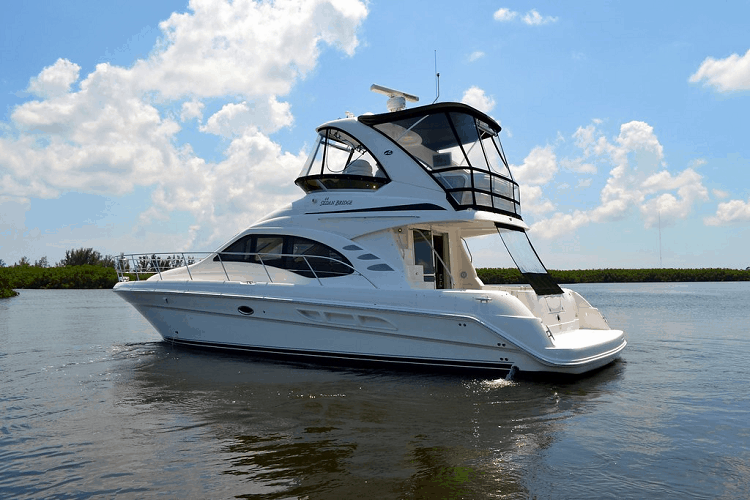
A sedan bridge is typically 35-65 feet long and offers the captain or navigator excellent visibility. What’s more, the cockpit level in a Sedan bridge is close to that of the boat’s aft deck. For this reason, this powerboat does not need a ladder or stairs. Access to the cockpit is relatively easy on the Sedan Bridge.
- It has plenty of room in the salon.
- They are easier to operate, clean, and wax.
- Not perfect for rough waters.
Other types of powerboats include;
With a pointed bow and flat bottom, skiffs are perfect for navigating shallow waters. They come in different lengths and sizes. It is easy to operate a skiff using a basic steering console.
Game boats are useful in game fish pursuits such as tuna and marlin and use diesel or petrol engines. These boats are large in size and made of fiberglass. They are also equipped with cooking galleys, plumbing systems, and sleeping berths.
Motor Yacht Boats
These are primarily leisure boats. The standard length of one is 12m and above and can hold 1-2 diesel engines. They are great for both short and long family trips.
Wakeboards/ Ski Boats
Although they look alike, wakeboards and ski boats have variations in terms of actions. Inboard ski boats need powerful acceleration. The shape of the propeller and engine also brings out noticeable differences.
On the other hand, inboard wakeboards have a V-drive engine system, huge wake, and deep hulls to get the boat in motion.
Factors to Consider When Choosing a Motor Boat
With over 30 motorboats to choose from, how can you find the perfect type for you? Below are factors you need to keep in mind before making the decision.
New or Preowned Motor Boat?
This should be one of the factors to consider when thinking about buying a boat. New boats are the best choice if you have saved for the purchase or money is not a problem. One advantage of buying a new boat is they have a warranty, so the repairs are covered in case of a malfunction.
What if you do not have enough money to get a new motorboat? Get a pre-owned one. However, ensure that it is thoroughly checked by a motorboat professional.
Reason and Frequency of Using the Motor Boat
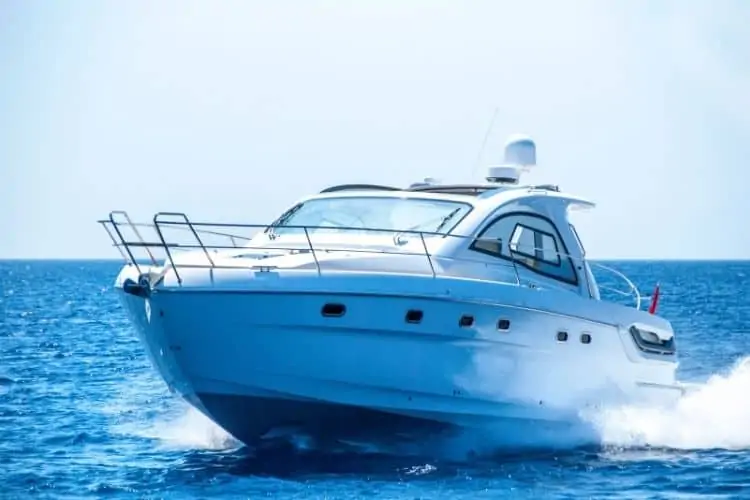
When choosing a motorboat, understand the reason why you need the boat. Is it for fishing? Will it be one of your entertainment assets? Or will it serve as a sailing boat or for family trips? Once you discern why you need the boat, you will make the right choice when choosing the motorboat.
After knowing what the boat will be used for, determine how often you will need it. Why? If the boat is for fishing, you need to understand how long the fishing seasons in your area last. What if the boat is for family trips? You need to tell when the weather is great for outdoor sports and when schools take a break so you can take the kids for a vacation.
Motorboats depreciate fast in the first year of purchase. If you discover that you will only take the boat on the water once every few months, the best decision is to wait. By doing so, you will save yourself the agony of depreciation and maintenance fees.
Thinking about the reason and frequency of using the boat beforehand will help you maximize your investment.
Motor Boat Use
If you are getting confused looking at different motorboats, here are a few questions to reflect on and help you make the decision.
- Are you looking to impress guests and business associates?
- Do you want a motorboat that fits on a trailer?
- Are you looking for a boat that can hold your family?
- Is the boat for water sports?
- Do you have experience in motorboating?
- Are you looking for a multi-purpose boat?
- Do you need help operating the powerboat?
- How much boat loan payment can you afford monthly?
Finding answers to the above questions will help you minimize your options.
Your Location
Before buying a speedboat, consider whether you have access to a water body. If you do have access to a body of water, confirm whether the waterways are appropriate with the use and type of boat you want. For example, if you buy a motorboat for fishing and live close to a lake, check whether fishing is allowed on the lake.
The location also plays an important role in terms of storage. Are there slip options and marinas in your area? Are boats allowed on the streets by the homeowner’s association? Considering these options before purchase will help you find the best storage options when you buy the motorboat.
Type of Motor Boat
As previously stated, there are plenty of types of motorboats. Nevertheless, they all will not match your user needs. For starters, consider the size of the boat. How many people are you planning to have onboard?
Do you need space for fishing gear? Does your boat require sleeping accommodations? These factors will determine the size of the powerboat you need.
Besides, take into consideration the condition of the motorboat. For pre-owned motorboats, consider whether they will meet both your short and long-term goals. Moreover, calculate how much you will spend on maintenance as old boats need more repairs.
Type of Hull
There are three main types of powerboat hulls; displacement hulls, planing hulls, and semi-displacement hulls.
Displacement hulls are found in heavy vessels such as tugs and trawlers. They are fuel-efficient and can navigate through rough seas. Unfortunately, they are not fast, making them ideal for long distances.
Planing hulls, on the other hand, skim over the water at high speeds. Made of lightweight materials, planing hulls are powered by powerful engines. They, however, have high costs of maintenance and fuel consumption.
Semi-displacement hulls offer both speed and functionality. Although they are not as fast as planing hulls, they achieve reasonable speeds and cruise through rugged seas. Many boat builders and designers prefer semi-displacement motorboats.
Storage also plays a role when choosing the type of speedboat. Some motorboats can fit on trailers and others in a storage unit area. Keep in mind that the bigger the boat, the larger the storage space, trailer, and towing truck. Huge boats may force you to get permits and hire professionals when moving.
Also, pay attention to storage costs during winter or when you are not using the motorboat.
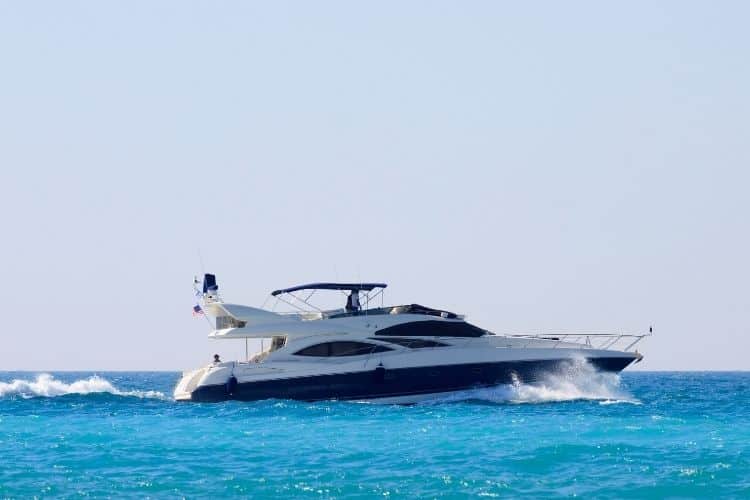
How much will the motorboat cost you? By cost, consider the upfront cost of buying the boat, maintenance, storage fees, gear, fuel, accessories, trailers, and hitches. Besides, you need to set money aside for boat insurance.
Boat insurance covers physical damage on the motorboat, loss, and damage of personal effects on the boat and injuries in the event of a boating collision. Talk to your insurer before purchase to get a quote on expected insurance costs.
On the other hand, if you are not looking to pay upfront, you can look into historic lows. Today, there are plenty of marine lenders who can finance your boat loan for 10 to 20 years. Before choosing a marine lender, determine carefully whether your cash flow can sustain that long-term loan.
Legal System
Different states have different regulations. For example, some states require boat operators to own an operator’s card to prove their competence. Therefore, check what the laws require of you as a boat owner before the purchase.
The same applies to buying a pre-owned motor; ensure the seller transfers the motor boat’s ownership under your name. What if the seller cannot find proof of ownership? Ensure you get a declaration under oath from them about why they do not have proof of ownership.
You must have browsed through different boat brands when looking for a motorboat. Good thing, most motorboat brands have boat owners clubs where you can get crucial information about boats. Here, you can ask questions and tips about the brand before the purchase.
Besides, it is much cheaper to make an online purchase. However, if you have not made the final decision yet, attend a boat show to view and access the different models and brands available. Talk to experts and ask their opinions based on your intent on the motorboat.
You must ensure that a motorboat is seaworthy, especially pre-owned boats. Walk around the boat and access the vessel. Next, take the motorboat for a sea trial and gauge whether there are any problems.
If you are inexperienced in boating, a shiny, clean motorboat may blind you. Therefore, hire a professional marine surveyor as you may miss some important issues. Once you are done with the sea trial, haul the motorboat out of water for the surveyor to inspect the parts under the waterline. Inspecting the powerboat before the purchase will save you from making a wrong financial investment.
Whether buying a new or used boat, find out what else is included in the purchase. Have the seller provide you with a list of equipment included in the sale. You can then choose to take the whole package or shop the amenities on your own.
Question: Can I purchase a boat without qualifications?
Answer: Yes. Owning a private motorboat does not necessarily mean you need qualifications. However, there are advantages to having one.
Question: Which are the best motor boats for beginners?
Answer: Dinghies, bowriders, and pontoon boats are some of the best motor boats for beginners. They have simple propulsion systems and are more flexible.
Question: Should I buy a new or pre-owned motorboat?
Answer: Buying a new motorboat is the wisest decision because you get exactly what you are looking for. Sadly, new motorboats are expensive compared to pre-owned boats. Buying a used boat will save you money, and if not inspected thoroughly, you may find yourself with a lemon.
Question: What do I need to know about motorboat coverage?
Answer: Some small motorboats are covered on a homeowner’s policy, while large motorboats require a separate insurance policy. Also, boat insurance offers limited coverage on your personal effects.
Since there are numerous types of motorboats in the market, you find the ideal choice for you. Pick that motorboat that fits your needs, family, speed, and budget.
Personal watercraft are perfect for 1-2 riders, while cuddy cabins are family-friendly. In terms of entertaining guests, express cruiser boats, superyachts, and Megayachts are the real deal.
Take your time going through the different types of powerboats, ask expert opinions, and make an informed investment for your money.
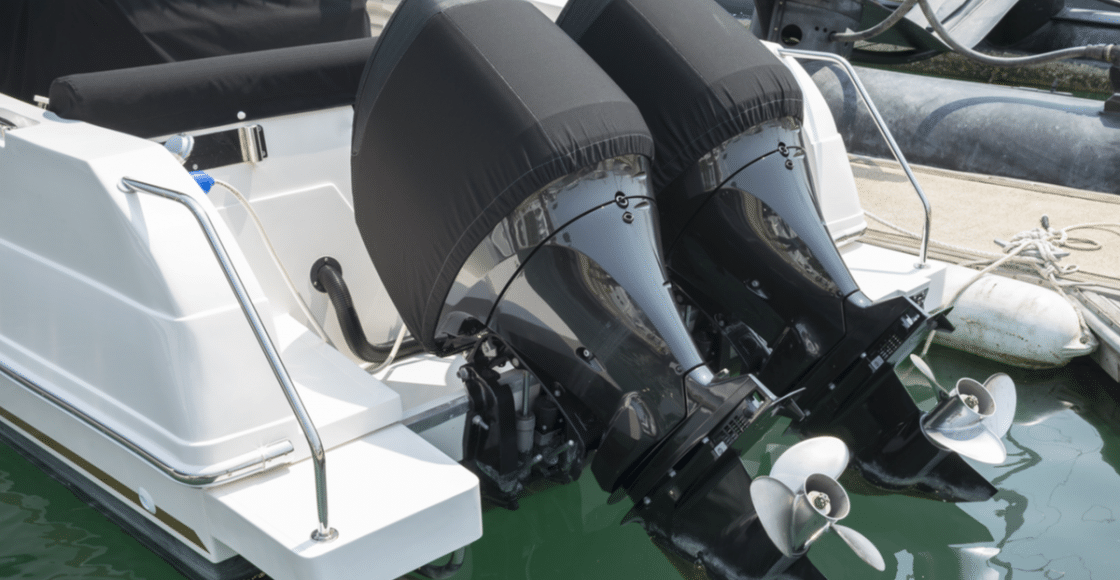
How Much Does a Boat Motor Cost

Table of Contents
Last Updated on January 14, 2022 by Boatsetter Team
Boat motors can set you back from a few hundred dollars at a yard sale to anything in the thousands of dollars. A few hours searching the web can give you a great idea of the types of motors and the different features available and the wide range of prices for each motor.
Like when you make any other purchase, it is important to consider a wide range of factors. Among the many other considerations, you should consider the type of boat you have, including its weight and hull capacity, your expected motor usage, and your overall expectations from the new motor that you purchase.
Boat Weight
The weight of your boat is one of the most critical factors to consider as an initial step. Heavier boats will generally need bigger and stronger motors to give you enough control in more treacherous waters. Also, you’ll generally need a more powerful motor to navigate the waters on bigger, heavier boats.
Hull Capacity
Hull capacity is another very important factor to consider. Some boats can only handle a certain amount of extra weight and are also limited in size. You’ll certainly need to see if the new motor is actually going to fit on your boat. Always be sure to check the manufacturer’s specifications when it comes to how much extra weight your boat can handle. You certainly don’t want to buy a motor that weighs 1000 pounds for your little skiff!
Finally, you’ll also need to think about how much power you want your new motor to have. We’ll look at this part of the equation in a lot more detail throughout the rest of this article.
How Much Horsepower Will I Need?
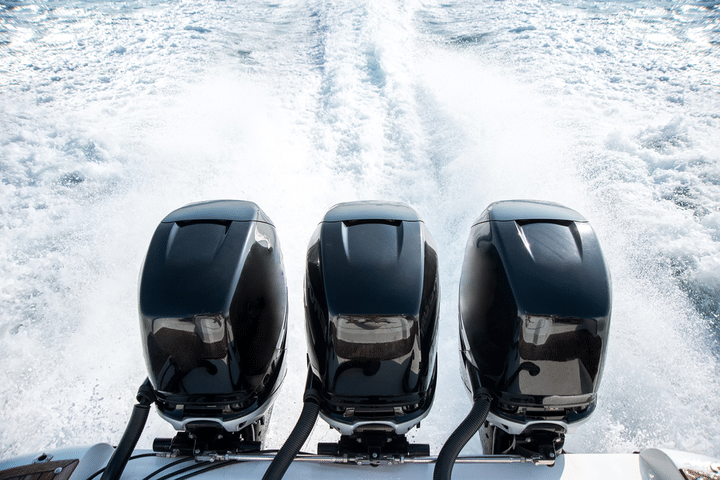
It might surprise you to learn that some pontoon boats now come with as many as 900-horsepower motors . So even if you are looking for a motor for your pontoon boat , you will quickly realize that there are many factors to consider.
Several things can help you determine how much horsepower you need. Think about the horsepower-to-weight ratio of your boat, how much fuel efficiency you’ll need, and how you will generally be operating your boat.
First, as we discussed earlier, you’ll need to consider the weight of the boat. The boat horsepower-to-weight ratio is simple to calculate as horsepower per pound. If your boat weighs 2,000 pounds and it has a 200-horsepower engine, 2,000 divided by 200 gives you a result of 10 pounds per horsepower. The lower the number, the faster your boat will go. While some motors may give you the same horsepower result, you’ll be adding extra weight with each additional motor too.
Although some high horsepower motors do not necessarily lead to more fuel usage, the amount of horsepower you choose will also impact your fuel efficiency. If you run a gas motor between 3,000 and 3,500 rpm and a diesel motor at three-quarters throttle, you’ll reach optimal fuel efficiency . A lower horsepower motor at full throttle uses more gas than a high horsepower motor does with less throttle.
Types of Motors
Outboard motors can range from under $100 to almost $100,000, depending on factors like power, make, model, and a few other things. Your specific needs will help you determine what size and power motor you need for your boat. At that point, you can start comparing brands in that range of power while considering all of the various options like electric starting, manual or power tilt, electronic fuel injection, and so on.
At Boatsetter, we offer an easy way to find boats of all types . It is a good idea to try out some of our boats with different types of motors before you commit to buying one yourself. You can explore our privately owned, worldwide selection of boats, connect with boat owners and captains, set the dates for your boating adventure, and start your Boatsetter experience.
After trying out a few of our boats, it might be helpful to study spreadsheets with different specifications for each type of motor in terms of color, shaft length, weight, etc. A professional retailer is probably the best way to go if you will be using your motor a lot and if you need some options that are slightly beyond the standard offerings.
A Few Other Things to Consider
You will need to think about how you plan to use the motor that you buy. This plan will have a big impact on the cost of the motor if you do not want to spend top dollar but are mostly looking for the best value possible.
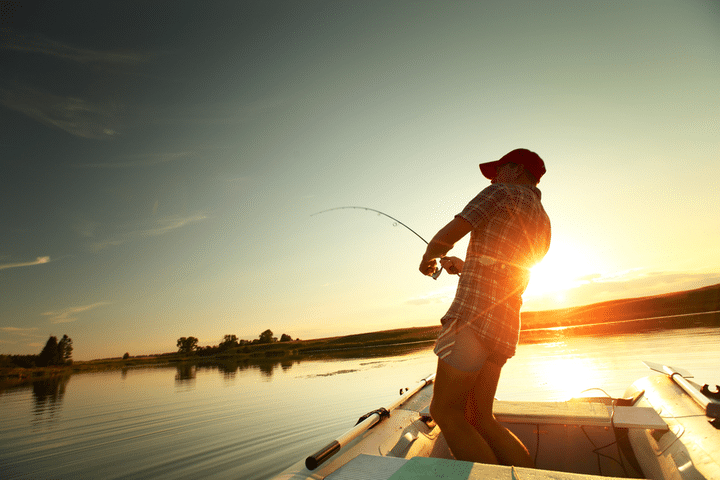
Those looking for a recreational boat that they can use on fishing trips (like a bass boat ) will not need as much power or a top-of-the- line model as a cabin cruiser or someone who runs a charter service and is looking at a lot of hours of motor usage. If you are in this category, a quick search on Craigslist or among some local yard sales might lead you to exactly the type of motor you’ll need.
Also, you’ll need to consider your power needs when you are looking for your motor. If you have a small boat, you definitely won’t need an outboard motor with a lot of horsepower. Knowing what kind of boat you need the outboard for, how you use your boat, and where you are planning to use your boat (saltwater versus freshwater) will help determine the level of power and other specifications for making the right decision.
Some Further Options
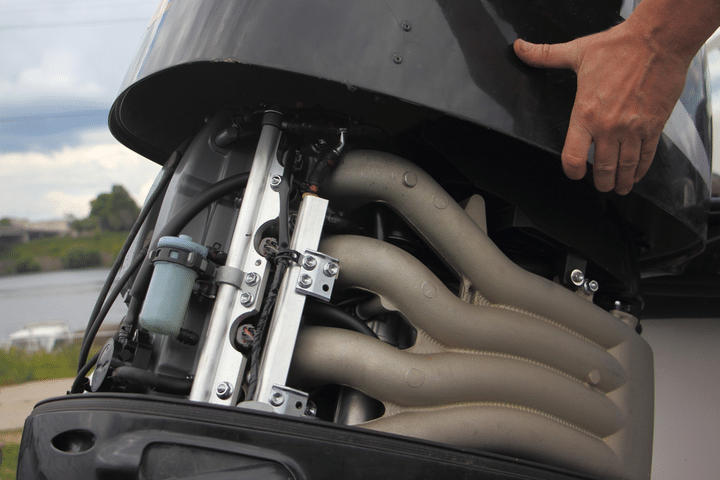
The outboard motors of today have so many options you can select from to make the most of your time on the water. Some different types of outboard motors include two-stroke motors, which were the norm until recently. These motors require a mixture of fuel and oil to run well. Four-stroke engines are becoming much more common these days, and most new motors are four-stroke. These gas engines run quieter, burn cleaner and offer better fuel efficiency than two-stroke engines.
Are you looking for a top-of-the-line, brand new boat model , or do you just need something that works? Age is certainly a factor that can impact the cost of your outboard engine, but it also doesn’t necessarily mean that older motors will not meet your expectations. Sometimes the older models will work just fine if you are just looking for a little extra power to help guide you around the lake.
If you do want to explore some of the newer motors, there are ways for you to filter your options and select the motor that is just right for you and your budget. You can choose from a range of top-rated brands and models for nearly every outboard motor use and budget.
Making the Final Decision
When shopping for outboard motors for your boat, use all of these factors to make an educated decision. When you have the right motor, you’ll be ready to enjoy smoother, quieter, and more efficient trips on your personal watercraft.

Boatsetter empowers people to explore with confidence by showing them a world of possibility on the water. Rent a boat, list your boat, or become a Boatsetter captain today.
Browse by experience

Explore articles
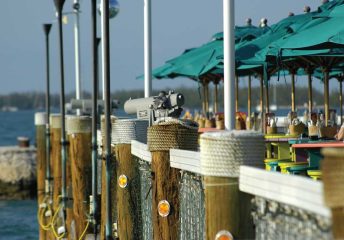
8 Key West Restaurants on the Water

Take on the Waves on a Mother's Day Boat Rental
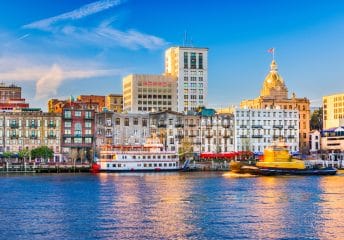
Best Restaurants in Savannah, GA on the River for Lunch and Dinner
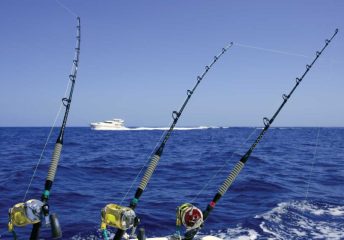
Fishing in Jacksonville, FL Guide

How Much Does a Boat Motor Cost? Uncovering the Price Factors
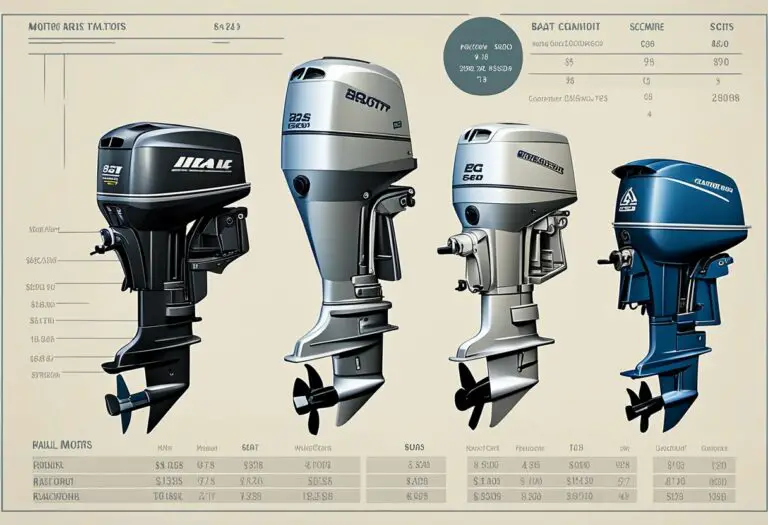
Overview of Boat Motor Costs
Boat motor costs can vary widely based on the type of motor and power output. Understanding these variables is crucial for anyone in the market for a boat motor. With two decades of experience in boating, one can confidently navigate the factors influencing motor prices.
Types of Boat Motors
Boat motors primarily come in two types: outboard and inboard. Outboard motors are detachable and mounted on the outside of the stern. They offer the flexibility of removal for repairs and storage. Inboard motors , on the other hand, are built into the boat, offering more power and are typically found in larger vessels. Additionally, there are electric boat motors which are becoming more popular due to their environmental benefits and lower operating costs.
Average Price Range
The average price range of boat motors diverges considerably depending on size and power. A small outboard motor with a modest 2.5 horsepower may start at just around $1,000, appealing to those with limited needs and budgets. Moving up the scale, a mid-sized outboard motor with 115 horsepower could be in the region of $12,000. For high-powered maritime activities, a large 300 horsepower outboard motor might cost around $26,000, as detailed by Boater Pal .
- Small (2.5 HP): ~$1,000
- Medium (115 HP): ~$12,000
- Large (300 HP): ~$26,000
Prices for inboard motors and electric motors can be significantly different due to their complexity and technology. It’s noted by Boatsetter that outboard motor costs can stretch from under a hundred to almost a hundred thousand dollars, influenced by brand, power, and model.
Factors Influencing Boat Motor Prices

With two decades of expertise in the boating industry, it’s evident that several key factors play a role in determining the cost of boat motors . These include the motor’s type and power, the brand and quality, and whether the motor is new or used.
Motor Type and Power
Type: Boat motors are broadly classified into inboard and outboard motors. Inboard motors are typically more expensive, often costing 10-25% more than their outboard counterparts for the same horsepower.
Power: The price escalates as the horsepower increases. Smaller motors with less horsepower can cost just a few hundred dollars, whereas high-power motors, like a 600 HP engine, command premium prices.
Brand and Quality
Brand: The manufacturer of a boat motor significantly influences its price. Well-known brands such as Mercury, Yamaha, and Honda are trusted for their quality and, thus, may command higher prices.
Quality: A motor’s durability, materials used, and technology also determine its cost. Higher quality motors, which use advanced materials and innovative features, justify higher prices due to these enhancements.
New vs. Used
New Motors: Brand-new motors come with the latest technology and warranties, contributing to their higher prices.
Used Motors: On the other hand, used boat motors are subject to depreciation, which can make them considerably more affordable. However, they may carry a risk of earlier maintenance and no warranty.
Motor Types and Their Costs

When discussing boat motors, costs can vary considerably based on the type. Each type offers different benefits and caters to specific boating needs. Their cost is influenced by power, size, and technology used.
Outboard Motors
Outboard motors, typically mounted on the boat’s transom, are self-contained units including engine, gearbox, and propeller. They range from under $100 for simple, small motors to nearly $100,000 for advanced, high-power models . A mid-range outboard motor with 115 horsepower might cost around $12,000 .
Inboard Motors
Inboard motors are installed inside the boat’s hull. They provide a consistent center of gravity and are generally used in larger vessels. A quality inboard engine can cost about 10-25% more than outboard motors with similar horsepower, translating to thousands of dollars more.
Sterndrive Motors
Sterndrive motors, also known as inboard/outboard motors, combine features of both inboard and outboard types. The engine lies inside the boat while the outdrive unit is located outside the hull. Sterndrive motors can offer better performance and typically cost between outboard and pure inboard motors.
Electric Motors
Electric motors are becoming more common due to their eco-friendliness and lower operating costs. The price of an electric outboard motor can start at around $1,130, excluding batteries.
With two decades of experience in boating, they understand the intricacies of motor costs and the impact on total boat ownership. The choice of motor will depend on one’s budget, type of boat, and intended use, considering both initial purchase and future maintenance costs.
Cost Breakdown

With 20 years of boating experience, they understand that the initial purchase price of a boat motor is only part of the financial commitment. A complete breakdown of costs includes not only the acquisition but also installation and ongoing maintenance expenses.
Purchase Price
The purchase price of outboard motors can start as low as $900 for small, portable motors and soar up to $100,000 for high-performance models. For instance, a mid-sized motor with 115 horsepower might cost around $12,000 , while larger outboard motors with 300 horsepower can be approximately $26,000.
Installation Costs
Installation can be a significant cost, often ranging from several hundred to a few thousand dollars. This includes labor, which varies depending on the complexity of the motor and the rates of the service provider. It is recommended to acquire quotes from certified technicians to ensure proper installation.
Maintenance and Repairs
Maintenance and repairs are vital to the longevity and performance of a boat motor. They can detail to their customers that routine maintenance could include oil changes, gear lubrication, and replacement of wear items like spark plugs and filters. Depending on the motor’s use and conditions, annual maintenance costs can range from hundreds to thousands of dollars. Additionally, unexpected repairs can substantially increase these costs.
Ways to Save on Boat Motors
Boat motors can be a significant investment. Consider several strategies to manage costs without compromising on quality, based on 20 years of boating experience.
Buying Used Motors
Purchasing a used motor can lead to substantial savings. Buyers should seek out well-maintained models and check the usage history thoroughly. Inspections by certified mechanics can prevent costly future repairs. Many boaters prefer engines with lower hours as they generally indicate less wear and tear.
Seasonal Discounts and Deals
Boaters often find the best prices on motors during off-season sales when dealers are eager to move inventory. Seasonal discounts and deals are also common around boat shows or during clearance events. It is wise to stay informed about upcoming sales and promotions at local dealerships and boating supplies stores.
Maintaining Your Motor
Regular maintenance extends the life and performance of boat motors, ultimately saving money. They should follow the manufacturer’s maintenance schedule and use quality parts. Proper storage during the off-season is crucial to prevent avoidable damage. An efficiently running motor also conserves fuel, which reduces operating costs over time.
Additional Costs

When considering the purchase of a boat motor, buyers should be aware that the upfront cost is only part of the overall financial commitment. They must also consider ongoing operational and ownership costs.
Fuel Efficiency and Consumption
Fuel efficiency varies significantly between motor types and models. For instance, a four-stroke engine typically offers better fuel economy than a two-stroke engine. Boaters can expect modern outboard motors, such as those from Yamaha or Mercury, to have improved fuel efficiency. However, the larger the engine, the more fuel it will consume. Consequently, a motor’s horsepower and efficiency directly impact the operational cost.
Boat motor insurance is another key cost to consider. Insurance rates depend on the motor’s value, horsepower, and the type of coverage selected. Outboard motors, particularly high-performance models, may increase insurance premiums. It is crucial to research and compare different insurance options to find the most cost-effective coverage that still provides ample protection.
Frequently Asked Questions
Drawing on over 20 years of boating experience, this FAQ addresses specific queries about boat motor costs, providing reliable insights to inform your purchasing decisions.
What factors affect the pricing of outboard motors?
Outboard motor pricing can vary extensively based on factors such as brand reputation, horsepower (HP), technology integrated into the motor, materials used in construction, and added features like digital controls or power steering.
What is the average price range for a new 4-stroke outboard motor?
The average cost for a new 4-stroke outboard motor can range from approximately $1,000 for models with less than 15 HP, to more than $26,000 for powerful engines with 300 HP. This price range covers entry-level portable units to high-end models suitable for larger vessels.
How do used boat motor prices compare to new models?
Used boat motors generally cost significantly less than new models. The depreciation of boat motors means that buyers can often find used options with good performance for a fraction of the price of a new one, though additional factors like condition, age, and maintenance history play pivotal roles.
What are the typical costs involved in maintaining a boat motor monthly?
Monthly maintenance costs for a boat motor largely depend on usage, with figures that might include storage fees, winterization, regular servicing, and part replacements. However, budgeting at least a few hundred dollars yearly is advisable to account for these typical costs .
How does horsepower influence the cost of an outboard motor?
Horsepower has a direct impact on the cost of an outboard motor; higher HP typically requires more sophisticated technology and materials, leading to higher prices. A motor designed for speed and power to handle larger boats is considerably more expensive than lesser horsepower motors suitable for small watercraft.
Is it cost-effective to replace an old boat’s motor with a new one?
Replacing an old motor with a new one can be cost-effective, especially if the old motor requires frequent repairs or is no longer reliable. New motors often offer better fuel economy, lower emissions, and come with warranties that can make them a wise investment in the long run.
Leave a Comment Cancel reply
Save my name, email, and website in this browser for the next time I comment.
Keep in mind that we may receive commissions when you click our links and make purchases. However, this does not impact our reviews and comparisons. We try our best to keep things fair and balanced, in order to help you make the best choice for you.
As an Amazon Associate, I earn from qualifying purchases.
Vanquish Boats
500 Lewis Drive Carolina Beach, NC
+1 910-707-3599
© Vanquish Boats
Why Register?
You will be able to access:
Content tailored to your personal preferences, Favorite content saved within your briefcase, Media advisories, newsletters, and email alerts and PR contact information
Forgot Password
Enter your email below and we'll send a link to help you access your account.
Sorry, your email address is not recognized.
An email has been sent.
Instructions on how to reset your password have been sent to the email you entered.
FORD NEWSROOM
United States | English Select a location

Ford Media Center


COMMENTS
A run-of-the-mill motorboat will cost you, on average, between $10,000 and $20,000 with more extravagant models going for much more. How much does a cabin cruiser cost? The average mid-range cabin cruisers will cost about $250,000 and budget models at about half that amount.
The cost of a small boat, 6-10 feet, can cost anywhere from $500 to $800. If you're looking for brand-name superyachts, prepare to spend millions of dollars from the start. Style: If you care much about the style of your boat, recognize that the most stylish ones will cost more. Higher-end boats will cost more than less elegant ones.
April 8, 2024. Buying a boat is always an exciting venture. Add in the sleek, attention-grabbing luxury of a speedboat, and the prospect becomes even more appealing. The main hurdle for the average adventurer is the cost, which can average around $20,000-$60,000 or more depending on size and age. Just what is the average cost for a speed boat?
The cost of a Fish & Ski boat depends on factors such as the size, power, features, and the age of the boat. For a new Fish & Ski boat, expect to pay anywhere between $25,000 to $50,000 or more depending on the make and model. Some high-end models can cost as much as $75,000 or more.
Dock lines ($30 to $100 each) - Sized to your boat, four to six lines required. Fenders (also called bumpers) - To protect the boat from the dock ($20 to $60 each) sized to your boat, two to four required. Launch fees - Usually charged at most public ramps, and varies at about $5 to $15 per launch.
You could easily spend more than $50,000 as well. A motorboat with outboard motors and no cabin, often called a speedboat or powerboat, can cost anywhere from $20,000 used to many hundreds of thousands of dollars for new models. The high performance models, even secondhand ones, will start around $30,000 or more.
Updated on: April 16, 2024. Why use LendingTree? While boats can run from $200 for a small kayak to upwards of $15 million for a luxury yacht, the average cost of a new boat is $42,000. Used boats run about $10,000. But if you're looking to buy a boat, you'll shell out more than the sticker price.
The table below compares operating costs for a moderately sized sailboat and a similar-sized motorboat, estimating what the costs of owning the two different boats would cost on average. The figures are on the higher side. Buying Price 30 - Foot Sailboat 30 Foot Motorboat;
The average costs of owning a boat powered by a motor vary according to size, brand, engine power and features. Smaller motorboats start around $10,000 and can cost more than $100,000 in price. Luxury Yacht: Yachts are opulent and well-known for their opulence and amenities. Prices differ according to size, brand, features, and customization.
The 227 SSX from Chaparral is the company's Suncoast model. The cost has a suggested list price of roughly $66,000 and an average retail price of about $51,000. This vessel is a Stern Drive Power Boat with a 250-horsepower, gas-powered engine. The beam on this boat is 8'6," and the length is 23'.
Most people end up planning for the cost of owning a boat to run at between 15 and 25 percent of the boat's overall value. That's a wide range and plenty of boats will fall outside of it, with the general rule of thumb being that the larger and more complex any vessel is, the bigger a percentage it will require.
Motorboat insurance is a non-negotiable expenditure. The cost is influenced by factors such as the boat's value, type, size and your experience as a boat owner. Other variables include the intended use, navigational area, and storage location. Cost-saving tip #4. Bundle your boat insurance with your other policies.
Boat, motor and trailer cost: $98,455 (highly variable number depending on the boat you buy) Boat accessories and gear: $4,028. Legal (license and registration): $160. Ongoing annual cost (marina, insurance, gas and maintenance): $10,229 per year (estimated).
Because the size and amenities of this boat vary so wildly, the prices can vary wildly as well. A cabin cruiser will generally range anywhere from $100,000.00 to $500,000.00. Below $100,000, and you're probably looking at a cuddy cabin and above $500,000.00, and you're probably looking at a yacht or trawler.
Surveys for smaller, simpler boats will run approximately $15-20/foot so a 25-foot boat will cost approximately $300-$500 (or less if it's particularly simple). If the boat price is $5,000 a survey may not be worth it. If a boat is valued at say $150,000, then it should be done.
Keep in mind that even a secondhand high-performance boat will cost approximately $30,000 to $40,000 more than a brand new classic model. The speed that a speed boat can develop. The most significant difference between various motorboat types is the speed each can develop.
These powerboats use the following propulsion options: inboard engine or stern drive engine. There are a wide range of Motor Yacht for sale from popular brands like Sea Ray, Carver and Azimut with 4,067 new and 13,704 used and an average price of $387,358 with boats ranging from as little as $15,000 and $21,928,907.
While boat costs vary significantly, you can expect to pay anywhere from $15,000 to $75,000 for the average new vessel, and upwards of $100,000 for a more luxurious model. Taking out a boat loan ...
At the lower end of the market, it's possible to get third-party-only cover from under £100 per year, while a standard fully comprehensive policy for a yacht worth £100,000 can be as little as 0.5 per cent of its value. Moorings are often the biggest annual cost of boat ownership. The more convenient the location and facilities, the more ...
By cost, consider the upfront cost of buying the boat, maintenance, storage fees, gear, fuel, accessories, trailers, and hitches. Besides, you need to set money aside for boat insurance. Boat insurance covers physical damage on the motorboat, loss, and damage of personal effects on the boat and injuries in the event of a boating collision.
Types of Motors. Outboard motors can range from under $100 to almost $100,000, depending on factors like power, make, model, and a few other things. Your specific needs will help you determine what size and power motor you need for your boat.
The average daily rental price of a motorboat is: Cost for а small motorboat: $500 to $2200; Cost for а large motorboat: $700 to $3700; Rental fees can vary widely depending on where you go, but there are some general rules that apply across the board. If you want to try the typical Miami boat rental experience, that can cost you around $500 ...
Average Price Range. The average price range of boat motors diverges considerably depending on size and power. A small outboard motor with a modest 2.5 horsepower may start at just around $1,000, appealing to those with limited needs and budgets. Moving up the scale, a mid-sized outboard motor with 115 horsepower could be in the region of $12,000.
The cost includes a Nissan Leaf-compatible EV controller and a crashed donor car, but it doesn't include the 1962 Mercury Comet wagon. ... He's using the motor and battery pack from a crashed ...
DEARBORN, Mich., Aug. 21, 2024 - Ford Motor Company is taking additional actions to deliver a profitable, capital-efficient and growing electric vehicle business and add even more propulsion choices for customers that generate lower CO2 emissions. ... Low-cost, highly efficient electric vehicle platform.